Illustrated Guide to Seth Thomas Pocket Watch Dials
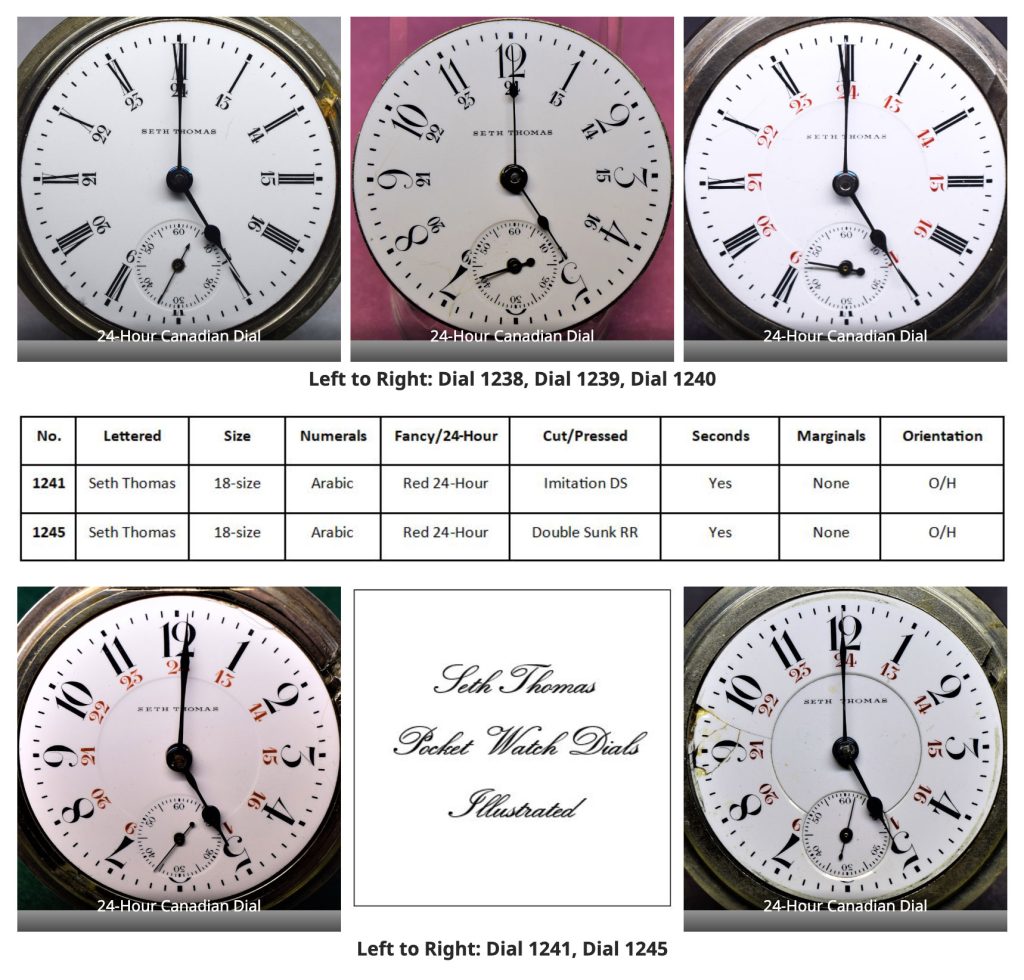
A guest post by Jonathan Luysterborghs. Seth Thomas pocket watch dials present with an appealing combination of elegance and practicality that compliments the beautiful engraving and high degree of craftsmanship and engineering genius that went into the production of Seth Thomas pocket watch mechanisms.
In order to fully and accurately document and communicate a detailed description of the pocket watches that we encounter; whether as a watchmaker, an historian or in our collections, we need to know the standard language and part numbers used by the manufacturers of our watches. The purpose of this article is to provide a clear, complete, and easy-to-use chart listing and describing original Seth Thomas pocket watch dials by their part numbers so that we can include that information clearly in our personal or professional records as we care for these venerable historic artifacts. The new chart several pages below shows the specifications for most standard Seth Thomas grade pocket watch dials. Because of the large quantity manufactured for Sears, Roebuck & Co, their “Century” dials are also described. Most of the dials for Named Grades and Private Labels such as Republic, Corona Watch Co., Colonial, Waldorf, Adonis, etc. are not provided with part numbers on the old chart shown on this page; but some are recognized, in the notes on dials, as having been manufactured by Seth Thomas. It is interesting to note the references to “snug” dials used on 6s and the 18sX16s dials for use in “snug cases”. This information was extracted from the 1904 Illustrated Price List, No 648, Seth Thomas Watch Movements, Trade Price List, October 15, 1904 shown on the right-hand side of this page. In presenting this information on the new charts the use of abbreviations and hashmarks was avoided in order to provide greater clarity, and to reduce errors in interpreting the information. Please feel free to copy, print, and use the new charts in your daily practice. Photographs of dials not listed on the old or the new charts will be presented in this article as they are of historical significance and interest to many people.
The importance of making historical background information freely available to all who have interest in the roots of the American clock and watch industry cannot be overstated. Information that is not freely shared not only confounds the research of present day horologists; but will likely be forever lost to the future generations of horologists.
The Pocket Watch Database, serving as a collective repository for the studies and research of many, is playing the greatest role in collecting, organizing, consolidating, and freely disseminating invaluable information to the horological community and the public at large.
It is important to remember that despite the benefits from all of the technological advances since the Gilded Age when many of our pocket watches of interest were manufactured; we must retain great respect for the technology, methods, and terminology of those times in order to fully appreciate and understand the artifacts that we are attempting to preserve.
These are some definitions and diagrams to clarify vocabulary and terms commonly used in the description and discussion of pocket watch dials:
The marginal minutes track may display black, red, or blue numerals at 5-minute or 1-minute intervals or not at all.
The minute track may be comprised of a ring, hash marks, or dots.
The hour track may represent the hours in Roman Numerals or Arabic Numerals.
The seconds bit may be sunk, pressed, flat, or it may be missing.
Dial Signature Font Styles commonly used on Seth Thomas pocket watches as seen on the Pocket Watch Database:
Much can be learned about this topic by browsing the Seth Thomas Watch Company Image Gallery on the Pocket Watch Database, and reading the various movement markings, dial types and signatures, and observing the styles of hands associated with each Seth Thomas pocket watch. There is also a Seth Thomas Private Labels Gallery available for viewing on the Pocket Watch Database. It is a great benefit to be able to freely observe a large collection of specimens, especially in various stages and degrees of restoration. The Pocket Watch Database plays the greatest role in collecting , organizing and disseminating this invaluable information.
Enamel Dial Surfaces
A pocket watch dial may be described as “Double Sunk” (often abbreviated DS) or “Double Cut” if the surface has been terraced by means of cutting three pieces of varying thicknesses and soldering them together after enameling. This creates a dial with three distinct surface levels.
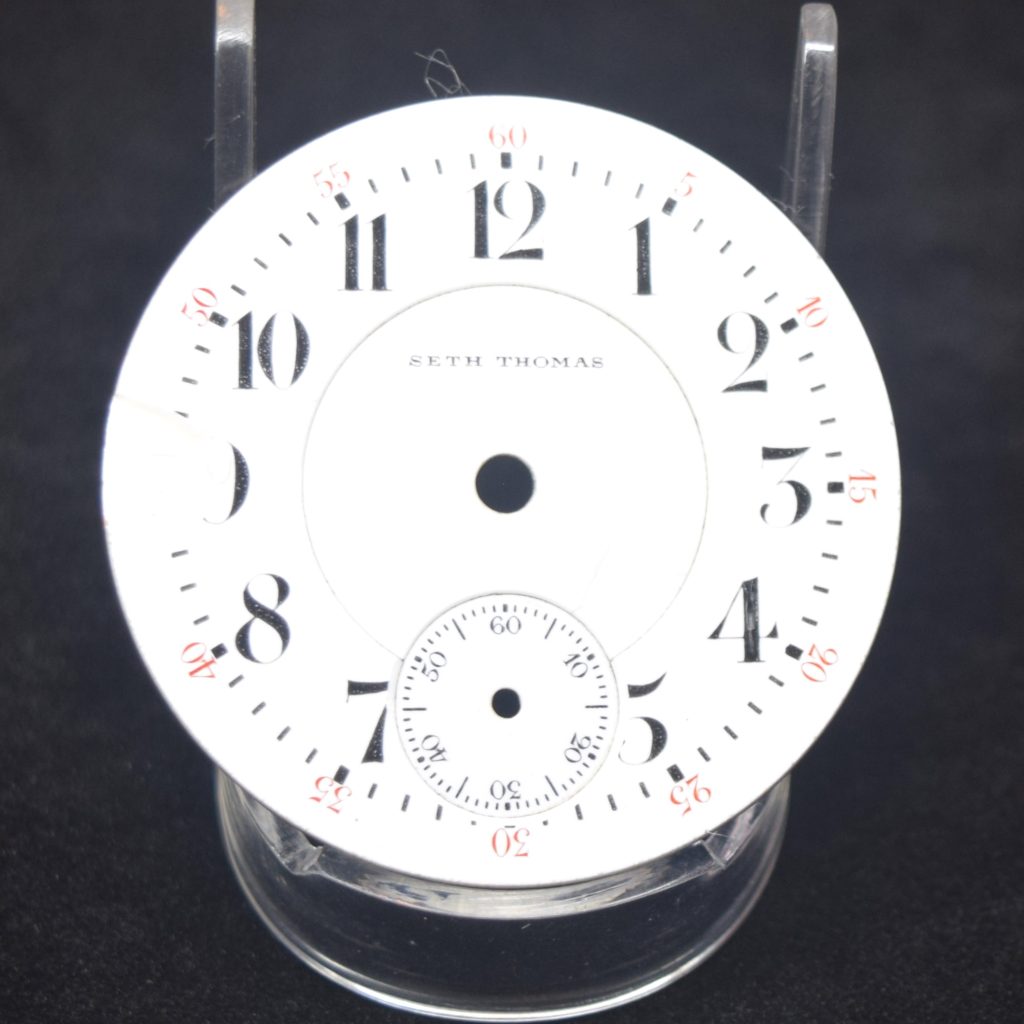
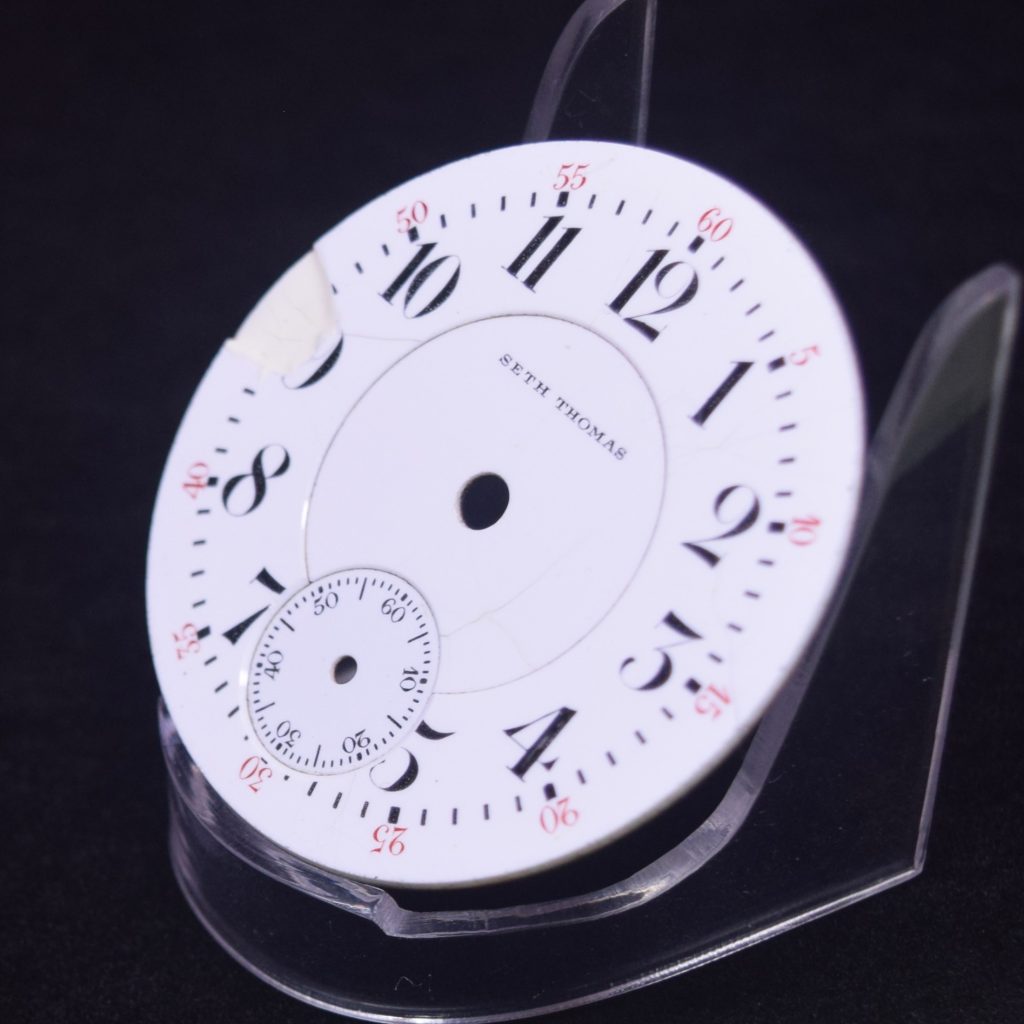
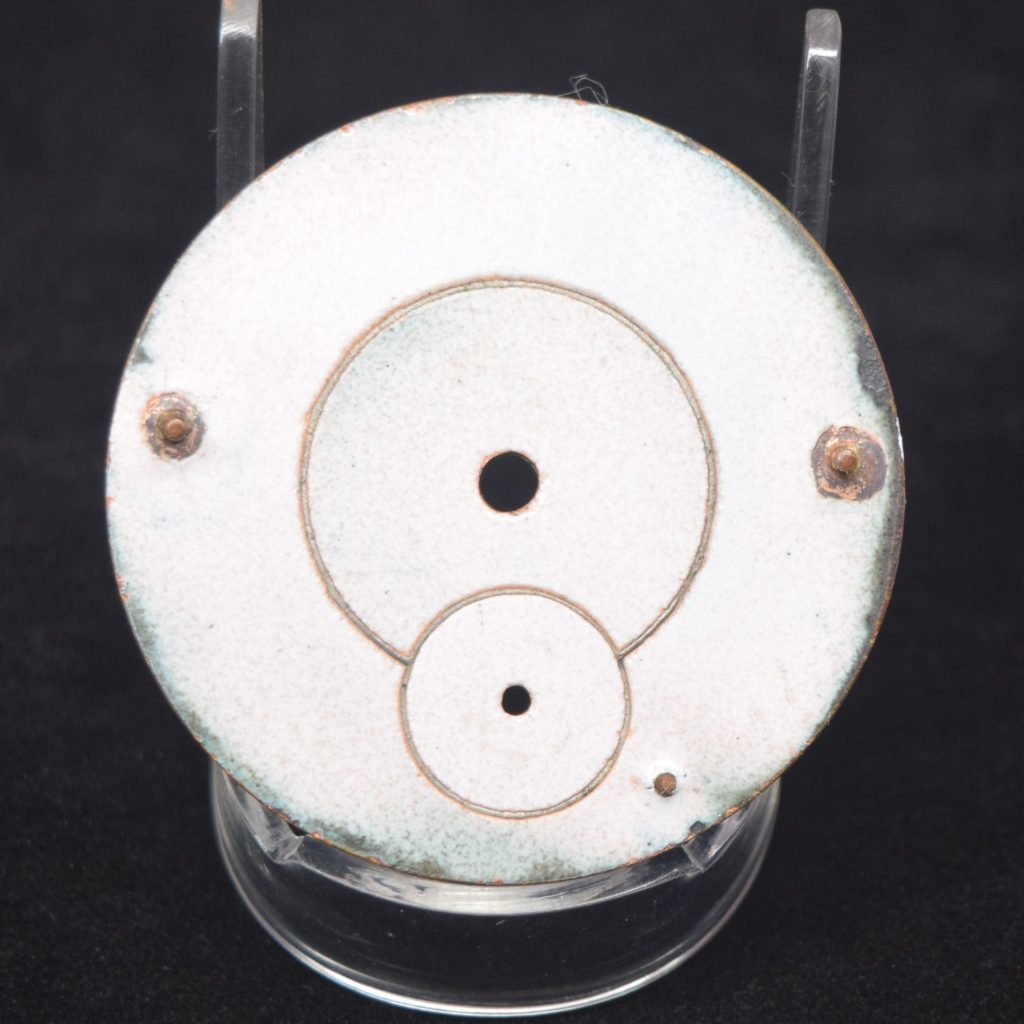
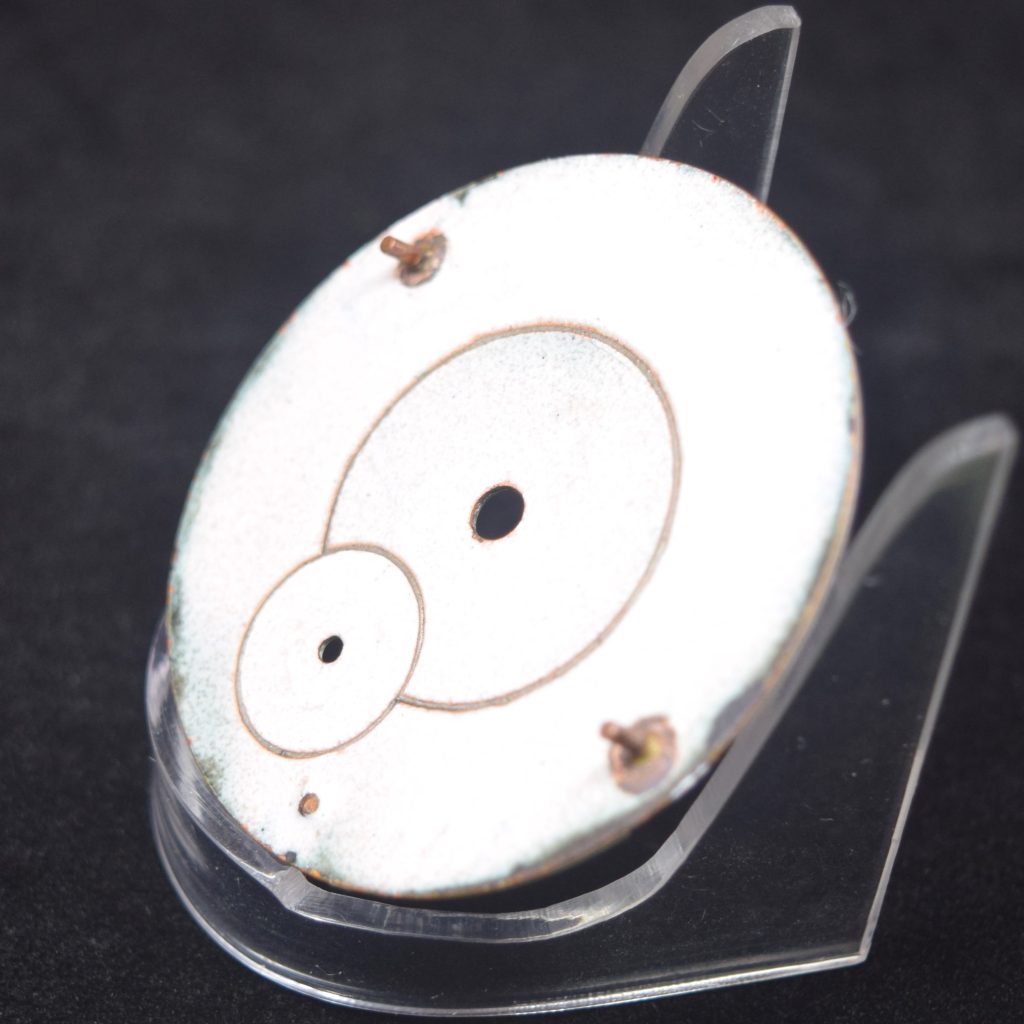
Double Sunk or Double Cut Pocket Watch Dial
“Single Sunk” or “Cut Seconds” refers to a dial where only the seconds bit is terraced below the rest of the surface of the dial by means of cutting pieces of different thicknesses and soldering them together after enameling.
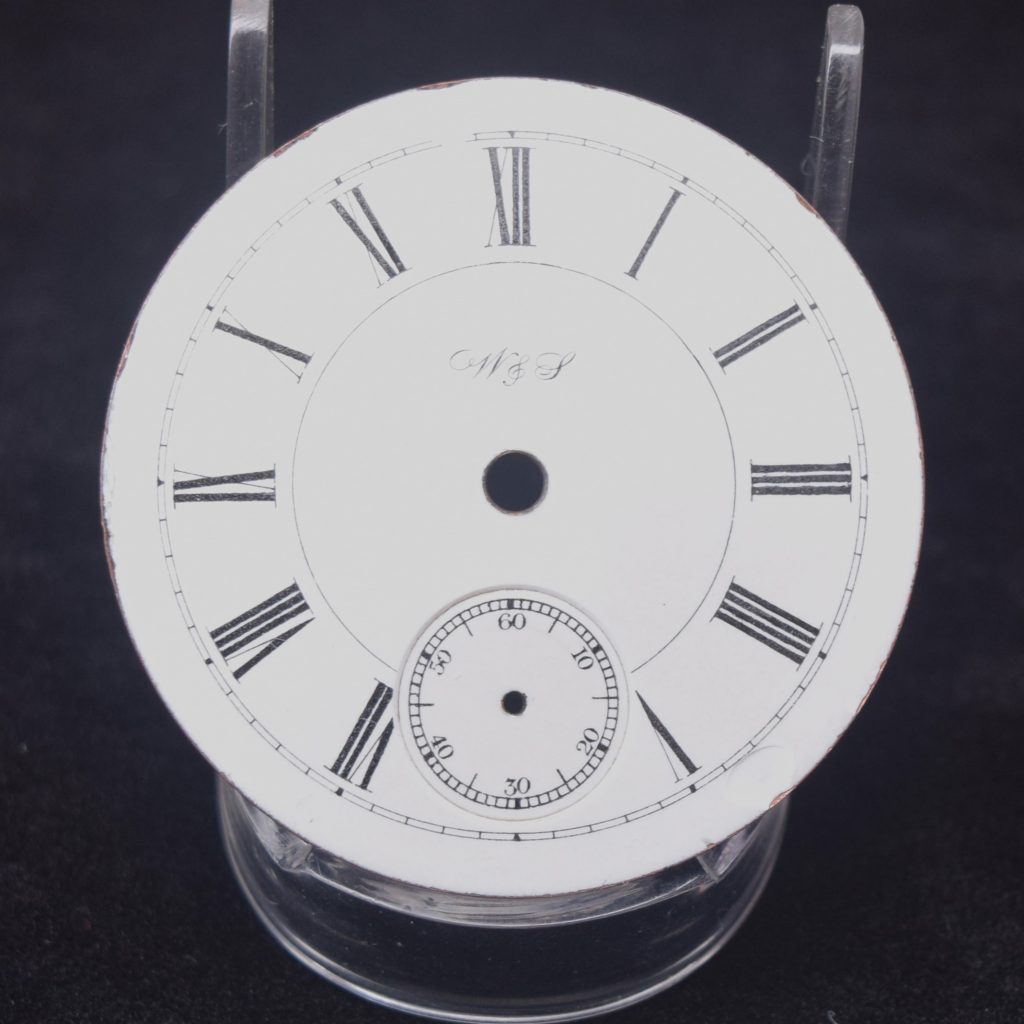
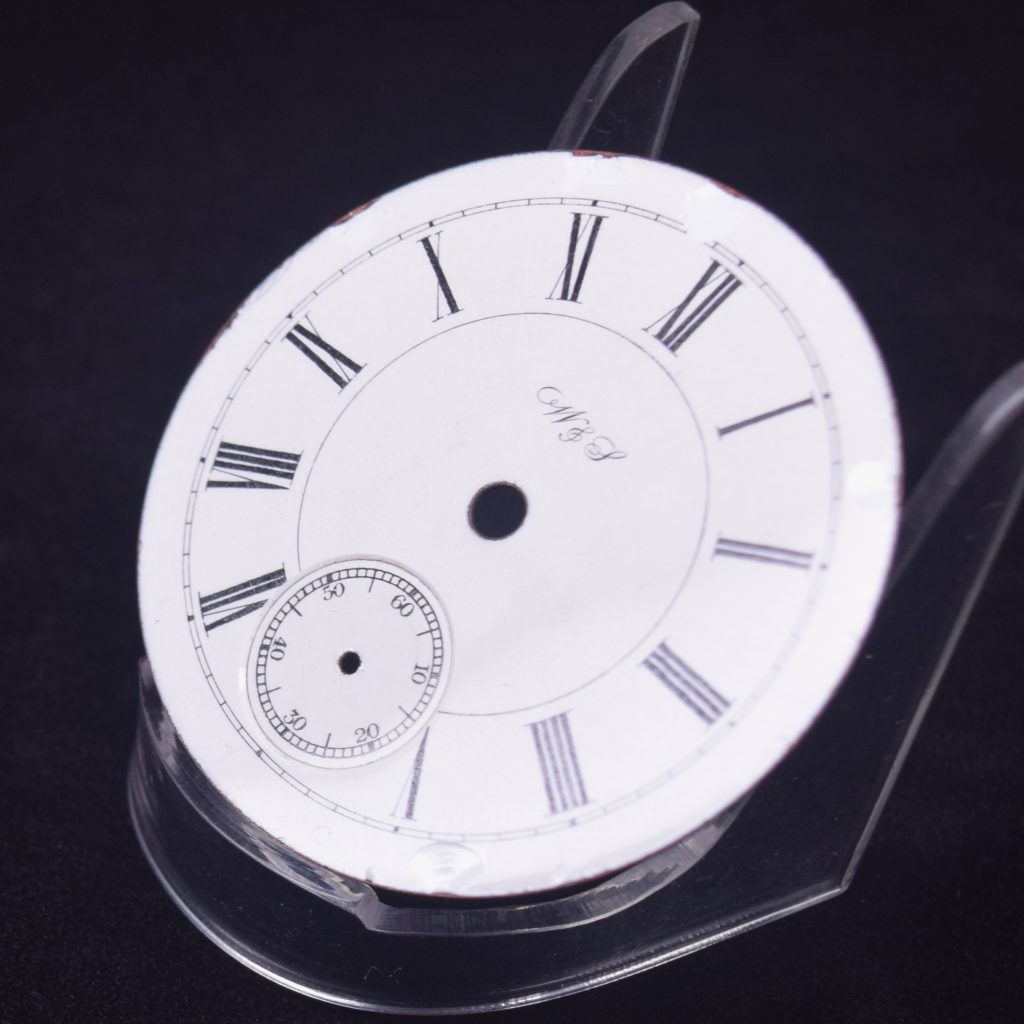
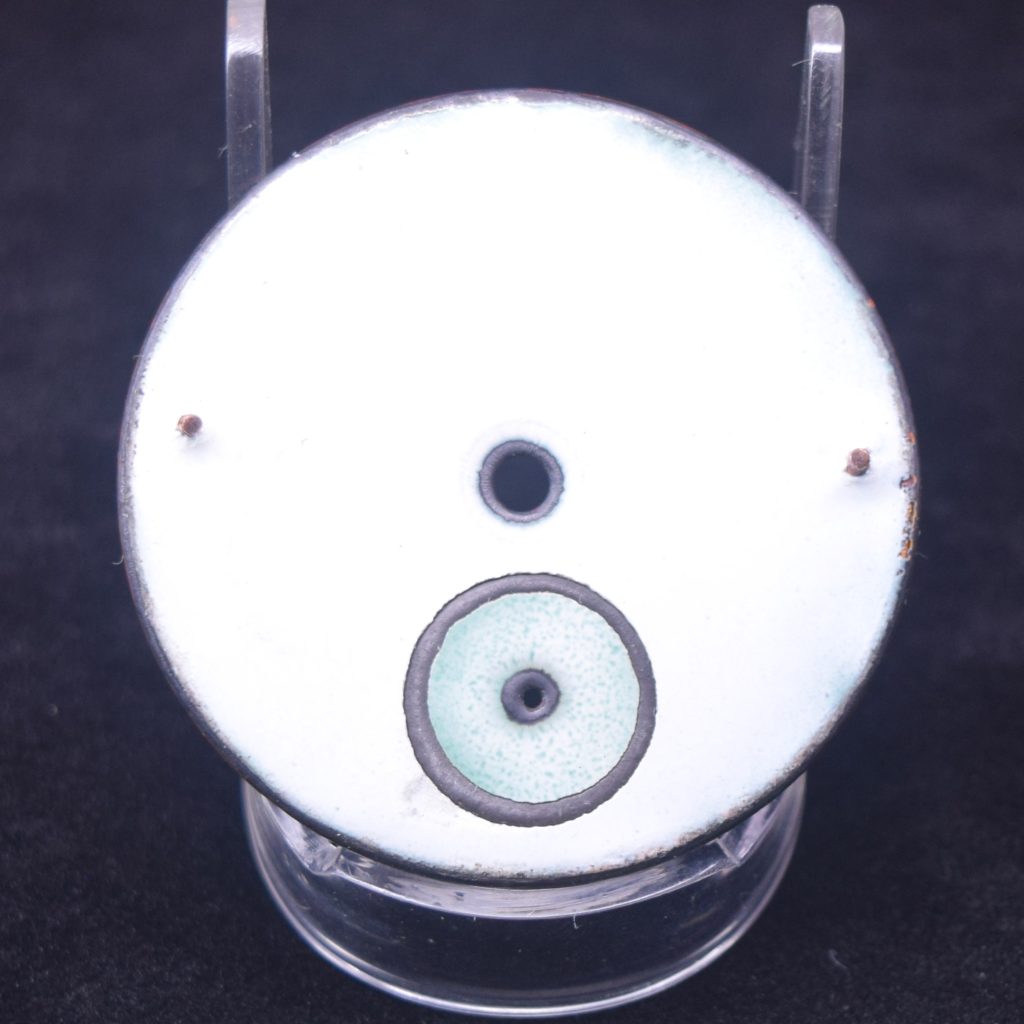

Single Sunk or Cut Seconds Pocket Watch Dial
“Pressed Seconds” is another way of obtaining a terraced appearance similar to single sunk or cut seconds without cutting and soldering the dial. Instead it is achieved by stamping the seconds bit into the copper disk prior to enameling and painting.
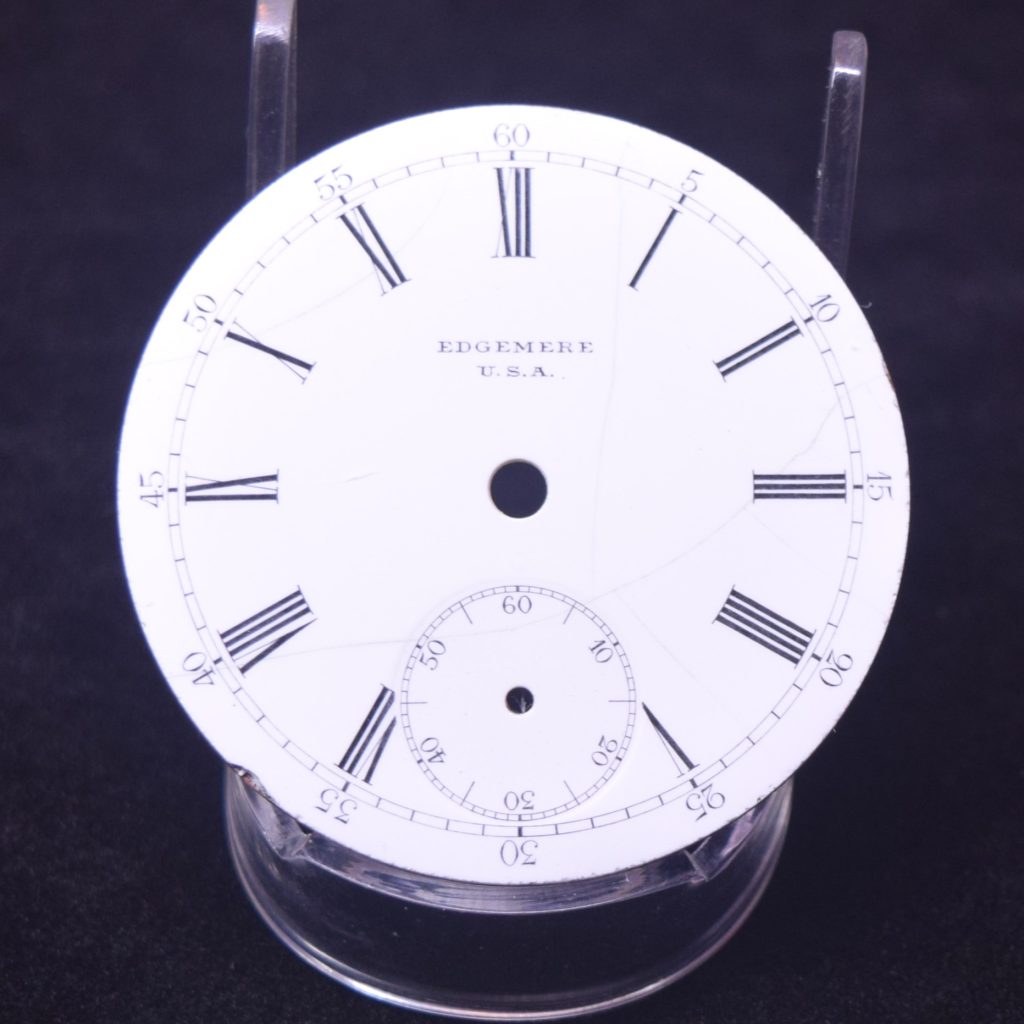


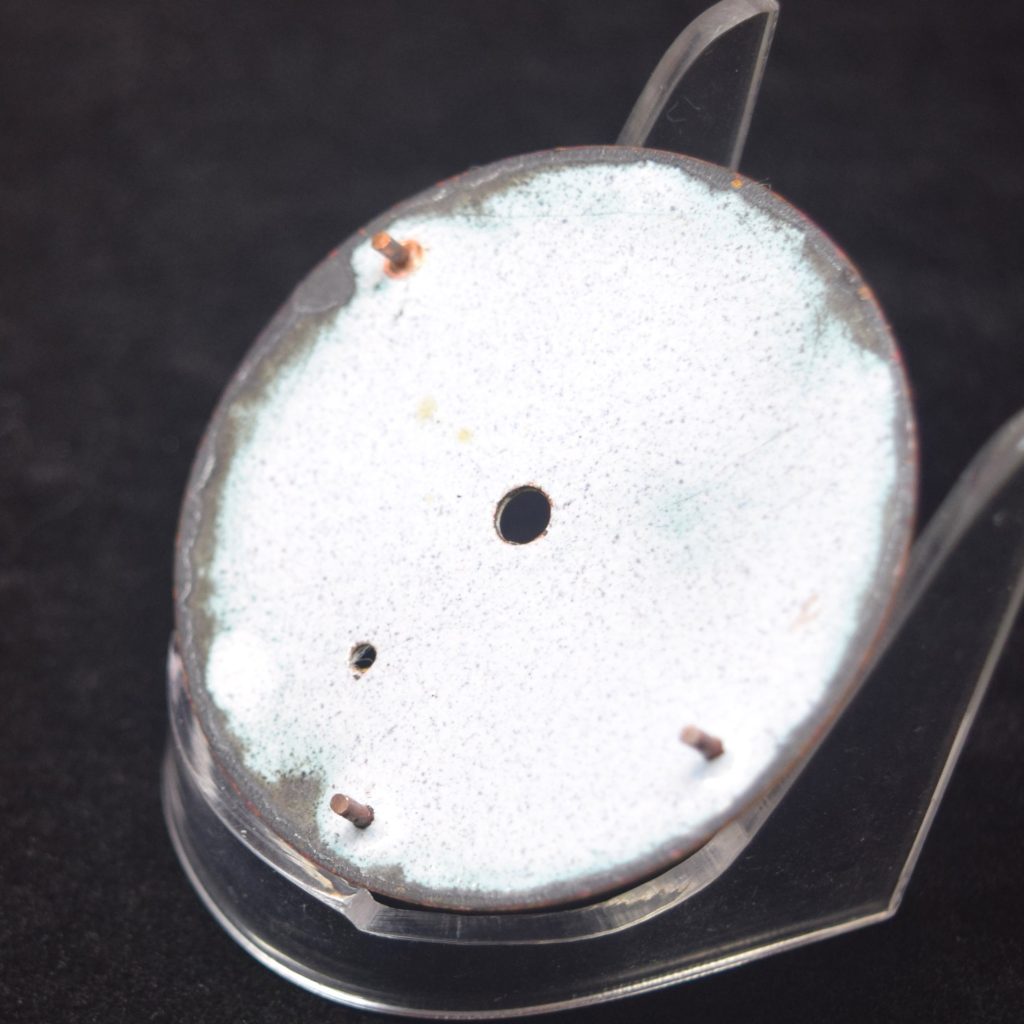
Pressed Seconds Pocket Watch Dial
“Double Pressed” or “Imitation Double Sunk” is similar to Pressed Seconds; but instead of just stamping the seconds bit into the copper disk, another larger area is also stamped to an intermediate depth prior to the enameling process.
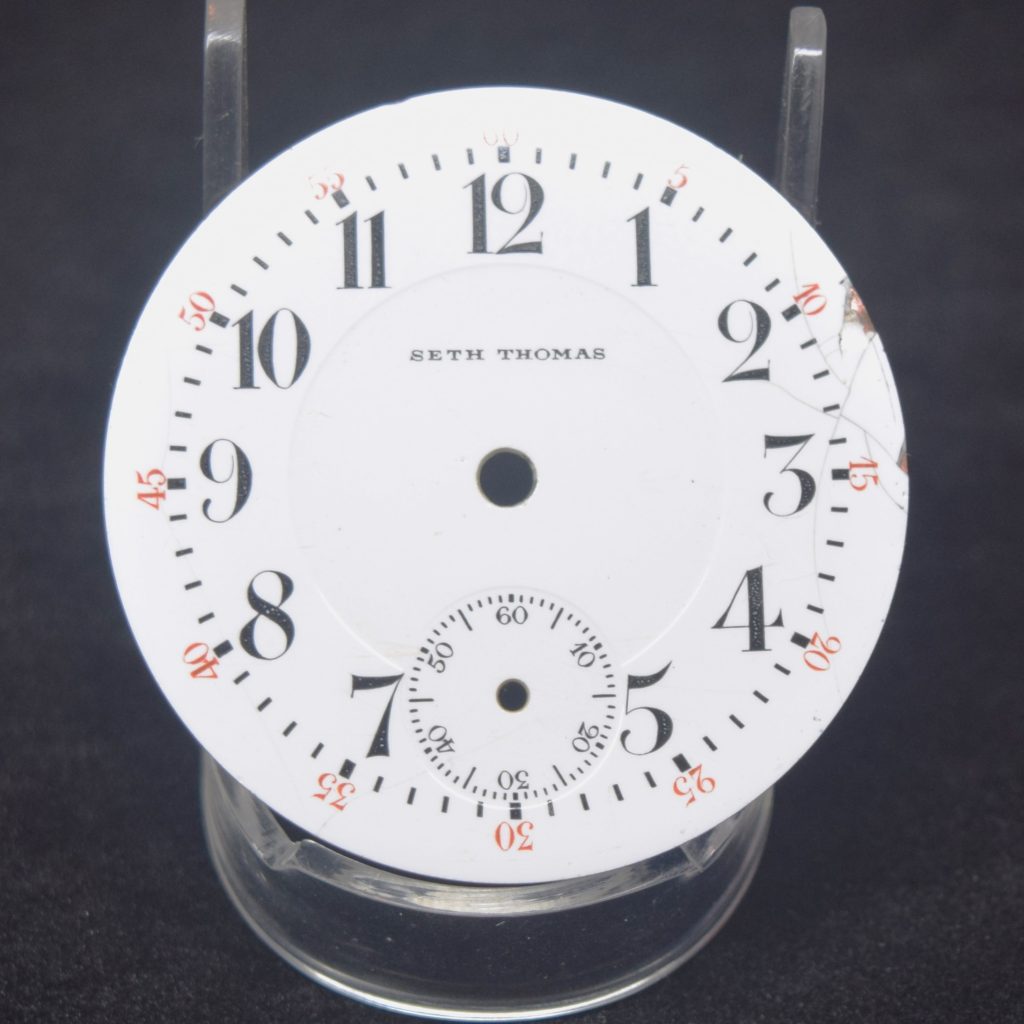
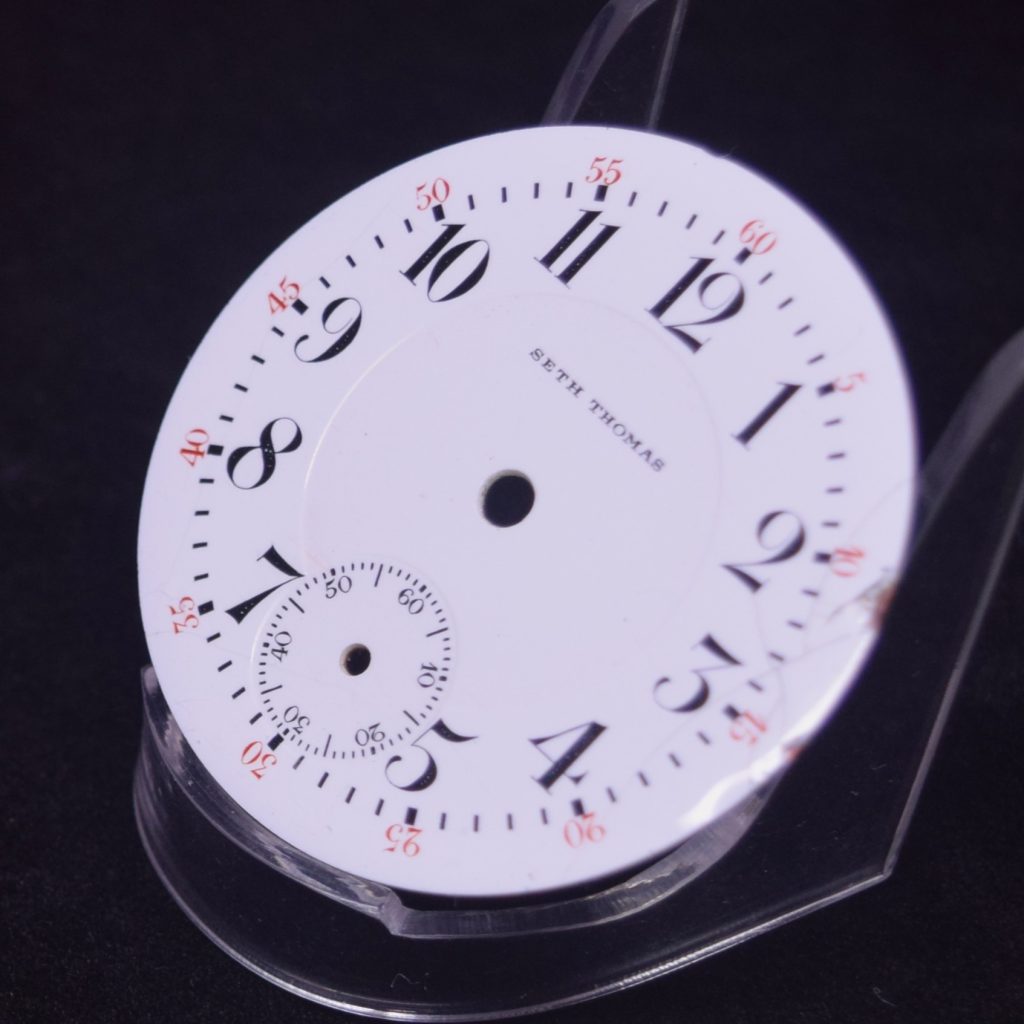

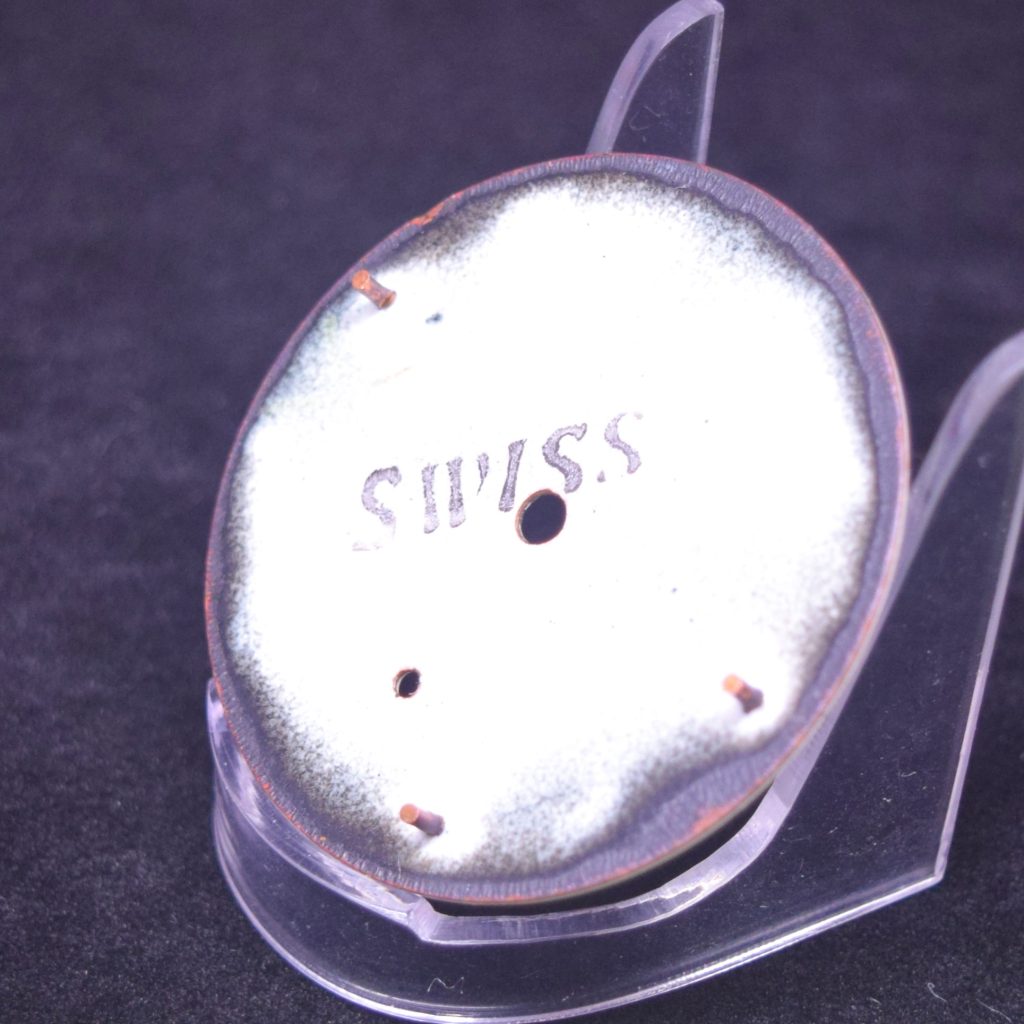
Double Pressed or Imitation Double Sunk Pocket Watch Dial
“Flat” dials have neither pressed seconds, or cut seconds, and are not double sunk or double pressed. They are just flat.
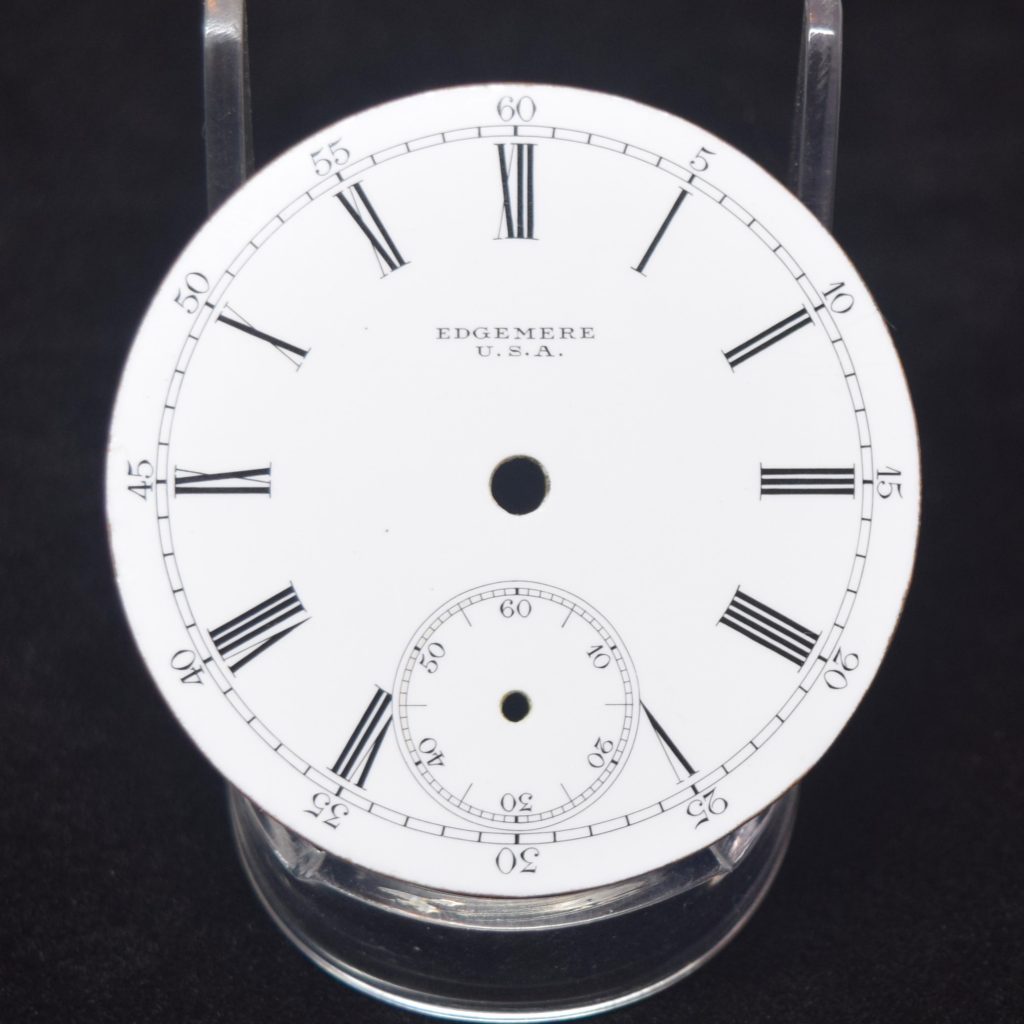
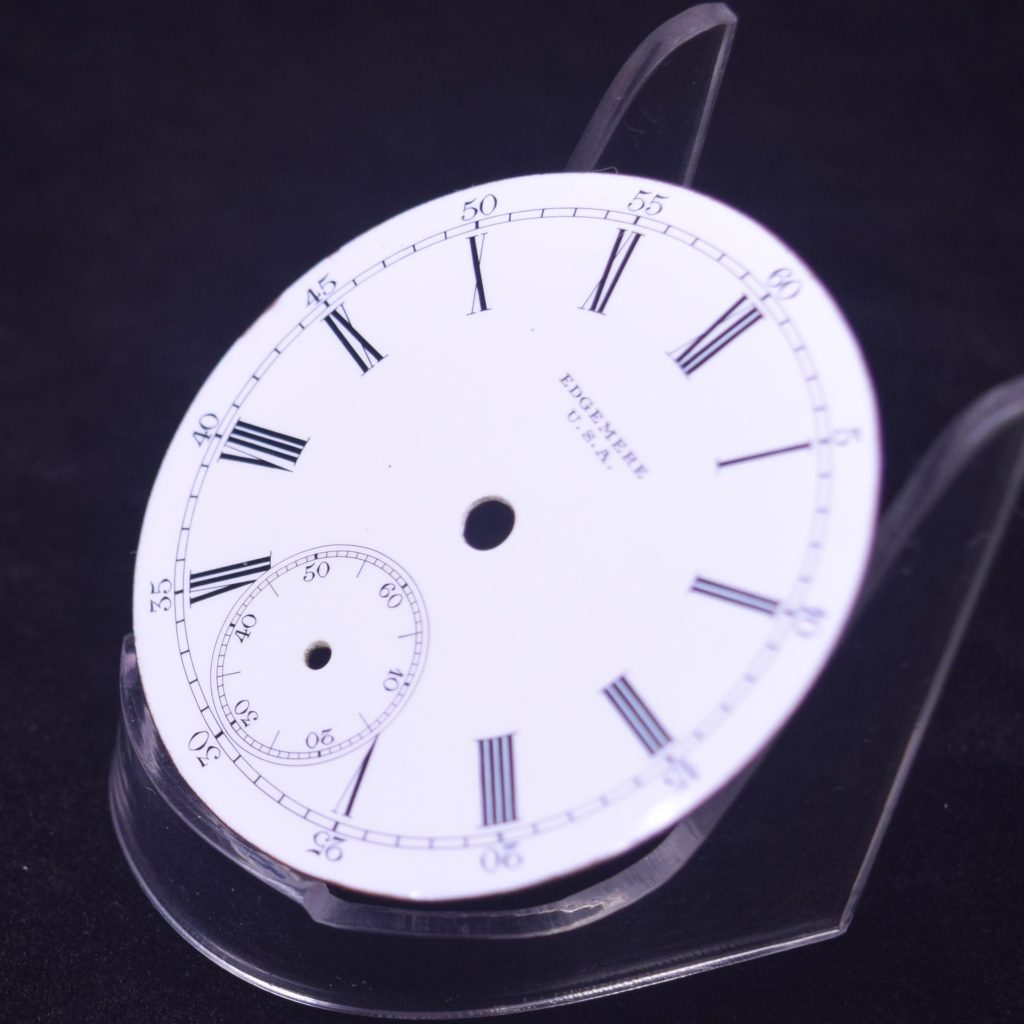

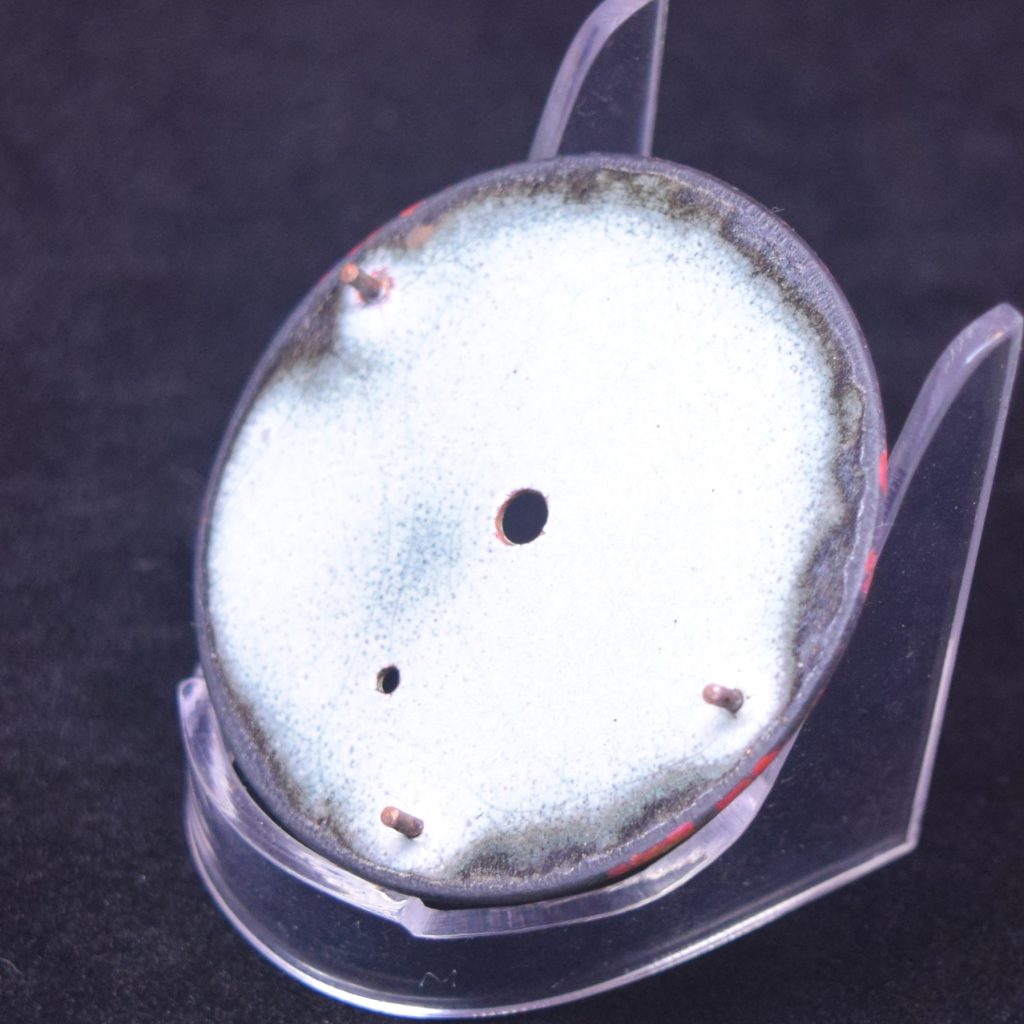
Flat Pocket Watch Dial
Dial Feet
Dial feet are the copper wires that project from the rear of the dial in a pattern that matches the ports on the pillar plate, which the feet will penetrate in order to stabilize the position of the dial. The locations of the dial feet are reported in terms of the number of minutes on the minute ring as if the feet projected through to the front of the dial as well as the back. The vast majority of Seth Thomas dials and movements utilize three dial feet. Some of the older movements only utilized two; but they were in the same position as two of the standard three feet.
18-size dials have feet at 13.0 minutes, 34.2 minutes, and 45.2 minutes for Models 1 – 12.
18-size dials have feet at 13.0 minutes, NONE, and 45.2 minutes if they are two-footed.
18-size dials have feet at 13.0 minutes, 34.1 minutes, and 45.0 minutes for Model 13.
16-size dials have feet at 13.0 minutes, 35.2 minutes, and 45.0 minutes for Model 21.
12-size dials have feet at 2.0 minutes, 21.8 minutes, and 41.0 minutes for Model 22.
12-size dials have feet at 12.2 minutes, 34.8 minutes, and 55.0 minutes for Model 23.
6-size Hunting dials have feet at 17.2 minutes, 37.2 minutes, and 56.3 minutes for Models 14 – 19.
6-size Open-face dials have feet at 2.0 minutes, 22.0 minutes, and 41.0 minutes for Model 24.
0-size dials have feet at 18.2 minutes, 38.0 minutes, and 53.0 minutes for Model 20.
These dial feet locations were published in “American Pocket Watches” by Roy Ehrhardt & William “Bill” Meggers, Revised 1999.

Use CAUTION if straightening or adjusting dial feet as they are integrated into the enamel surface of the dial. Moving or flexing them can cause sudden and catastrophic damage to the dial surface. “Adjusting” can include over-tightening the dial foot screws. Much of the cratering damage that we see on antique enamel dials is located directly above the positions of the dial feet.
Dial Removal
Dial removal is accomplished by slightly retracting the dial foot screws found on the outer perimeter of the pillar plate. On Seth Thomas pocket watches there are usually three; but sometimes only two, dial foot screws. On this 18-size Seth Thomas Model 13 pocket watch one dial foot screw is located next to the winding port, another is adjacent to the balance wheel, and the third is located adjacent to the escape wheel.
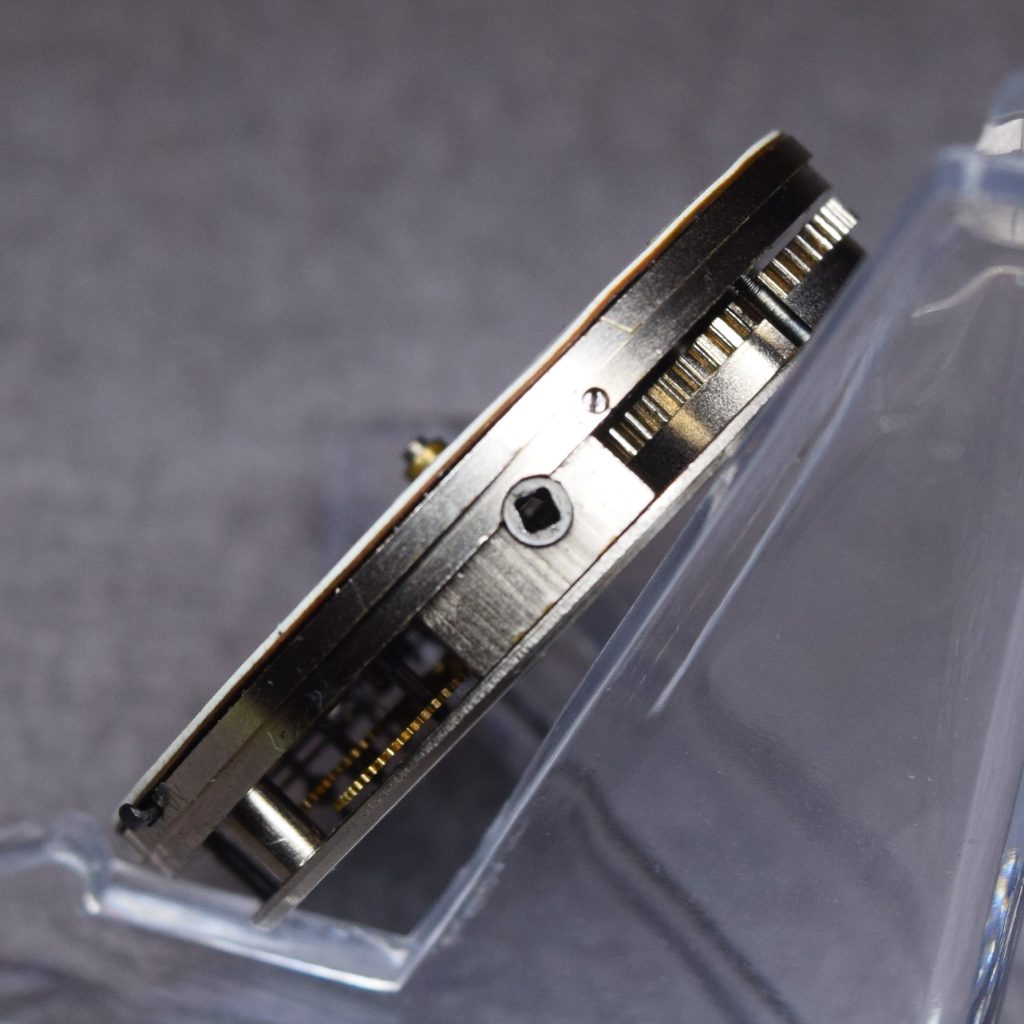

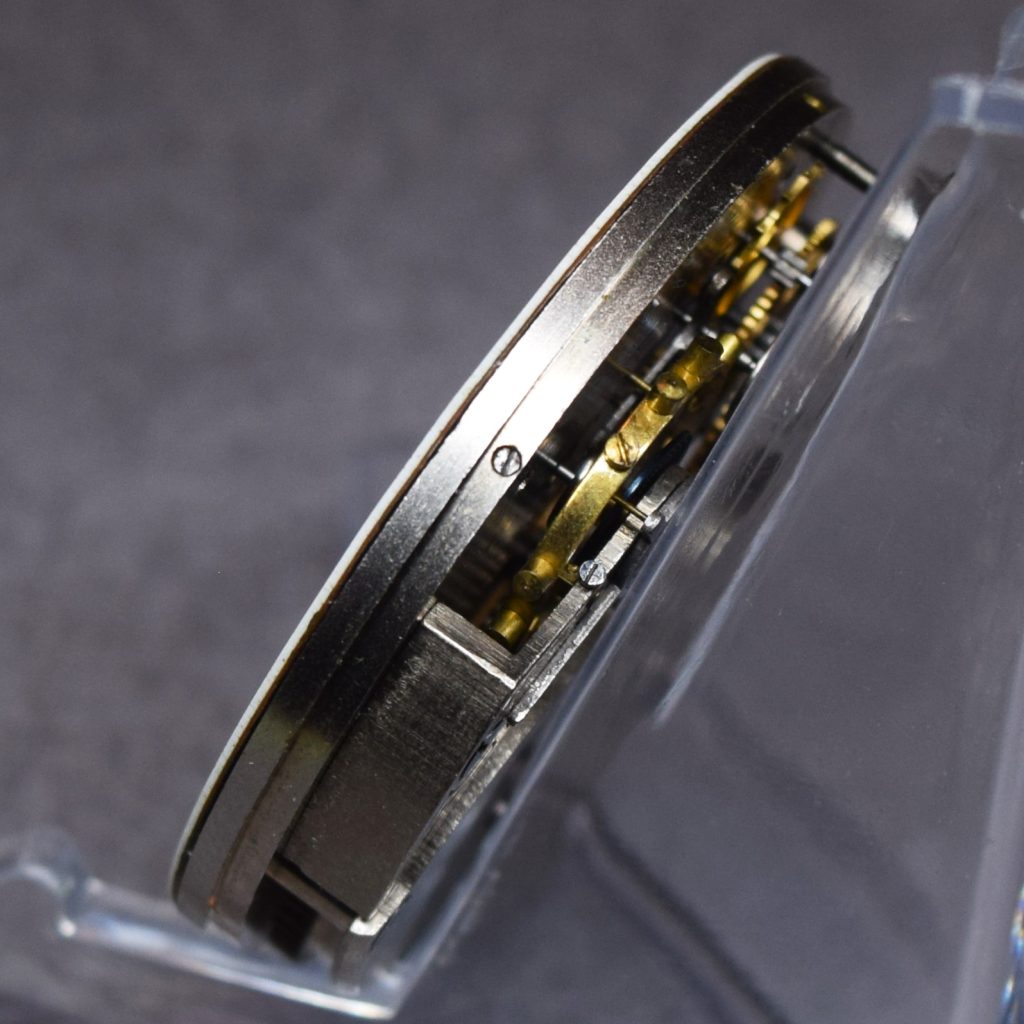
Seth Thomas Pocket Watch Dial Sizes
When measuring a pocket watch, it is important that you measure the pocket watch movement (mechanism) without including the size of the pocket watch case. It is equally important that your measurement is of the “pillar plate”, which is beneath the watch’s dial and hands. You should not be measuring the “top plate”, which has the engraved patterns and movement markings, and where you can often see gears, wheels, screws, and springs. The top plate is usually a couple of sizes smaller than the pillar plate; so you cannot get an accurate reading by measuring there.
As with measuring anything else, the measurement needs to be expressed and communicated in the relevant measurement scale. In some regions of the world millimeters and lignes have been the standard units of measure for pocket watches. Since this article is providing information about American-made pocket watches; the correct system of measurement to use would be the American Movements Sizes scale. The American Movements Sizes scale is based upon the Lancashire Guage where a small measurement (1/30 of an inch) is added to the basing figure of one inch to establish the actual size of the next larger named size; so the expressed sizes are additive, not relative, to one another. An 18-size pocket watch is not three times as large as a 6-size pocket watch. It is twelve units (1/30”) larger. The various established watch sizes are expressed as a number hyphenated with the letter “s” after it, with “s” standing for “size”. The smaller numbers represent a smaller watch than the larger numbers. Sizes below 0-size are expressed as 3/0-size, 6/0-size, and so forth all the way down to 21/0-size.
Fortunately; Seth Thomas produced watches in only five sizes. The photo on the left shows those five sizes, 18-s, 16-s, 12-s, 6-s, and 0-s. In addition to these sizes Seth Thomas manufactured some “compact” models. Some of the 6-size pocket watch movements were manufactured with a longer setting lever, enabling them to accept the same size dial as is used on a 12-size watch. These watches are referred to as 12X6 movements by collectors and watchmakers. They were marketed to the public as thinner, less bulky 12-size pocket watches. Most pocket watch dials are slightly smaller than the pillar plate that they rest upon to reduce chipping and breakage of the enamel dial; so a dial for many 12-size watches measures only about 10-s. The dial on the 12X6 movements are 10-s, just like the 12-size movements; but they protrude past the 6-size pillar plate. Specially adapted 12-size watch cases are required to accommodate the 12X6 movements which are really just 6-size movements with a longer setting lever to extend beyond the edge of the oversized dial. The resulting benefit of the 12X6 movement is really the ability to sell the 6-size watch in a somewhat smaller 12-size watch case to people who don’t want to read the smaller 6-size watch dial.
Full-page images of the new chart below are provided on the final pages of this article so that they can be printed out for use as reference material.
A New Seth Thomas Pocket Watch Dial Chart
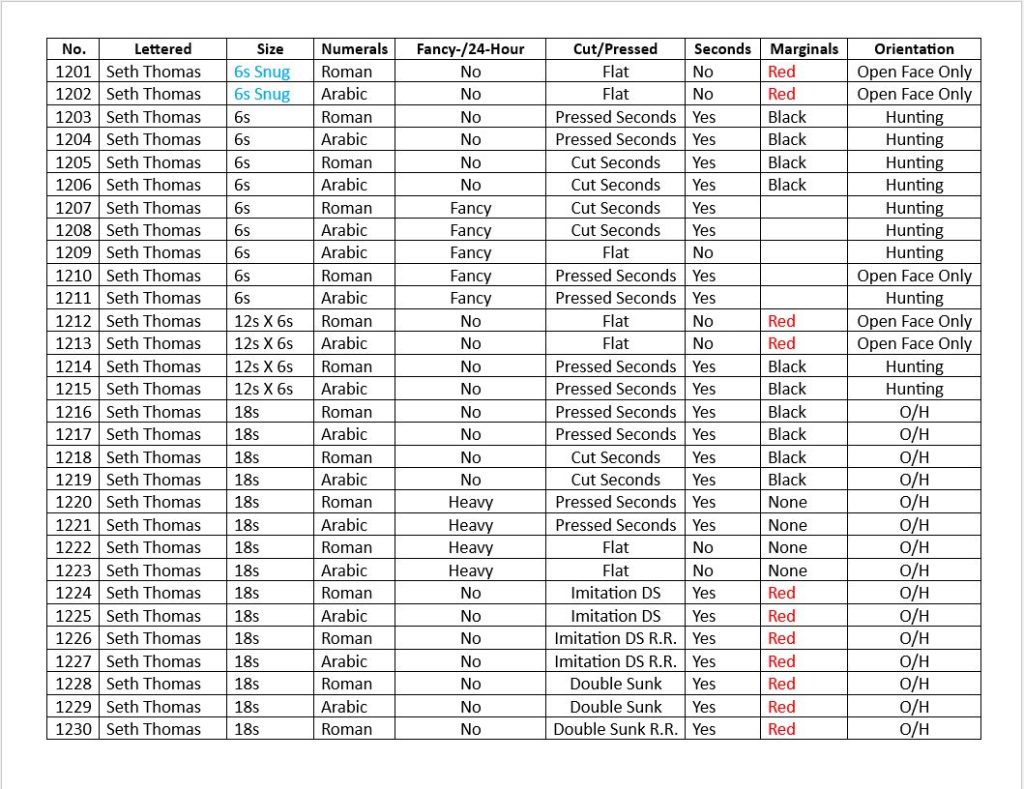
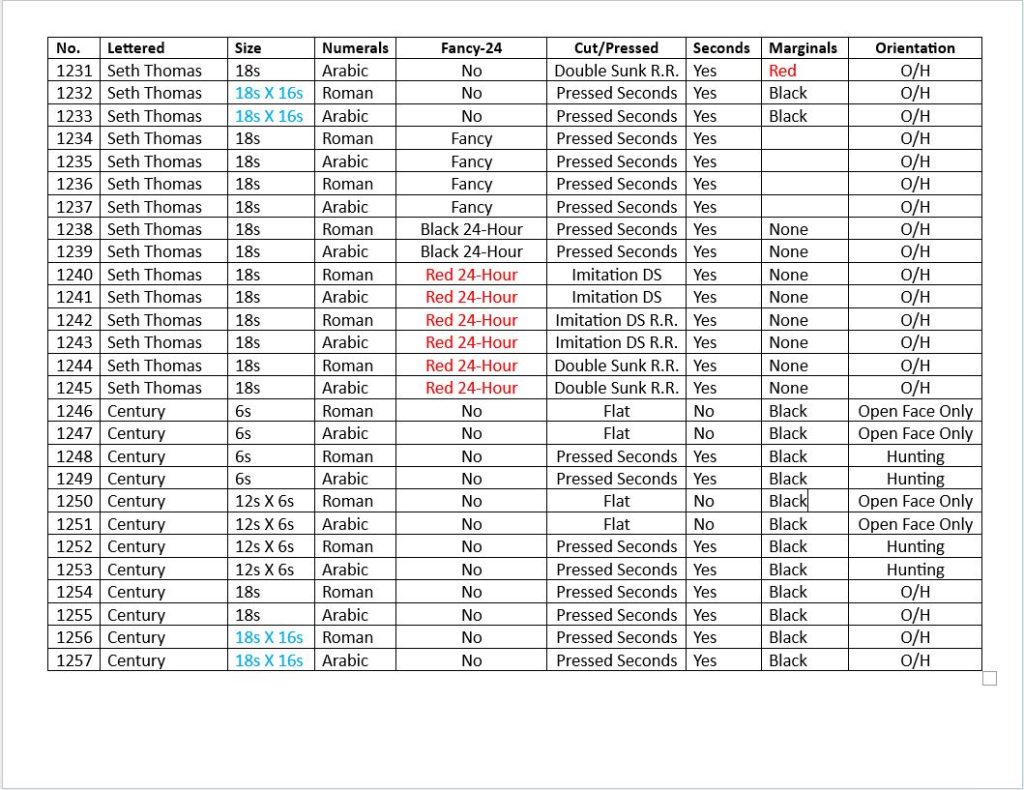
Seth Thomas Pocket Watch Dials Illustrated
6-size

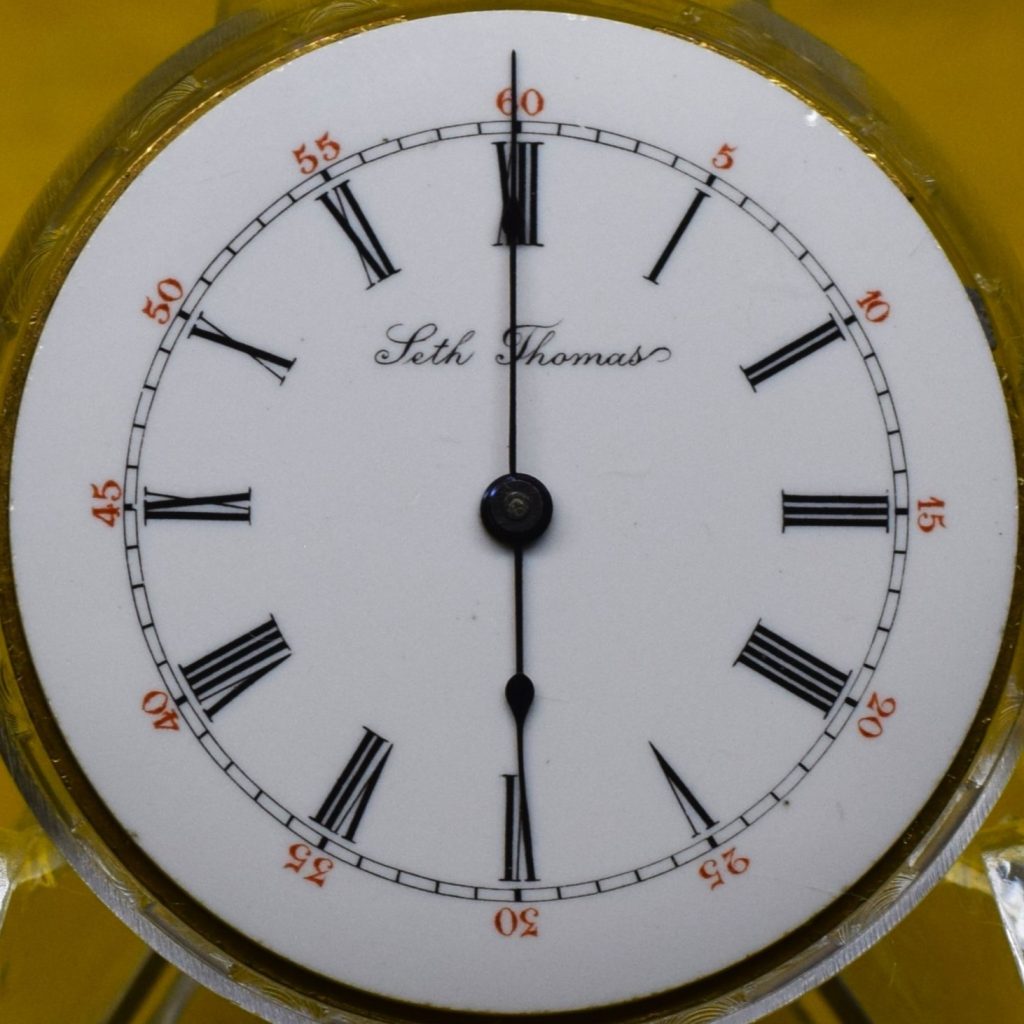
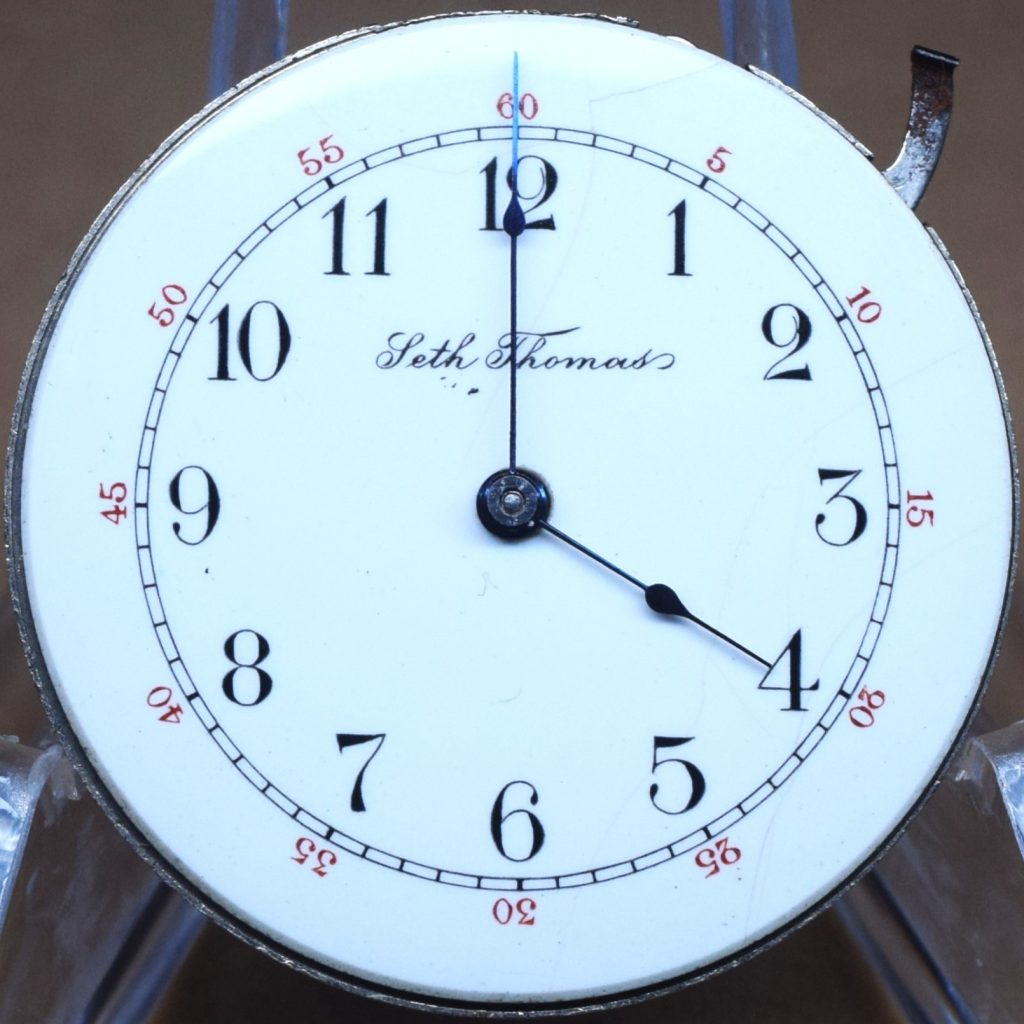

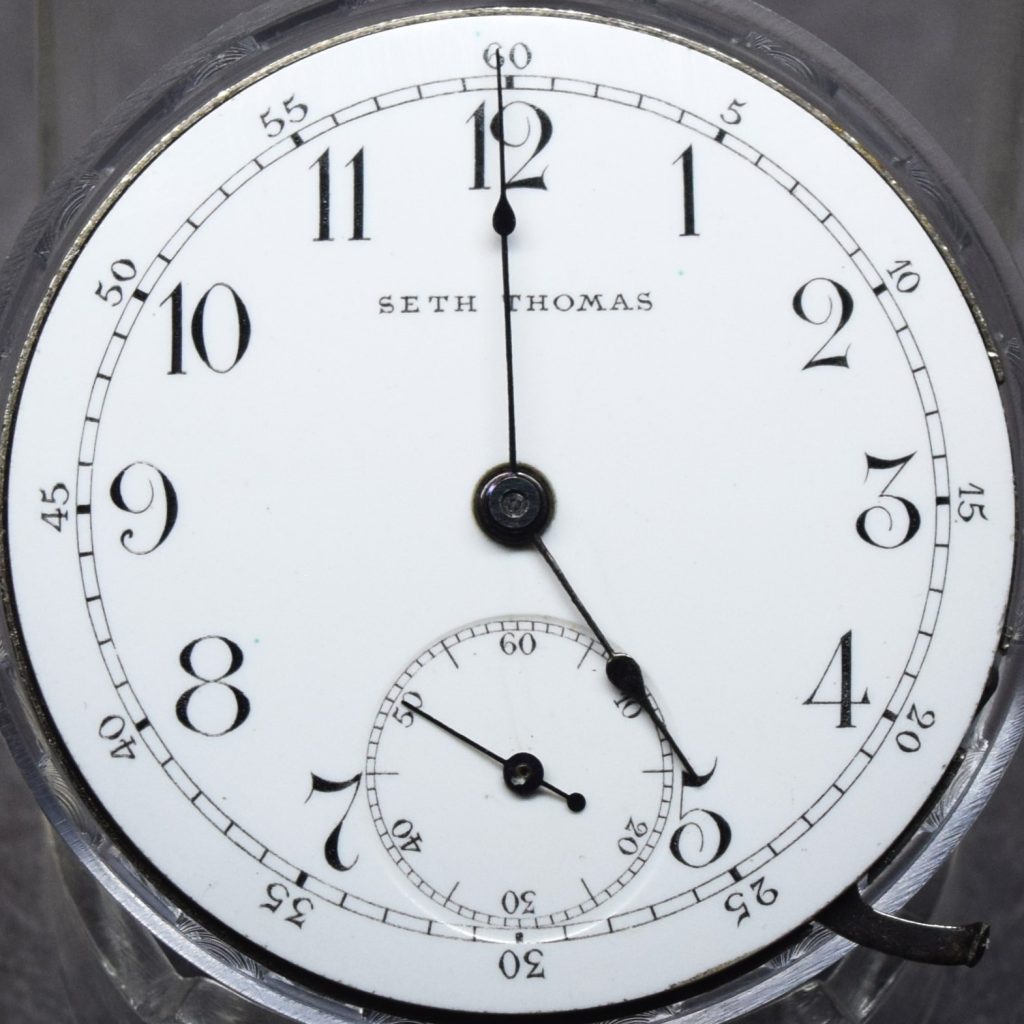

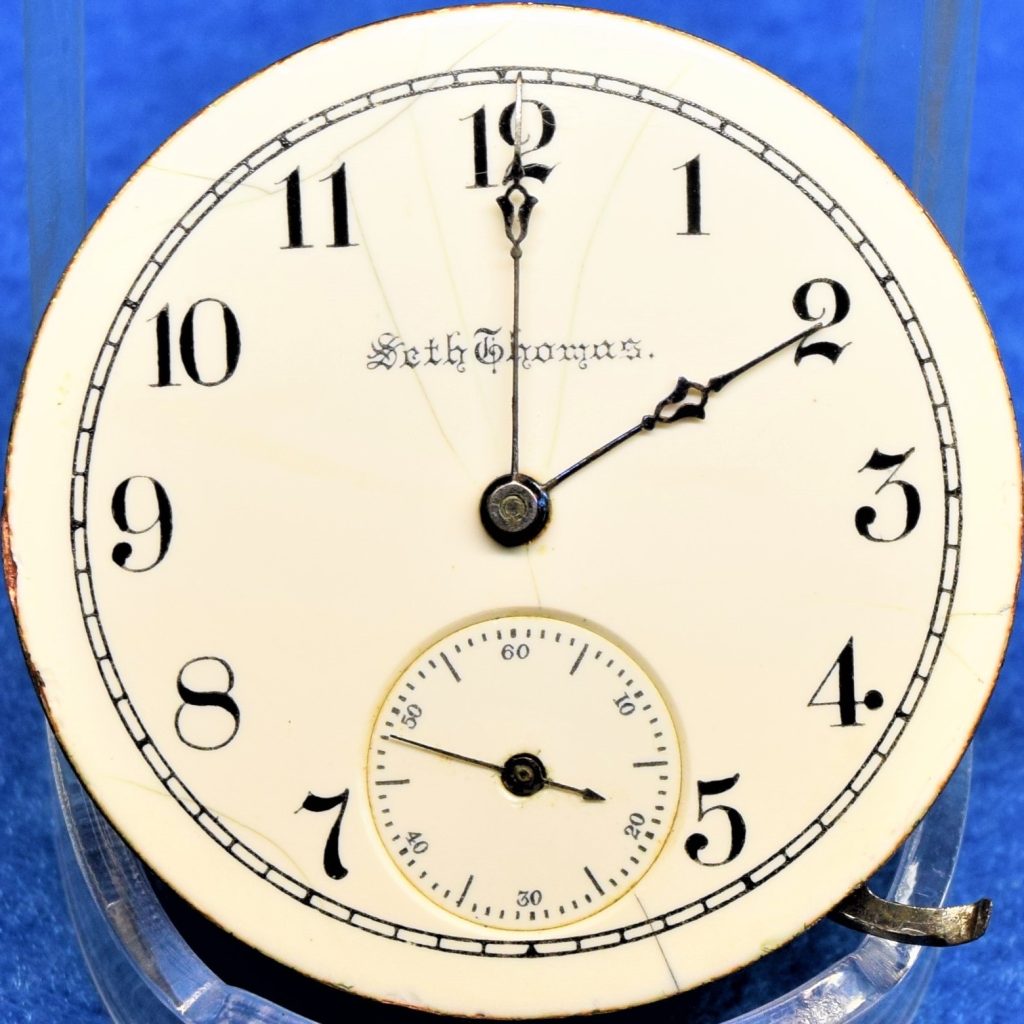

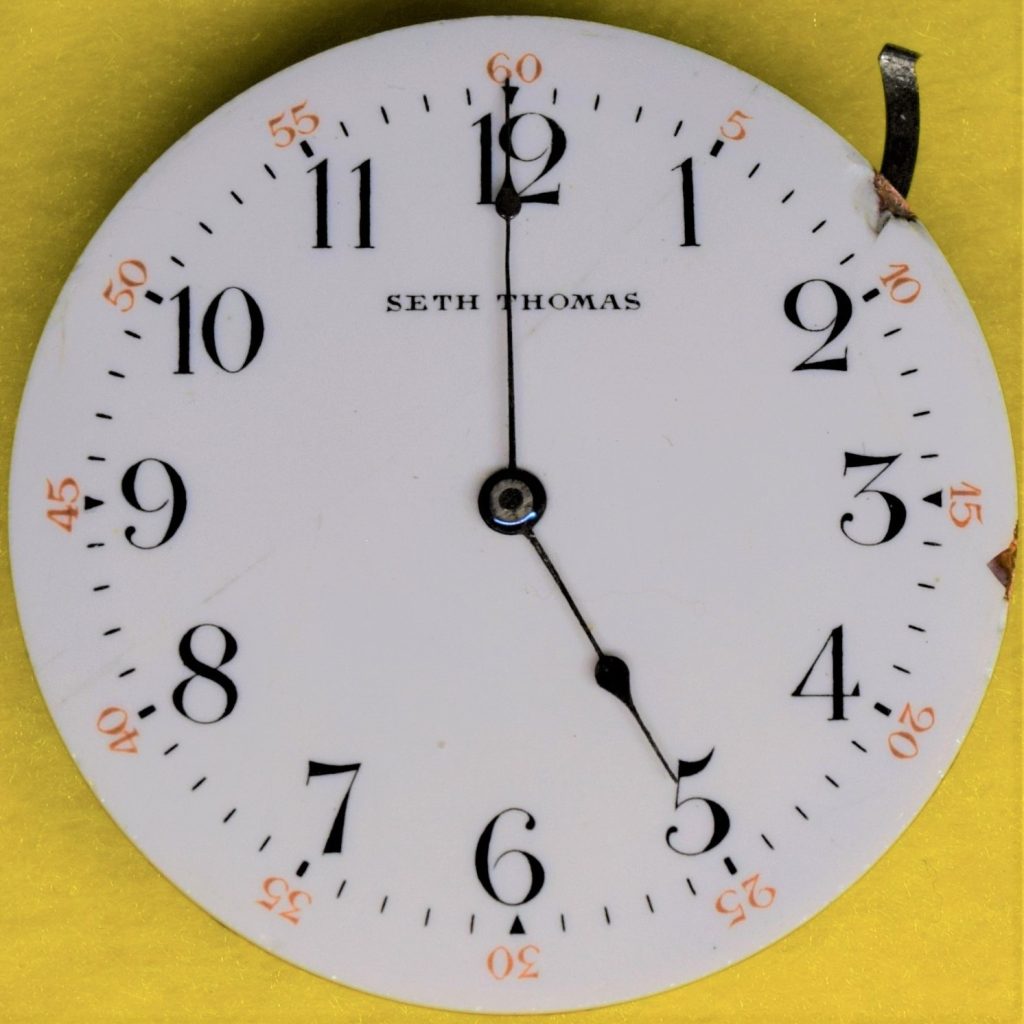
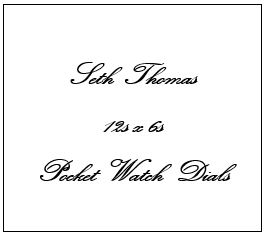
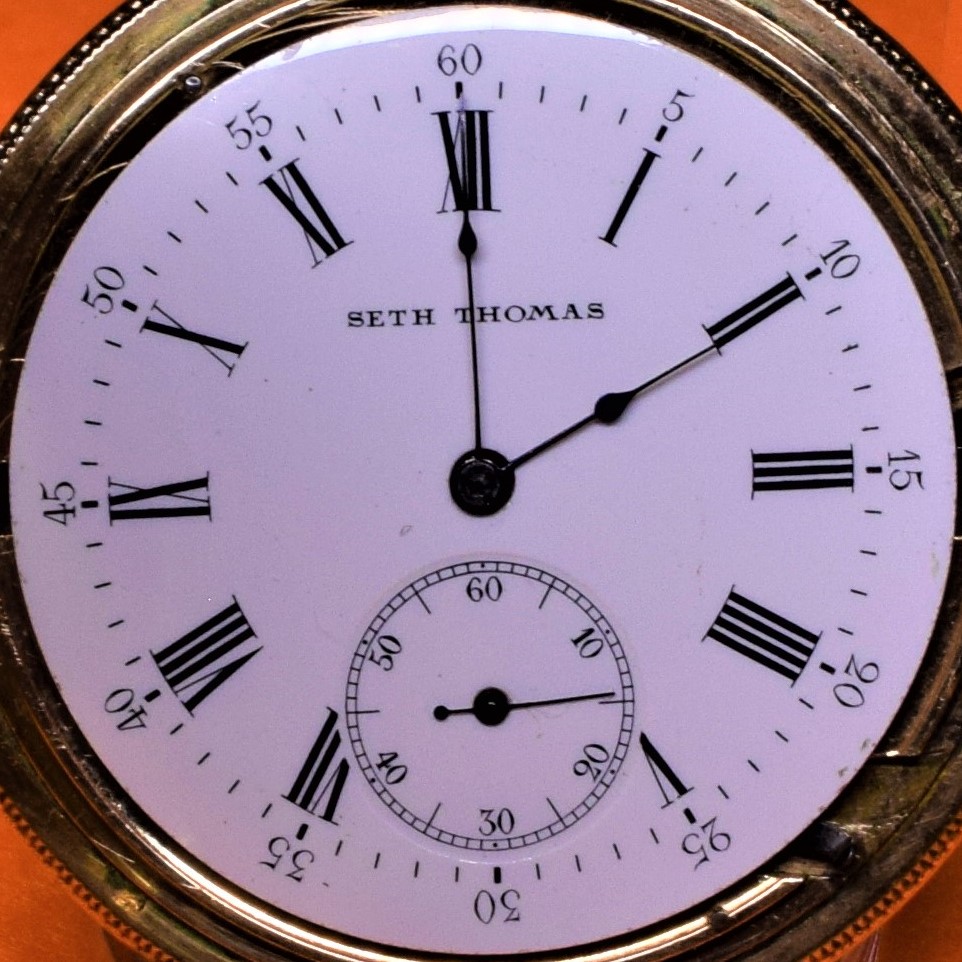
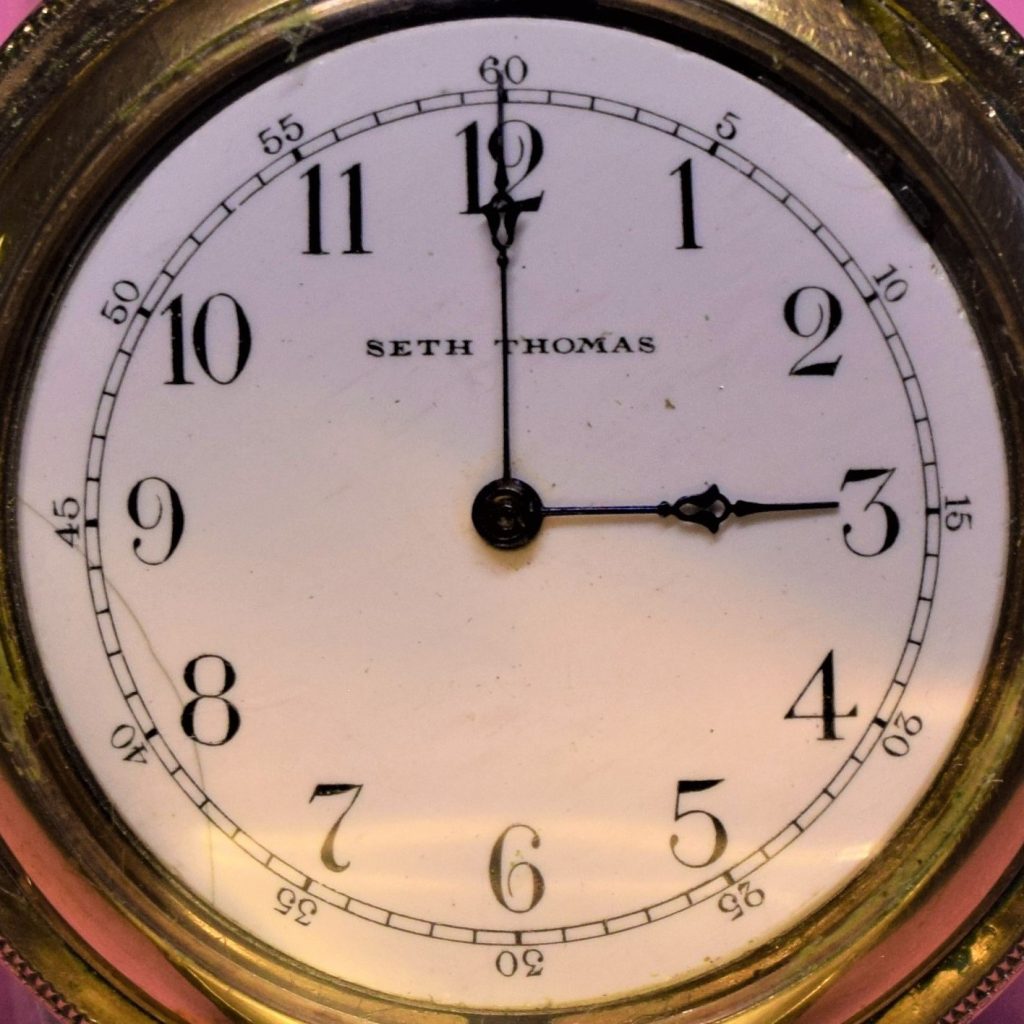
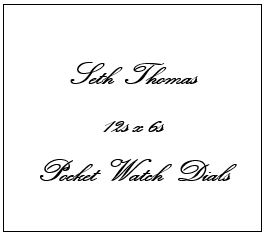
18-size

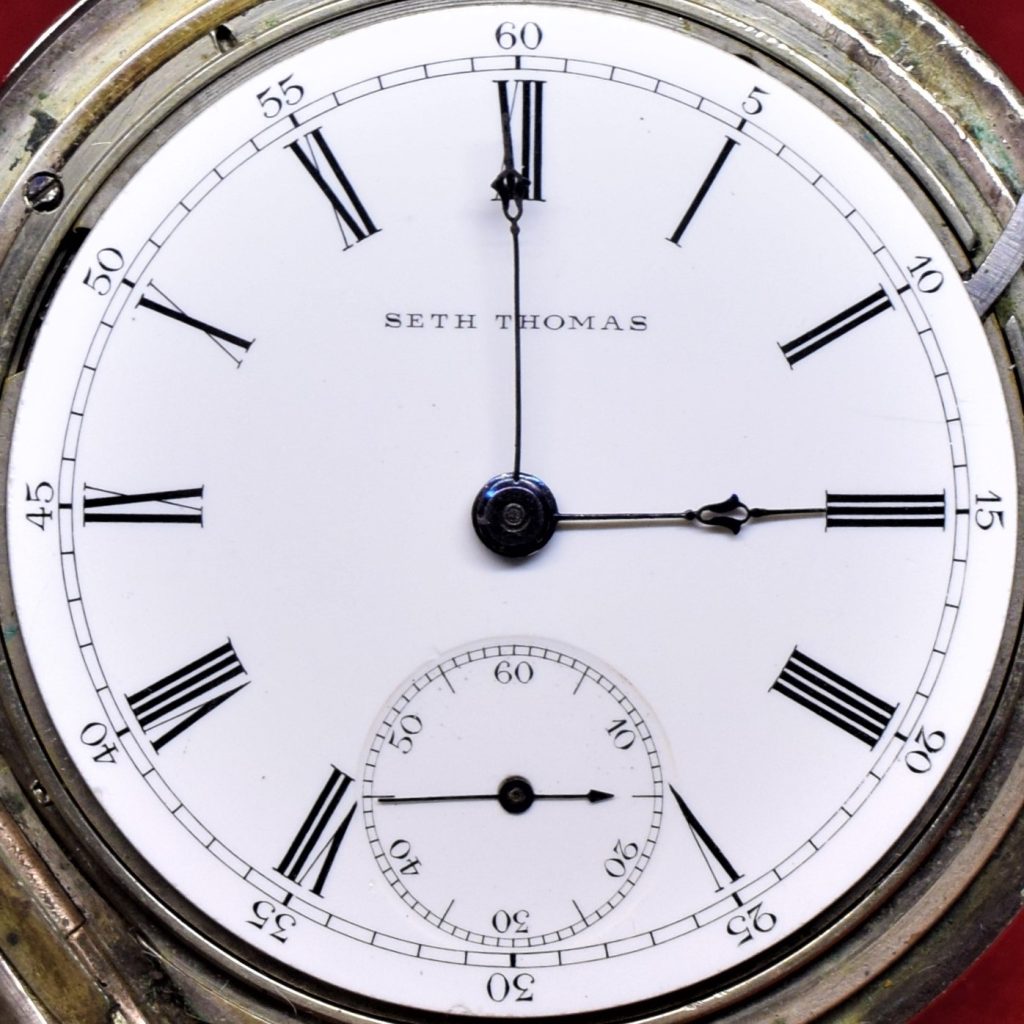
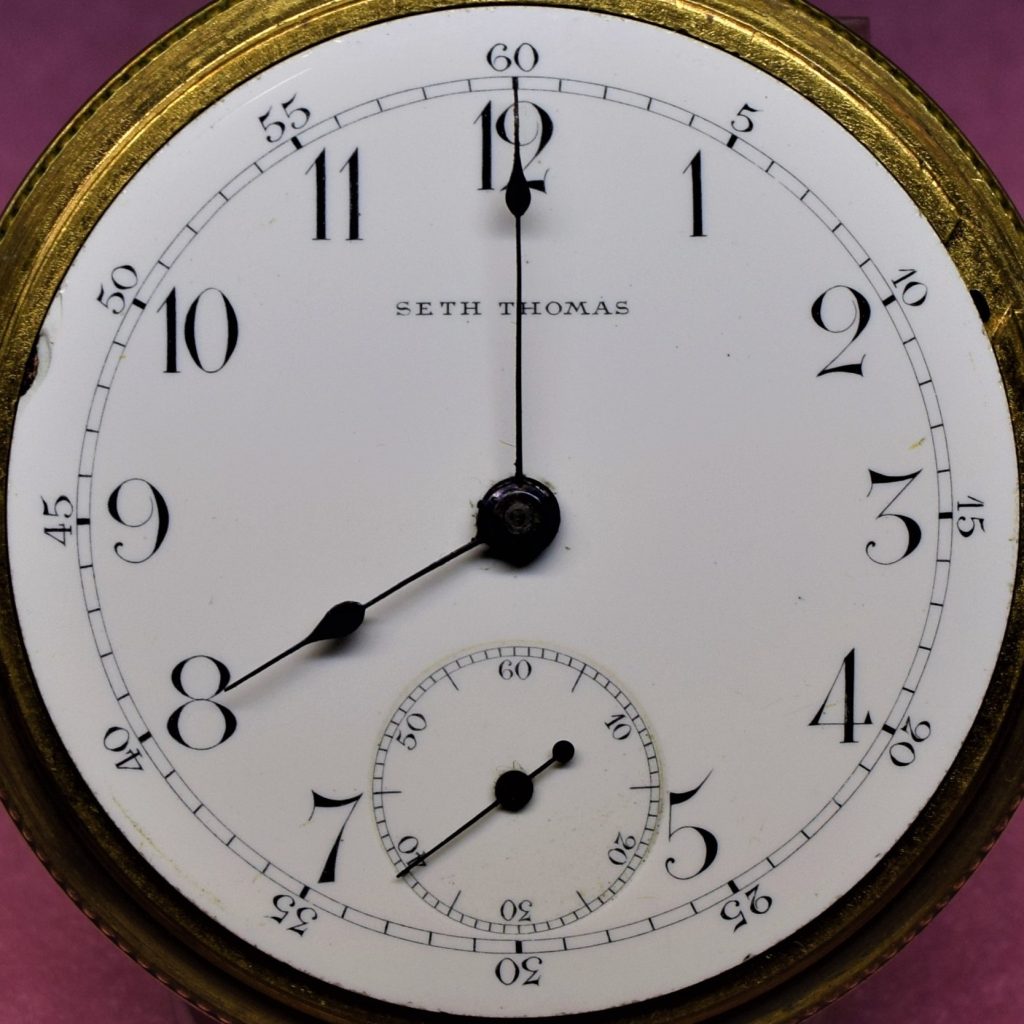
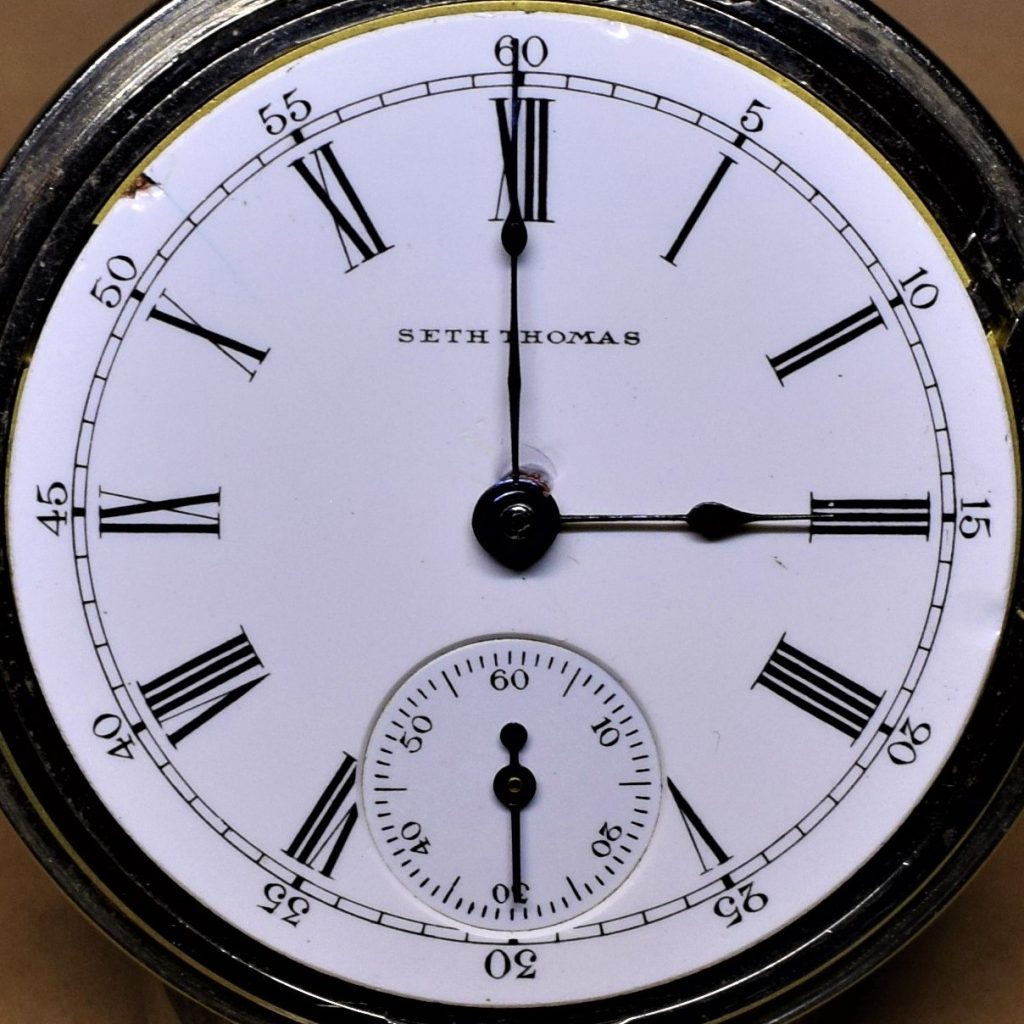
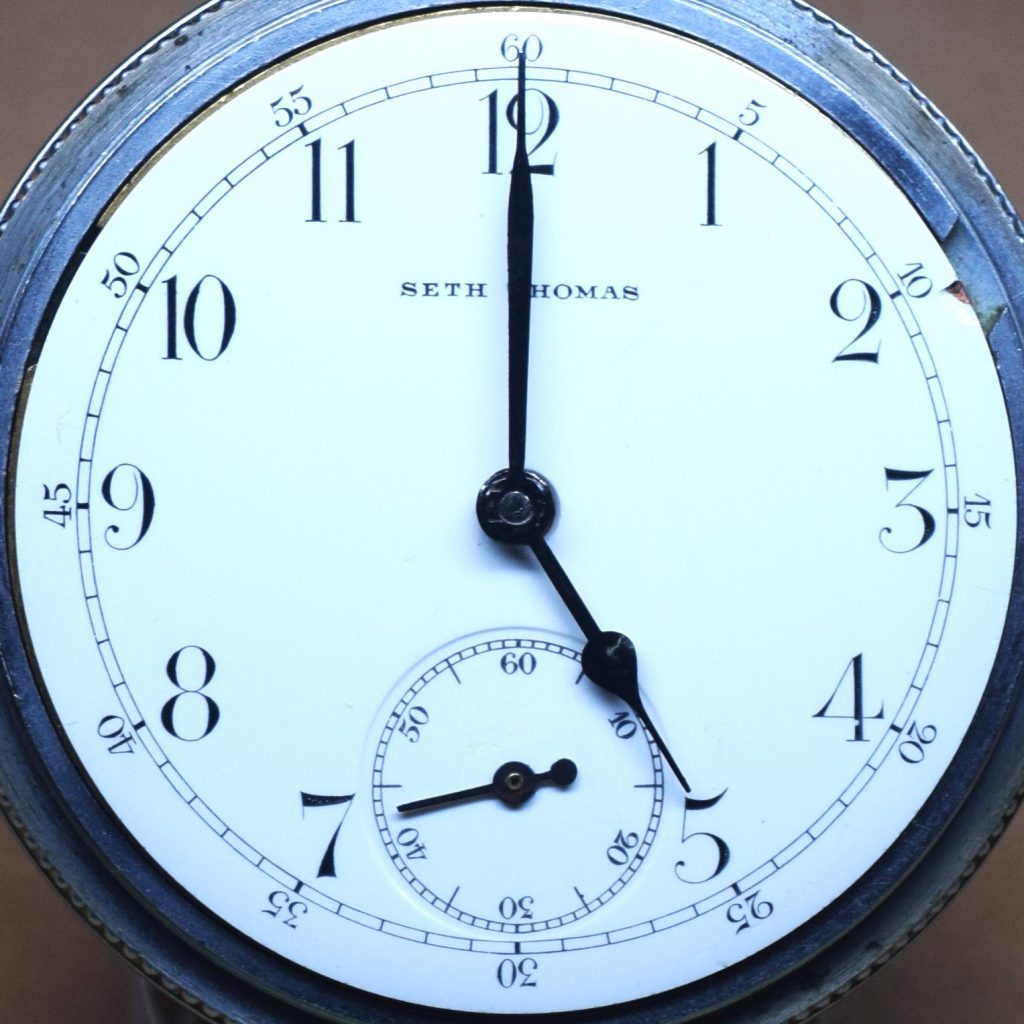
Left to Right: Dial 1216, Dial 1217, Dial 1218, Dial 1219

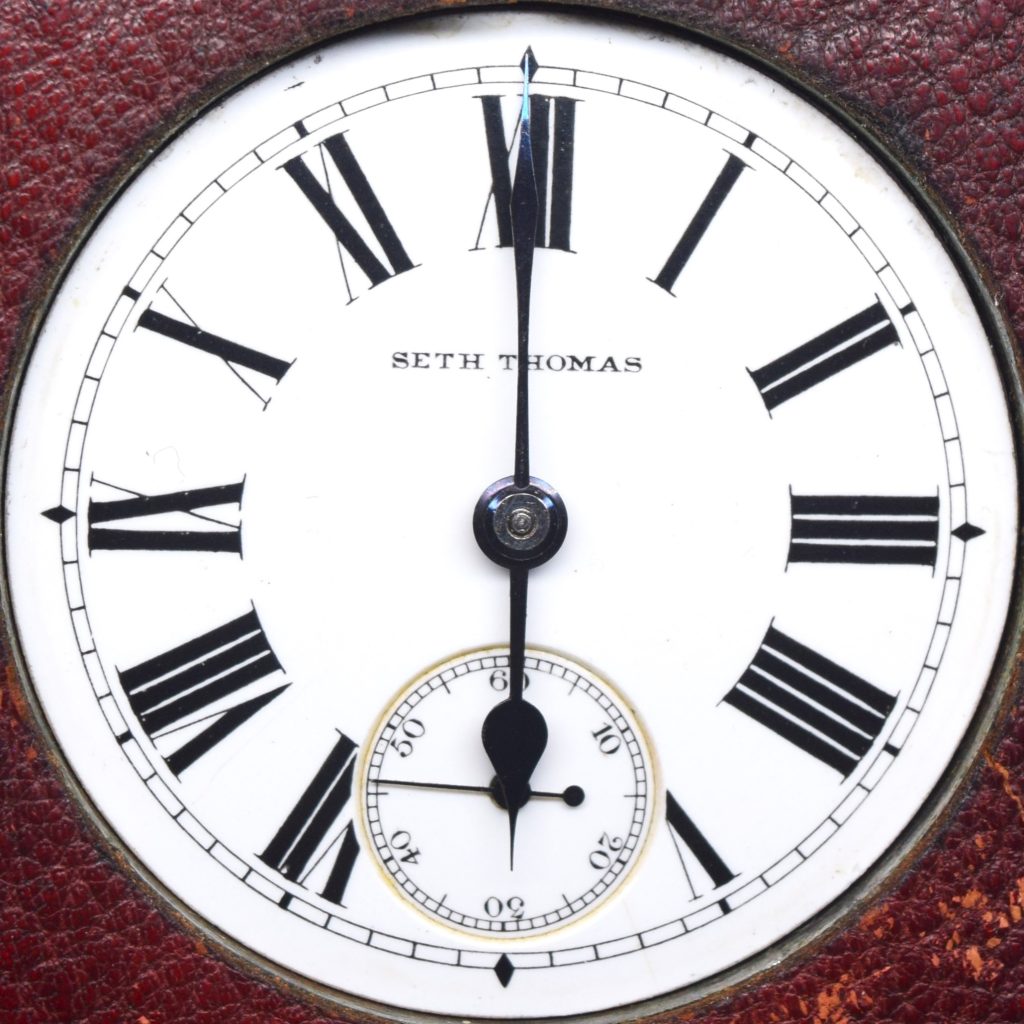


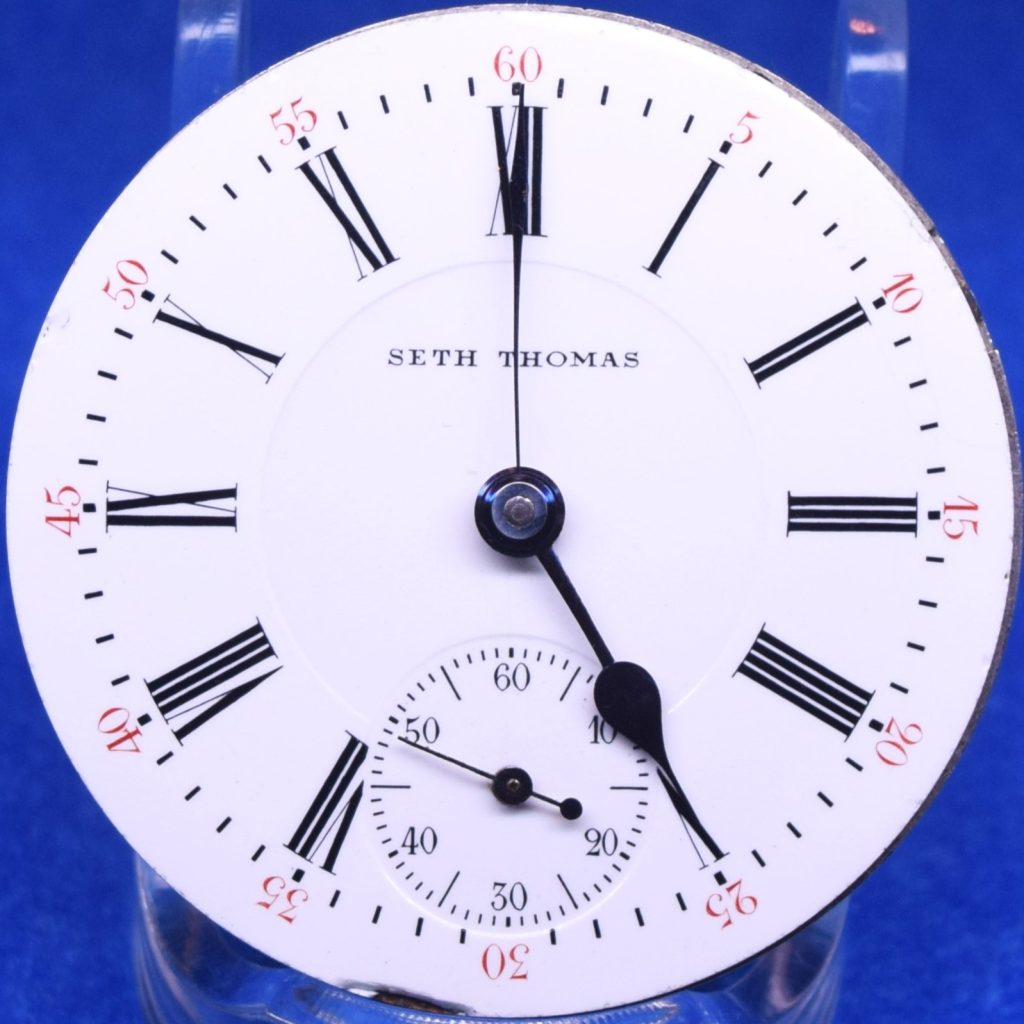
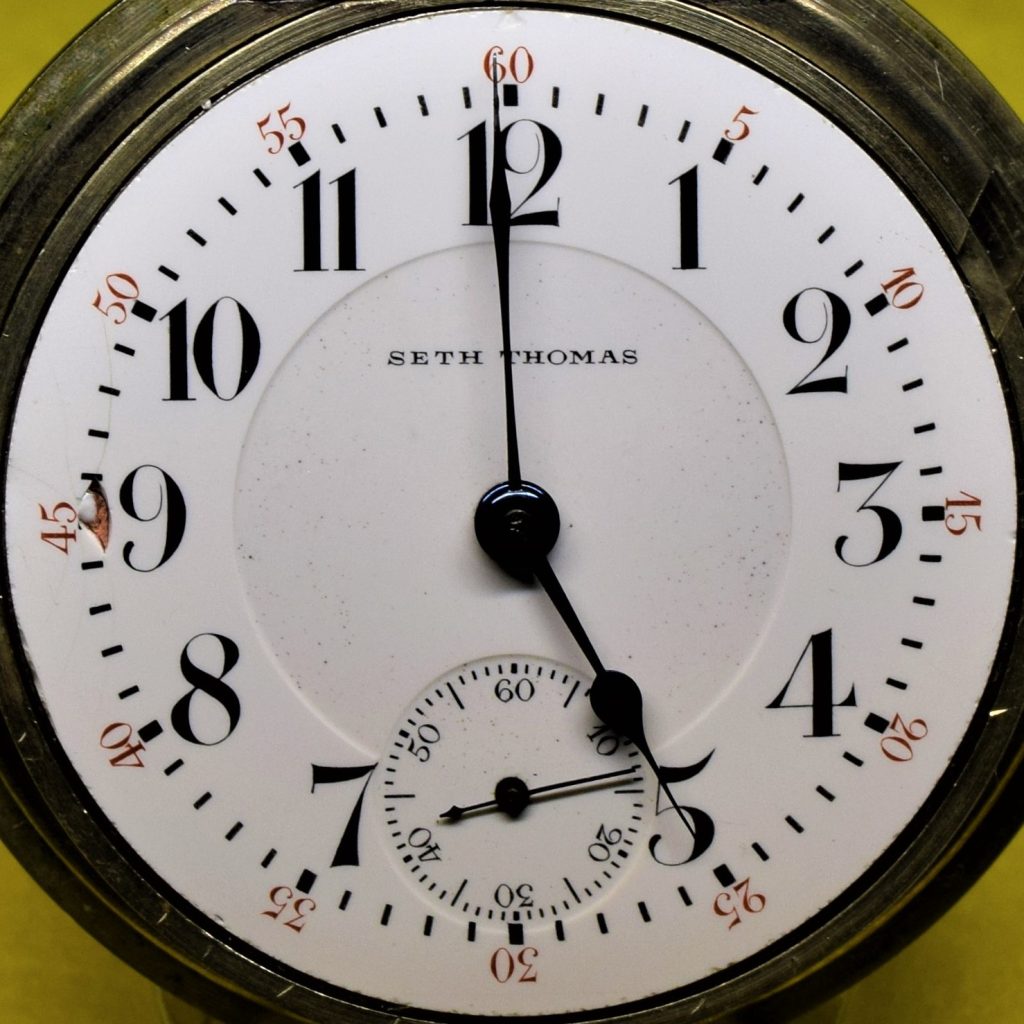
Left to Right: Dial 1220, Dial 1221, Dial 1222, Dial 1224, Dial 1225


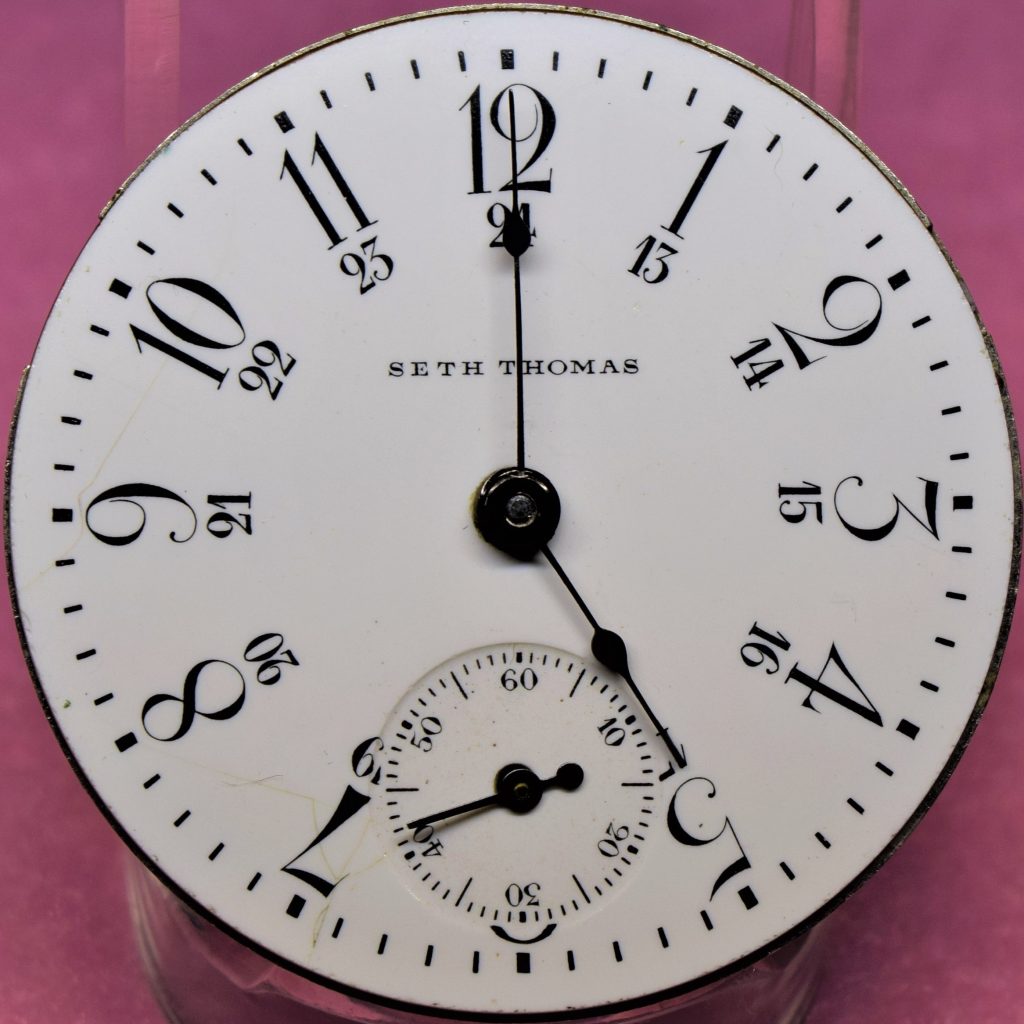

Left to Right: Dial 1238, Dial 1239, Dial 1240

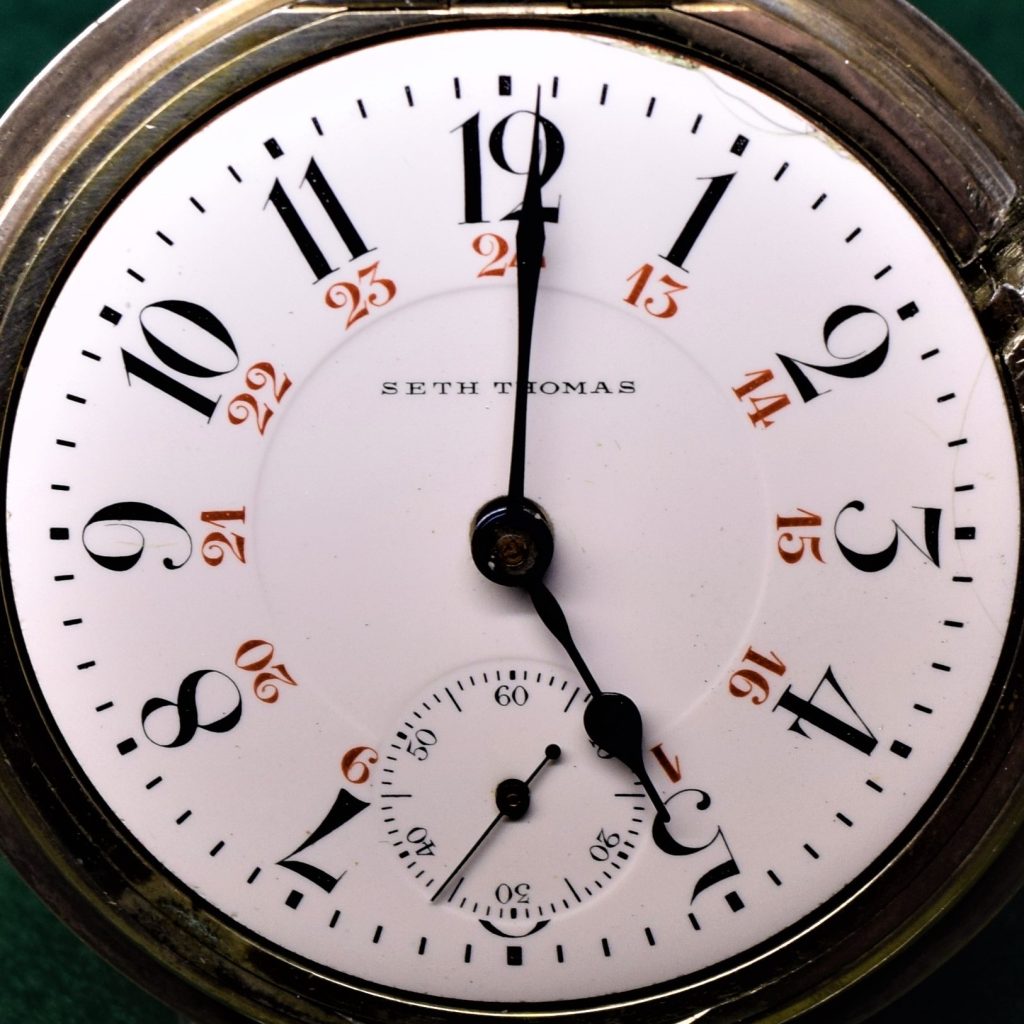
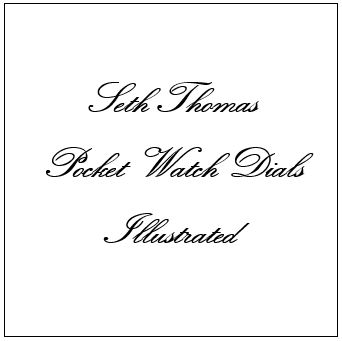

Left to Right: Dial 1241, Dial 1245
Century
“All Century grade dials have black marginal figures.”



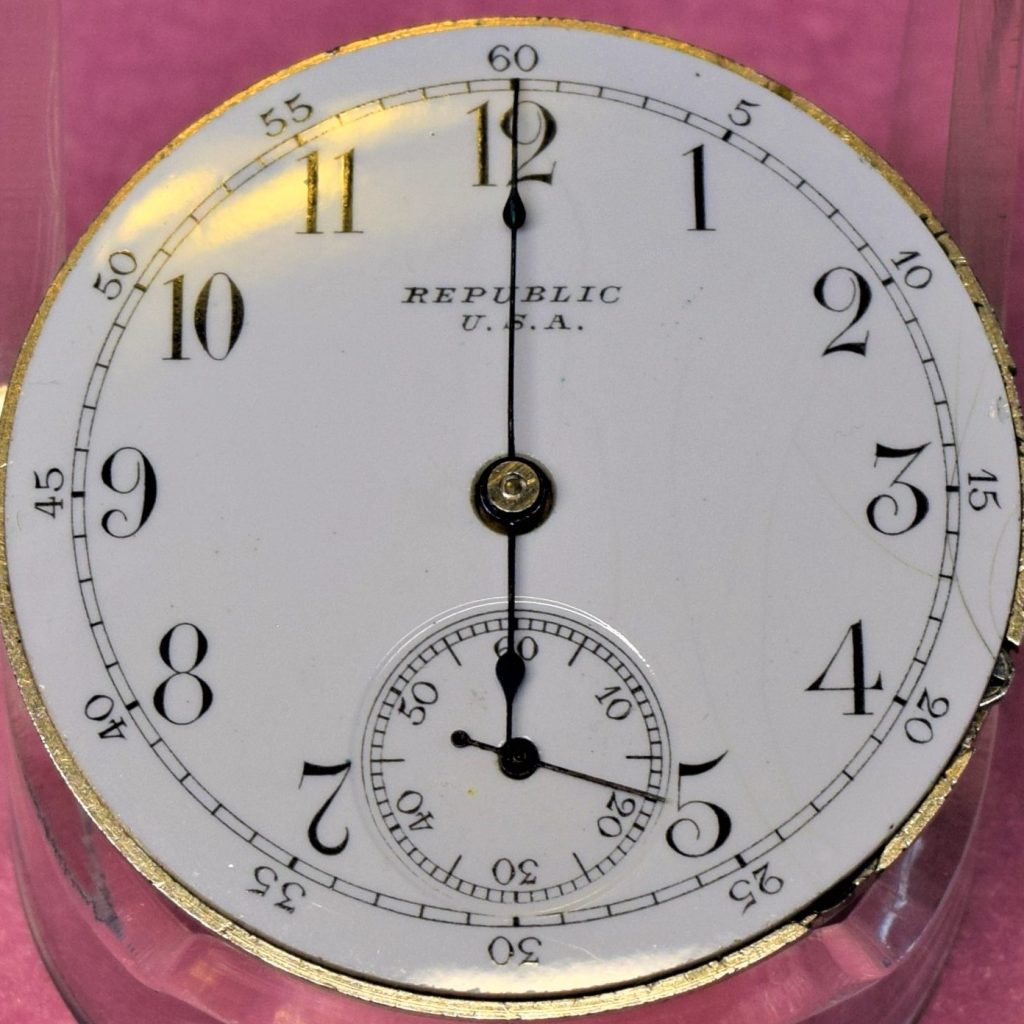
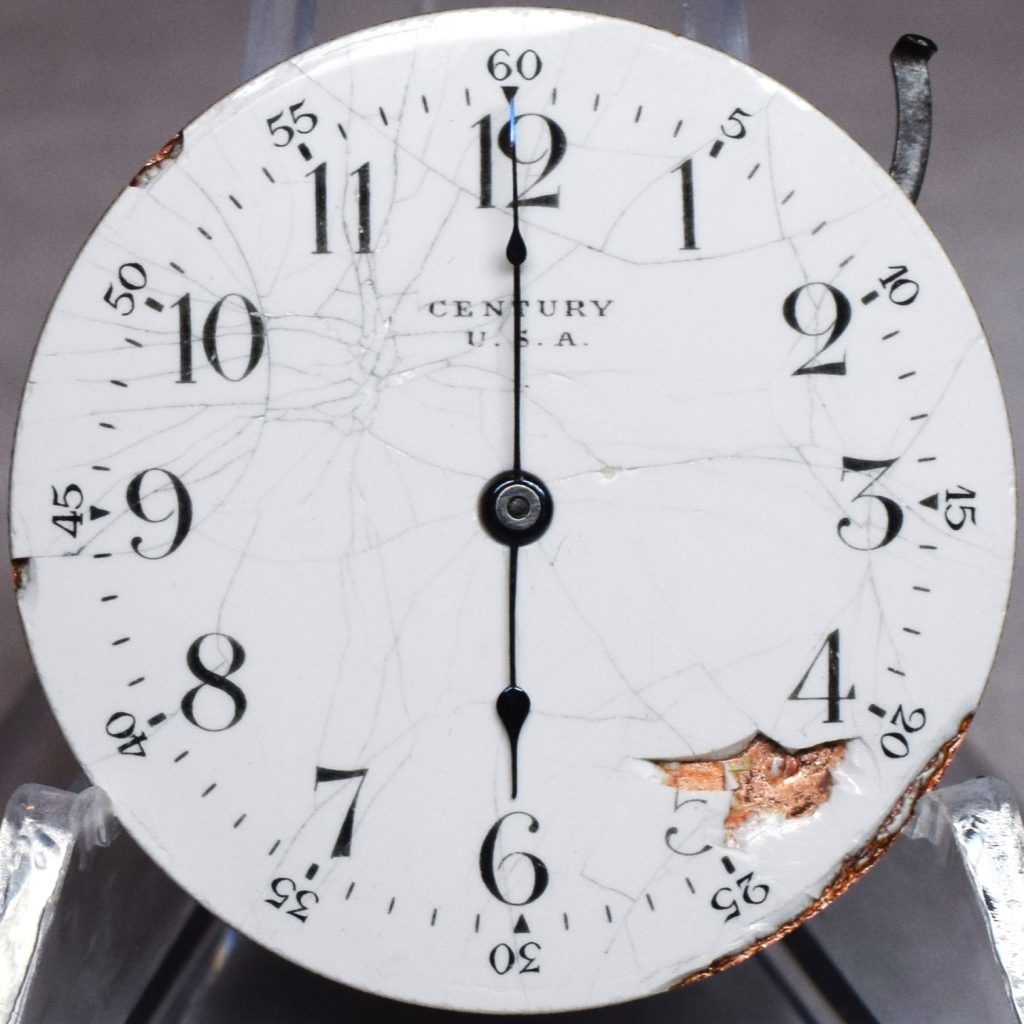
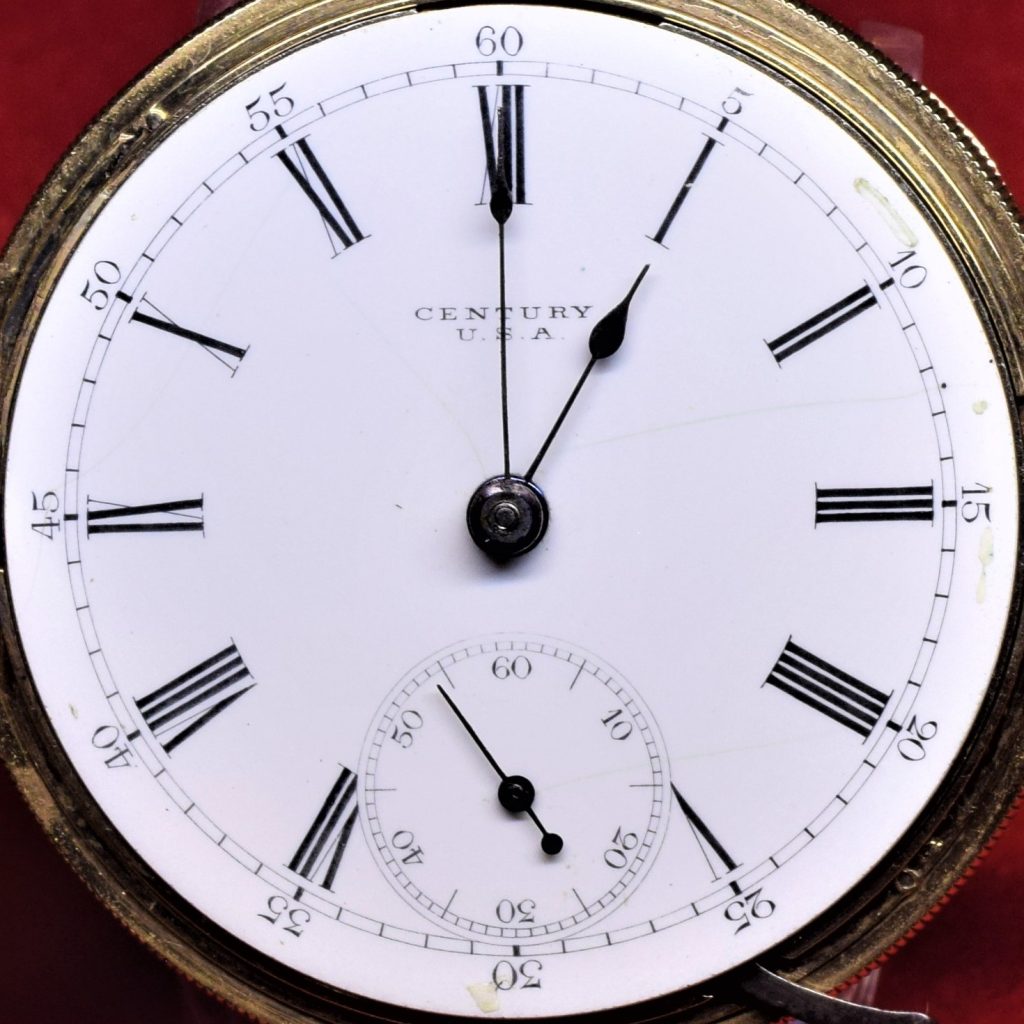

Fancy Dials
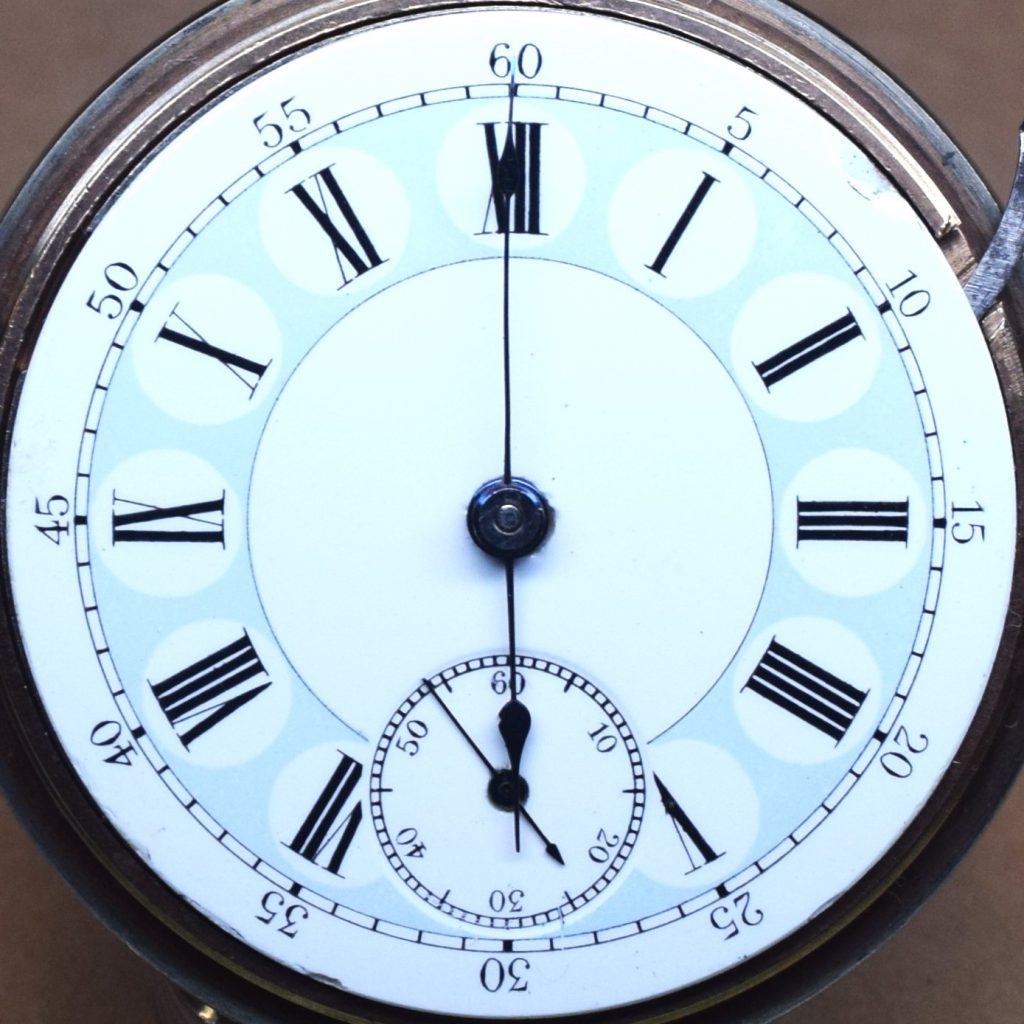
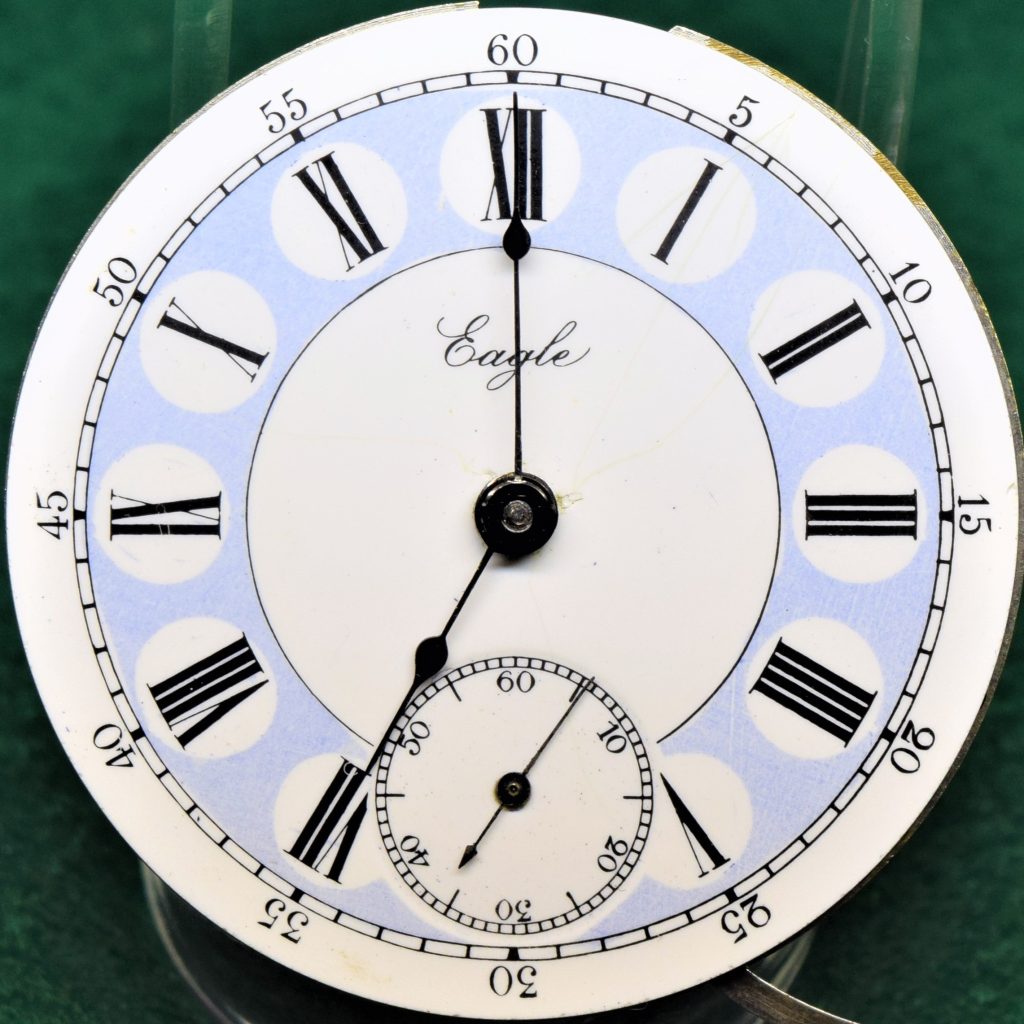

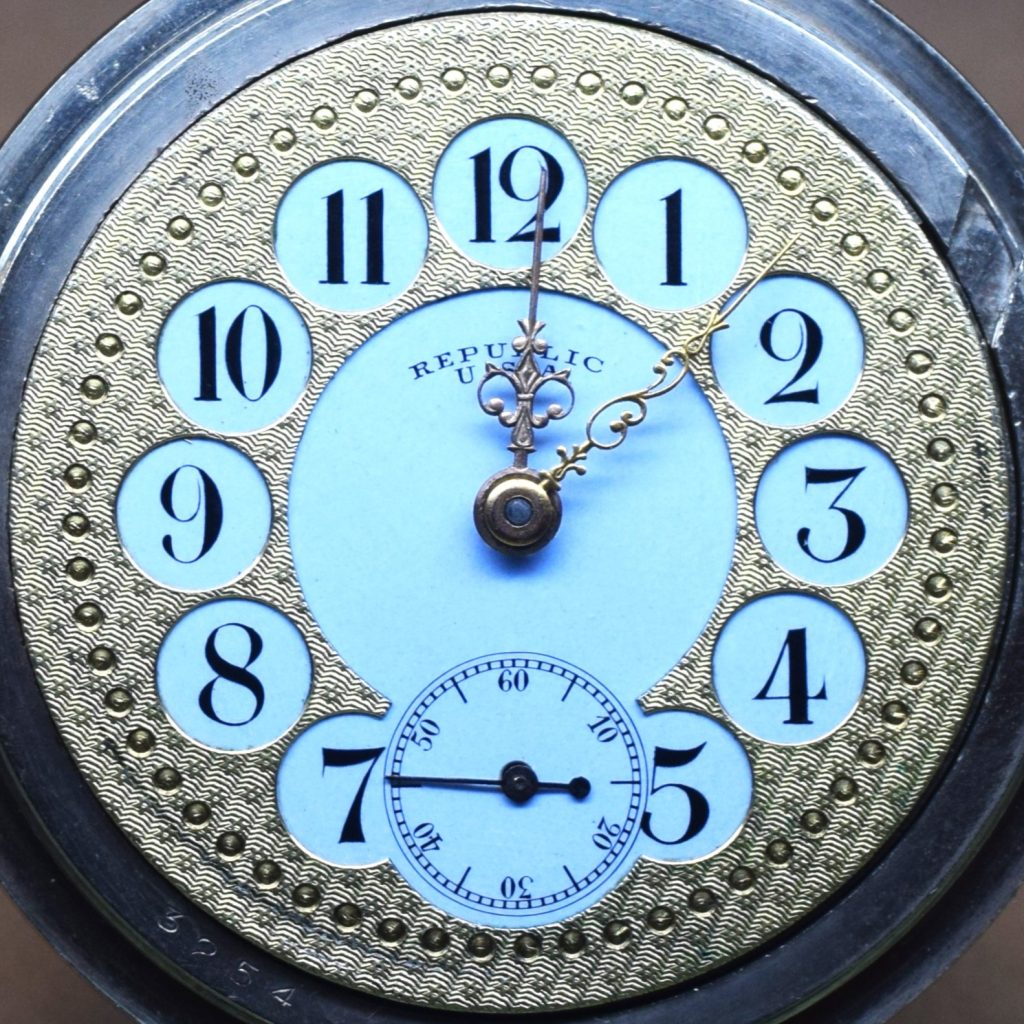

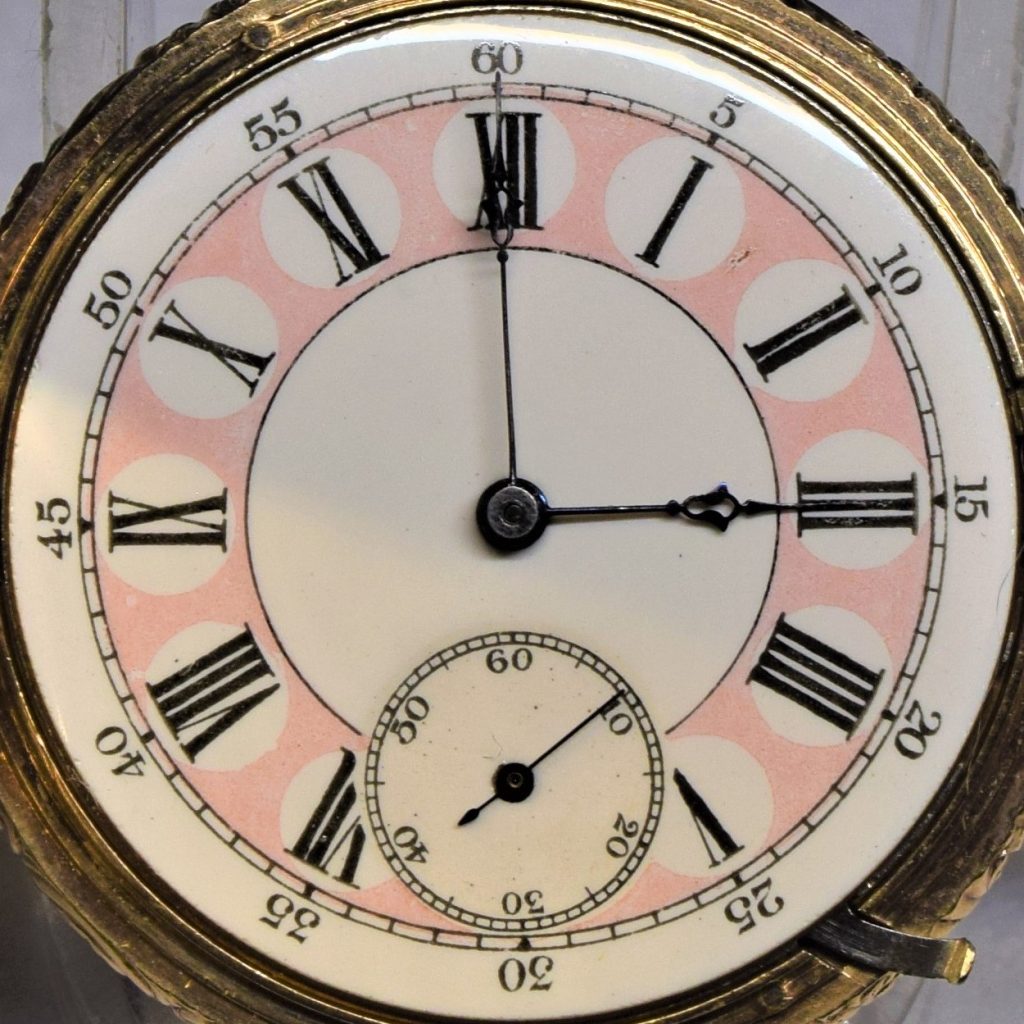
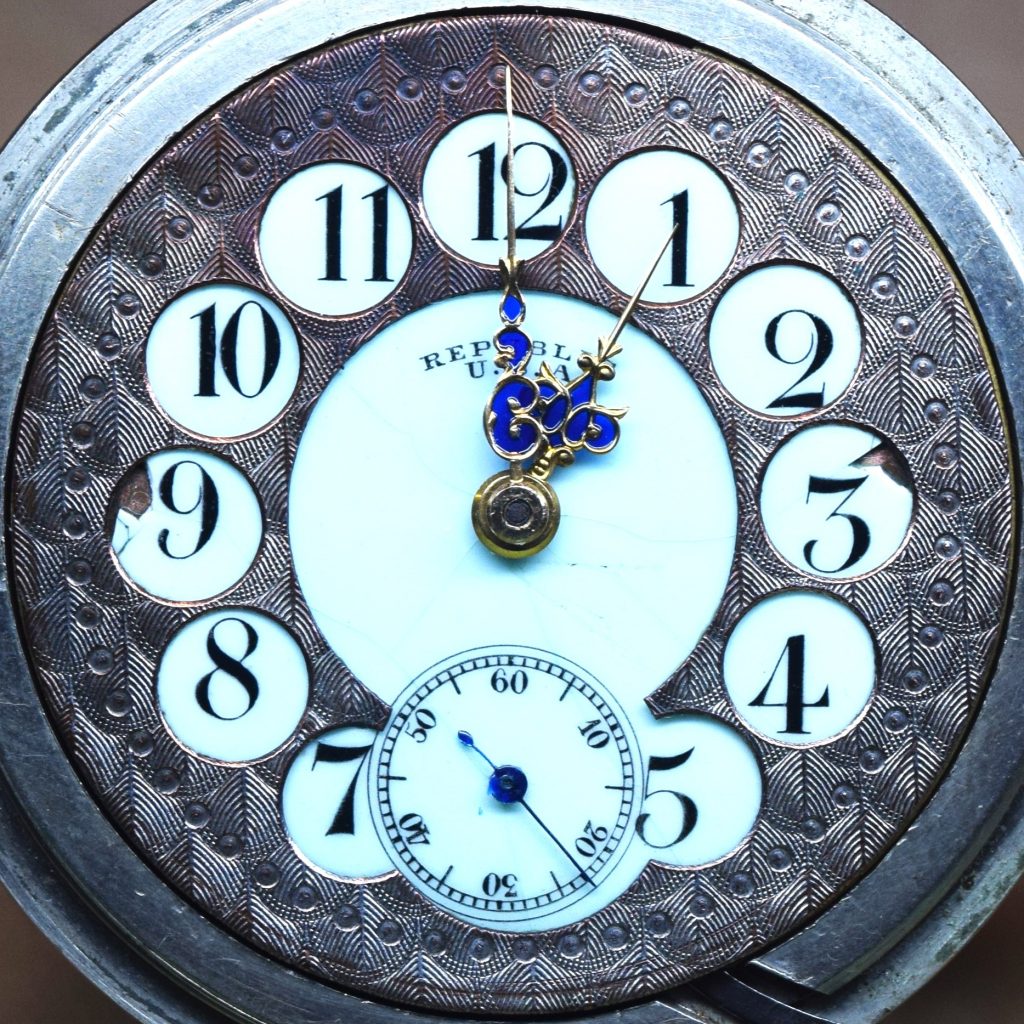
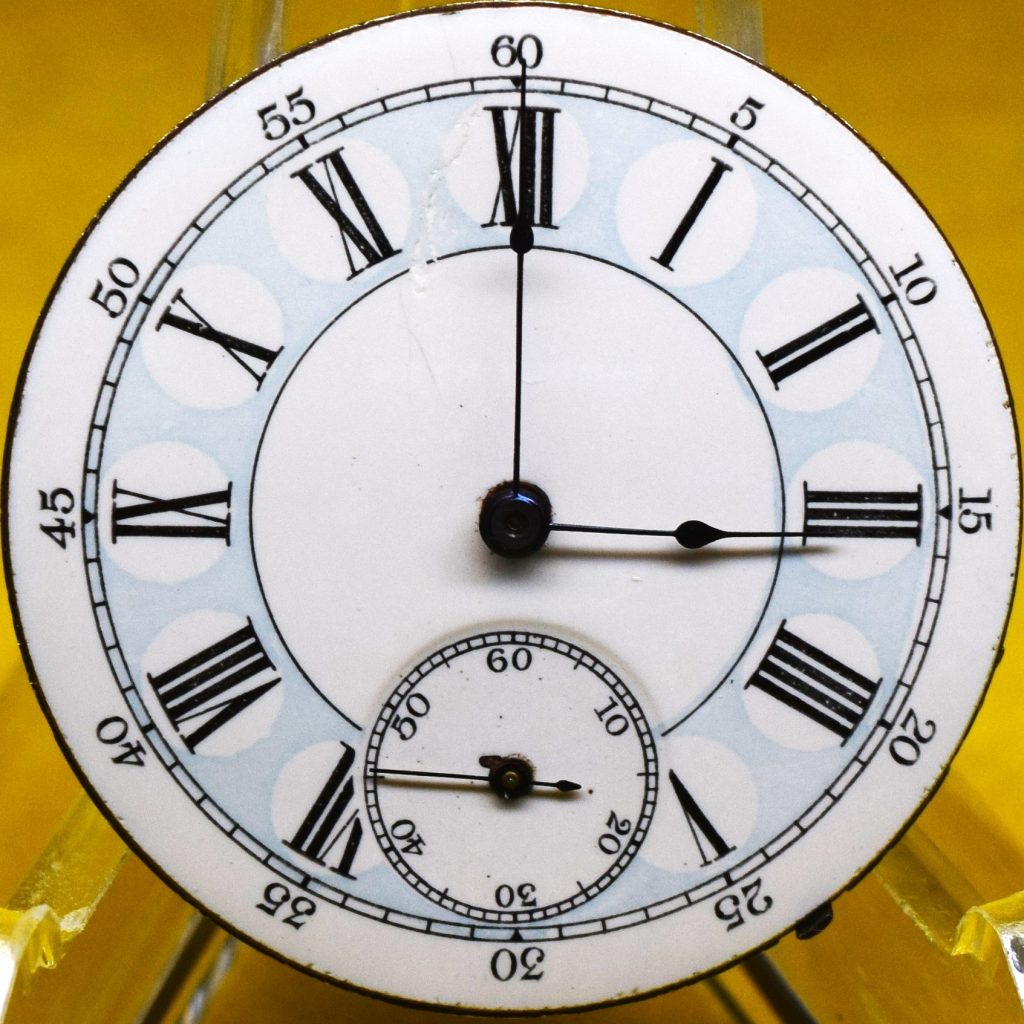
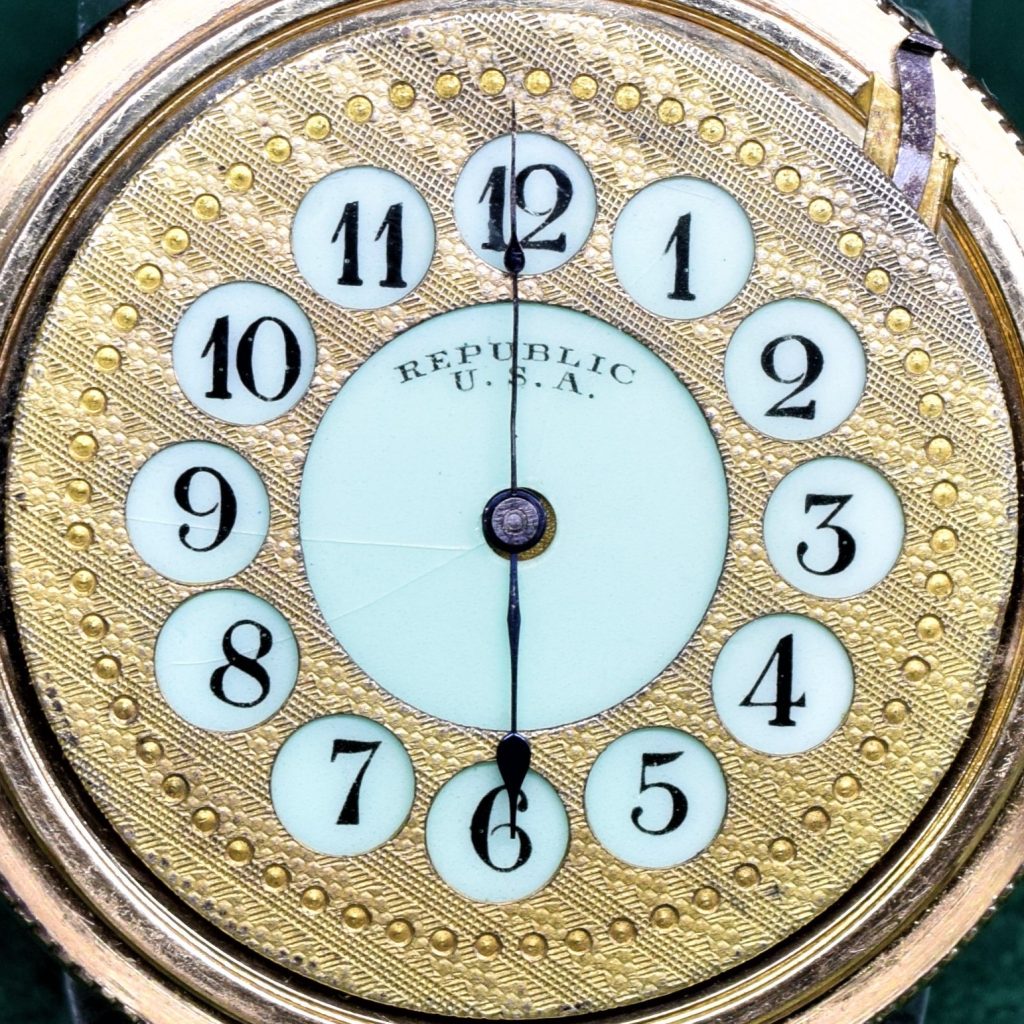
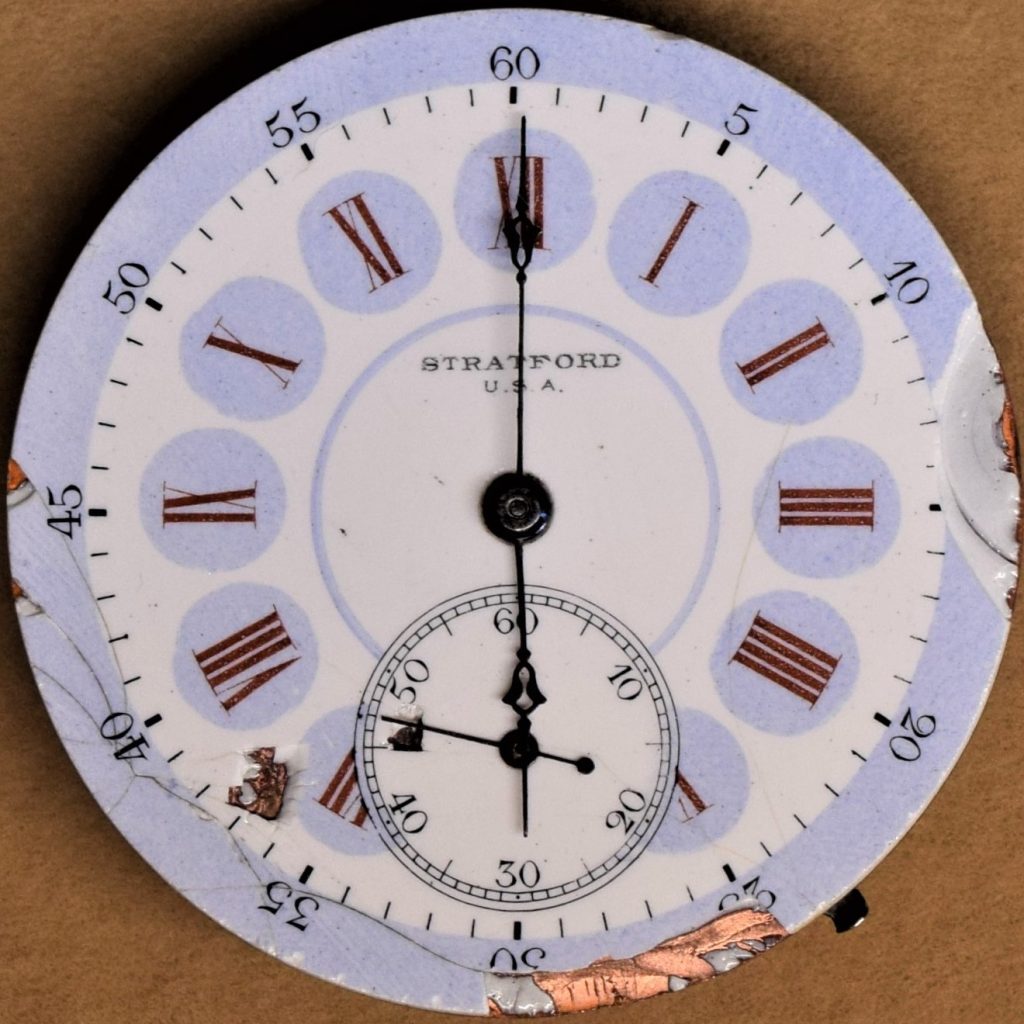

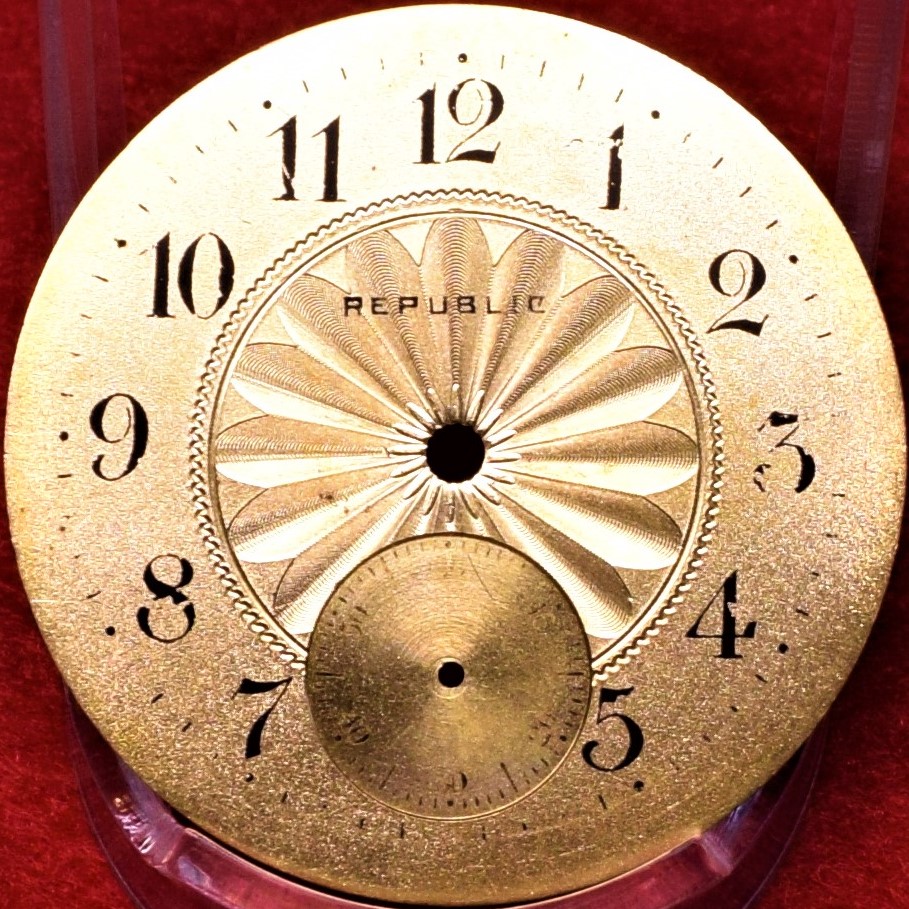
Seth Thomas Private Label Pocket Watch Dials
The Seth Thomas Watch Company did not leave us with Item Numbers for all of the dials that they produced. These are the un-numbered dials from some of the most common Named Grade and Private Label pocket watches that Seth Thomas produced.
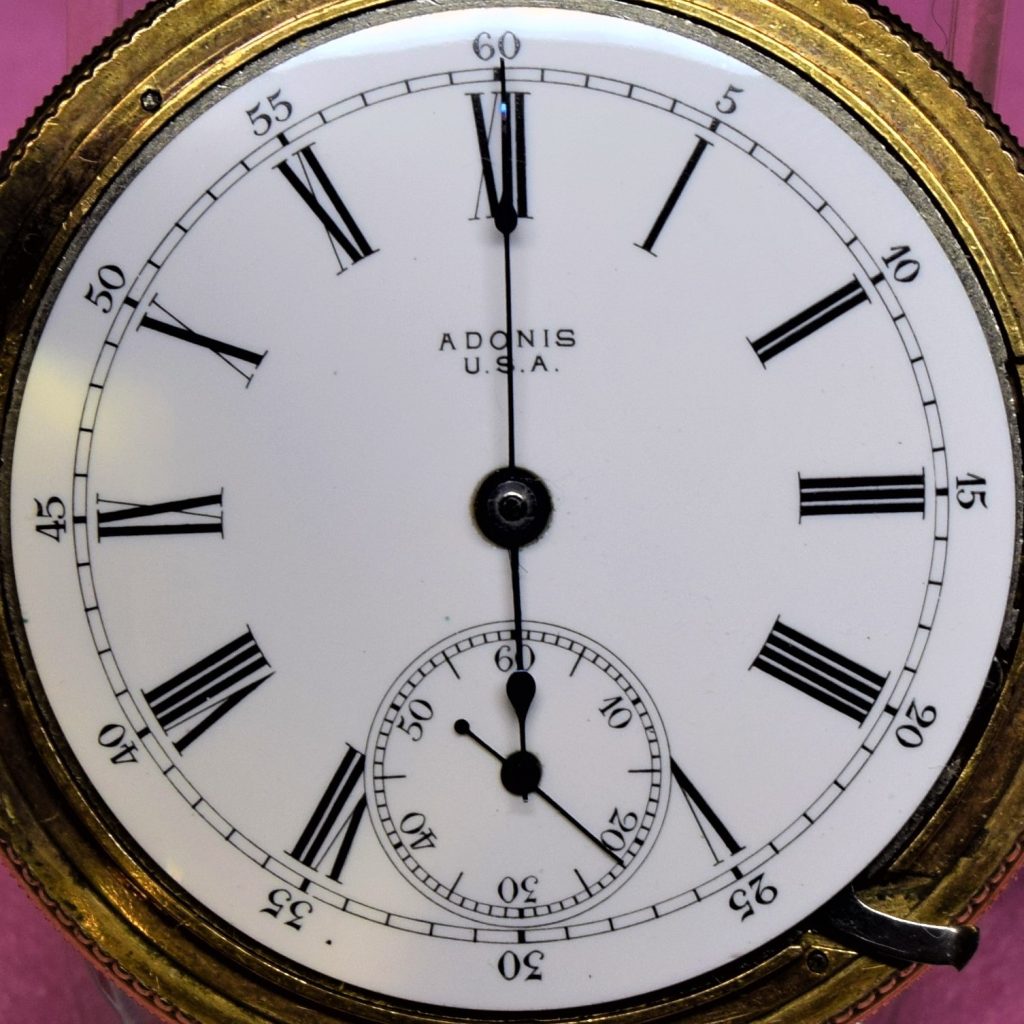
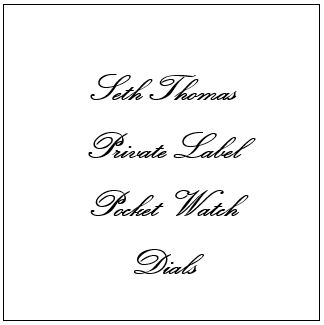
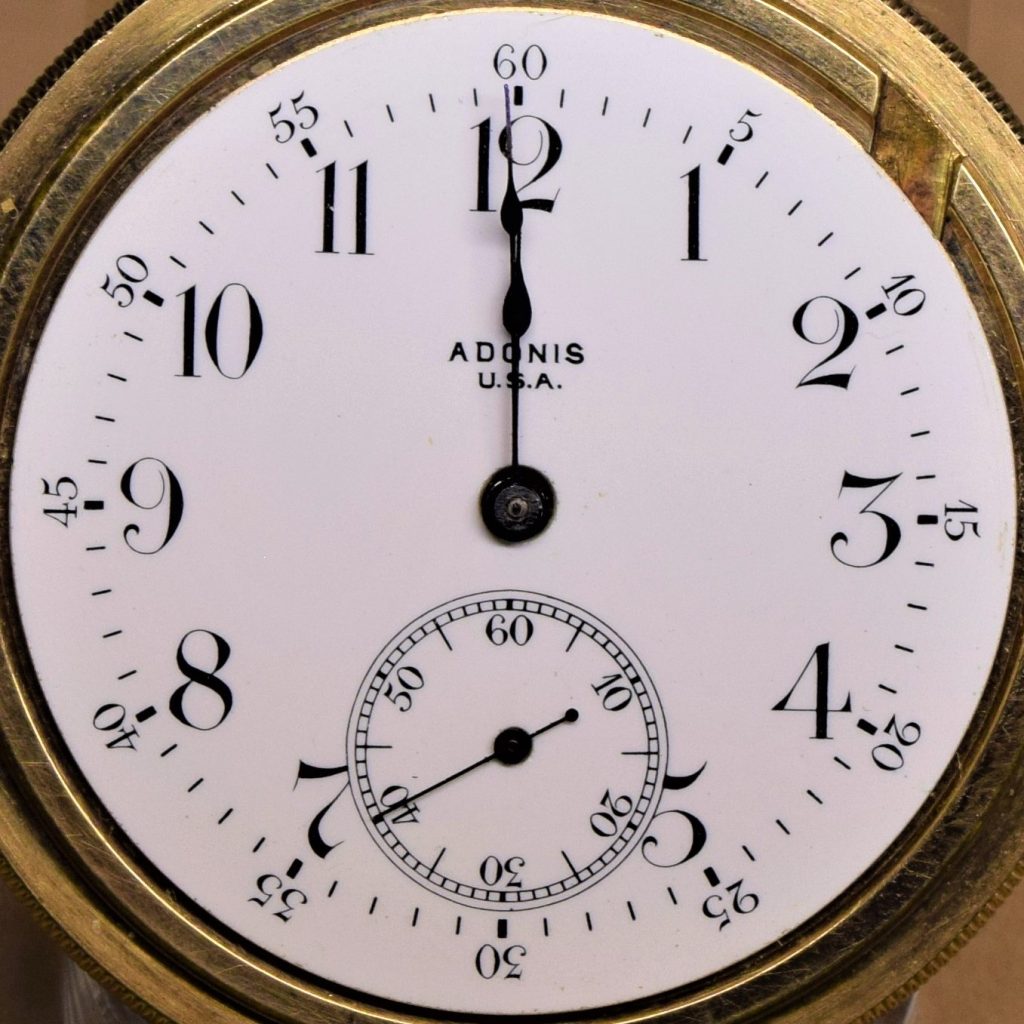
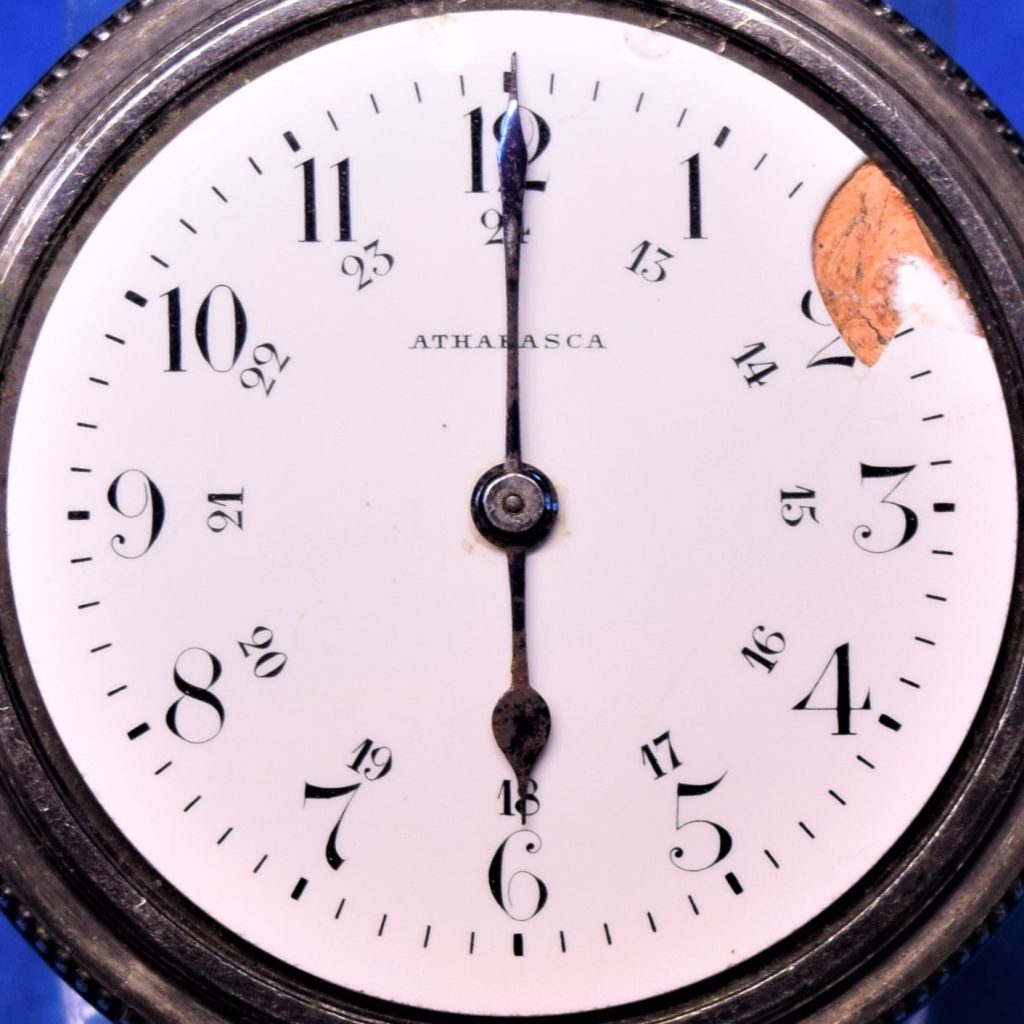
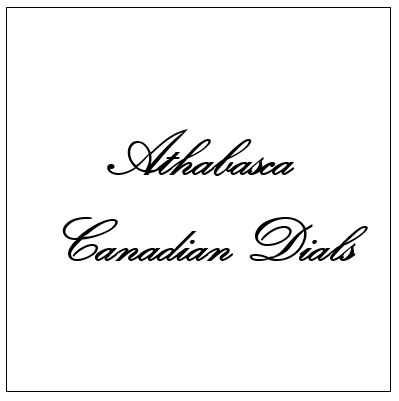


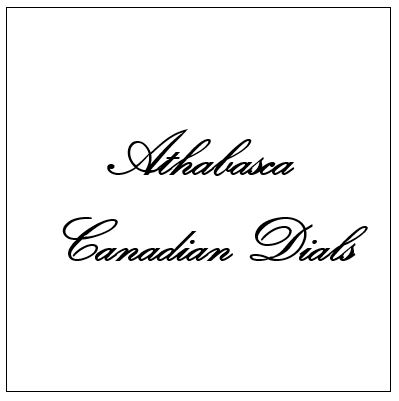
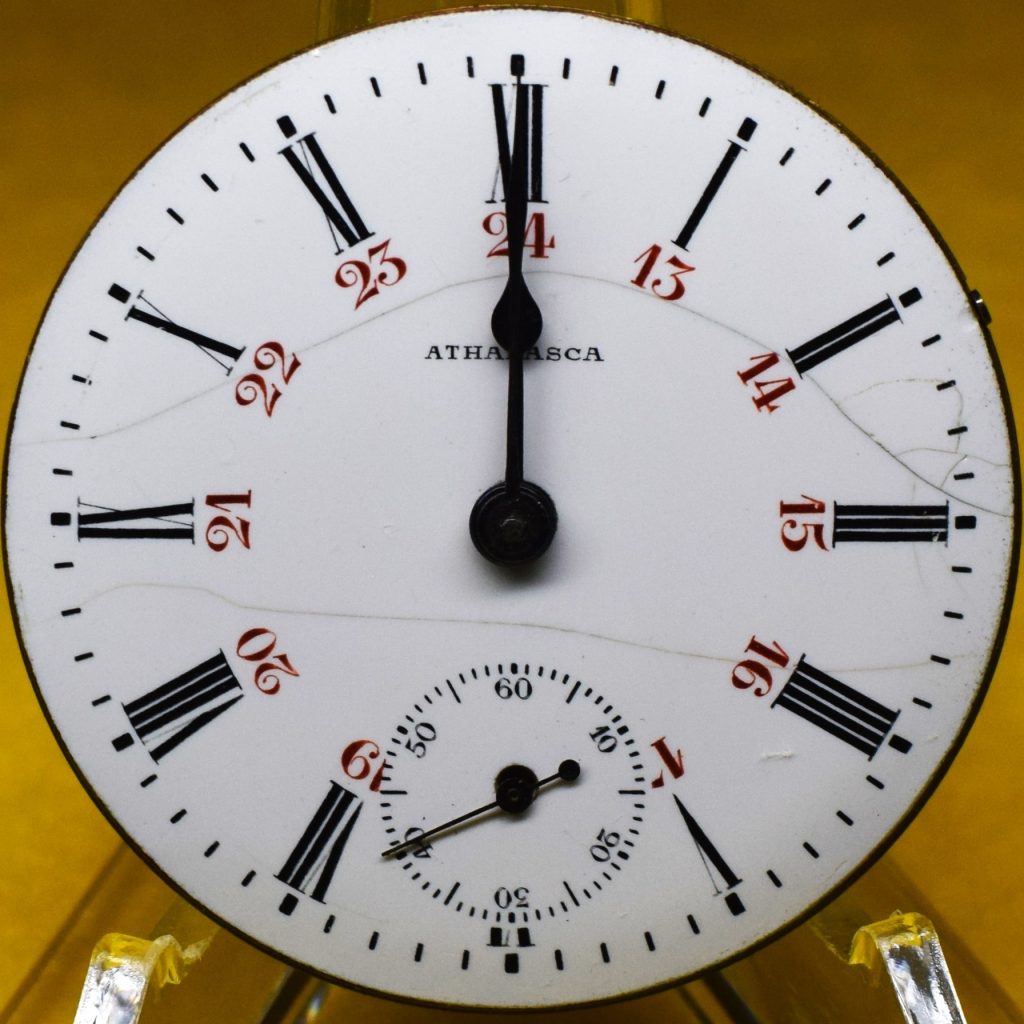

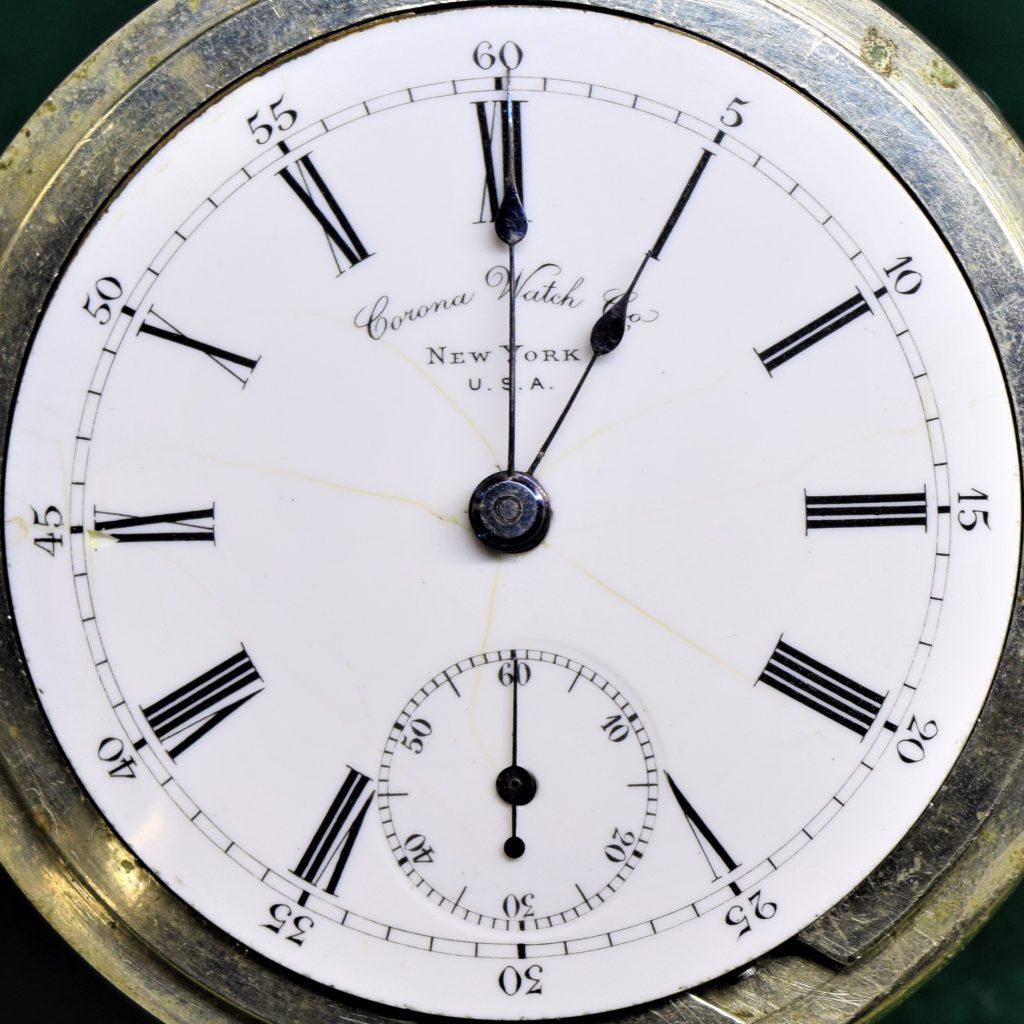
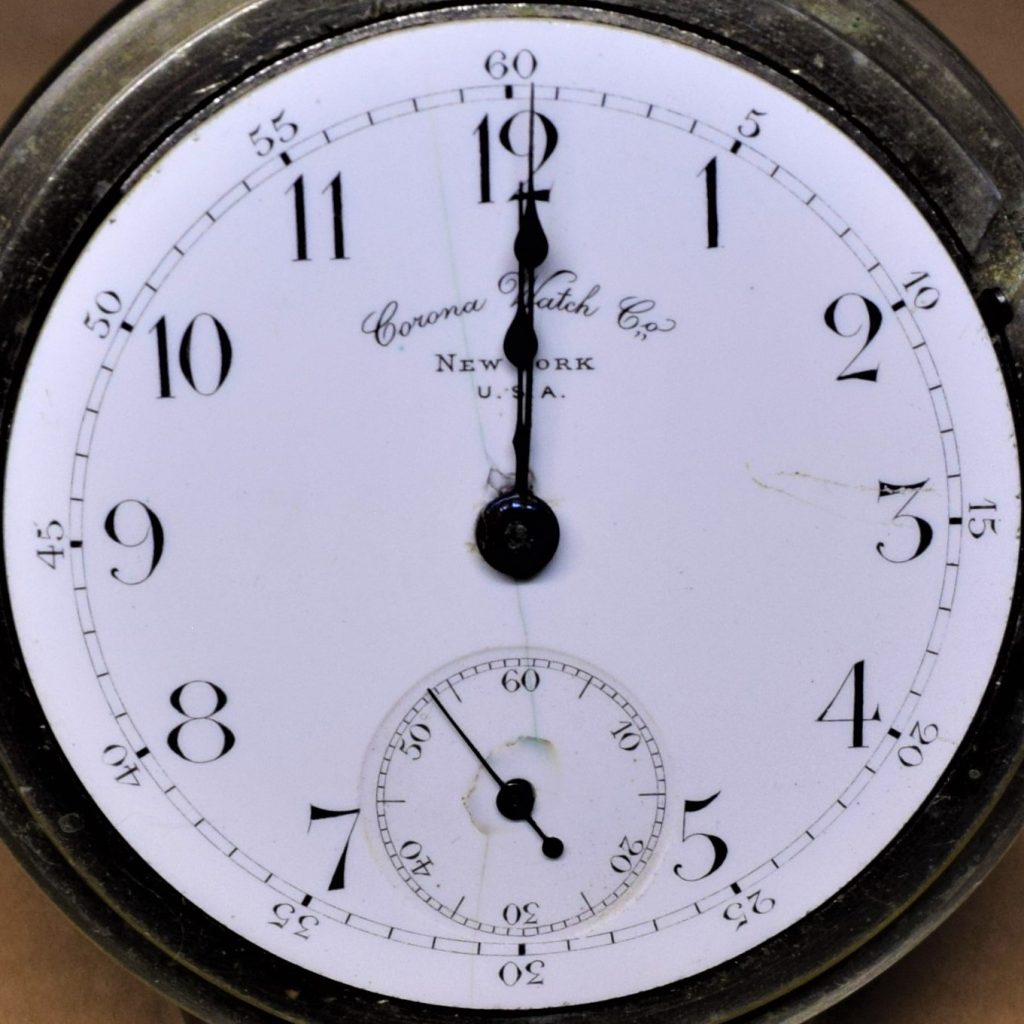
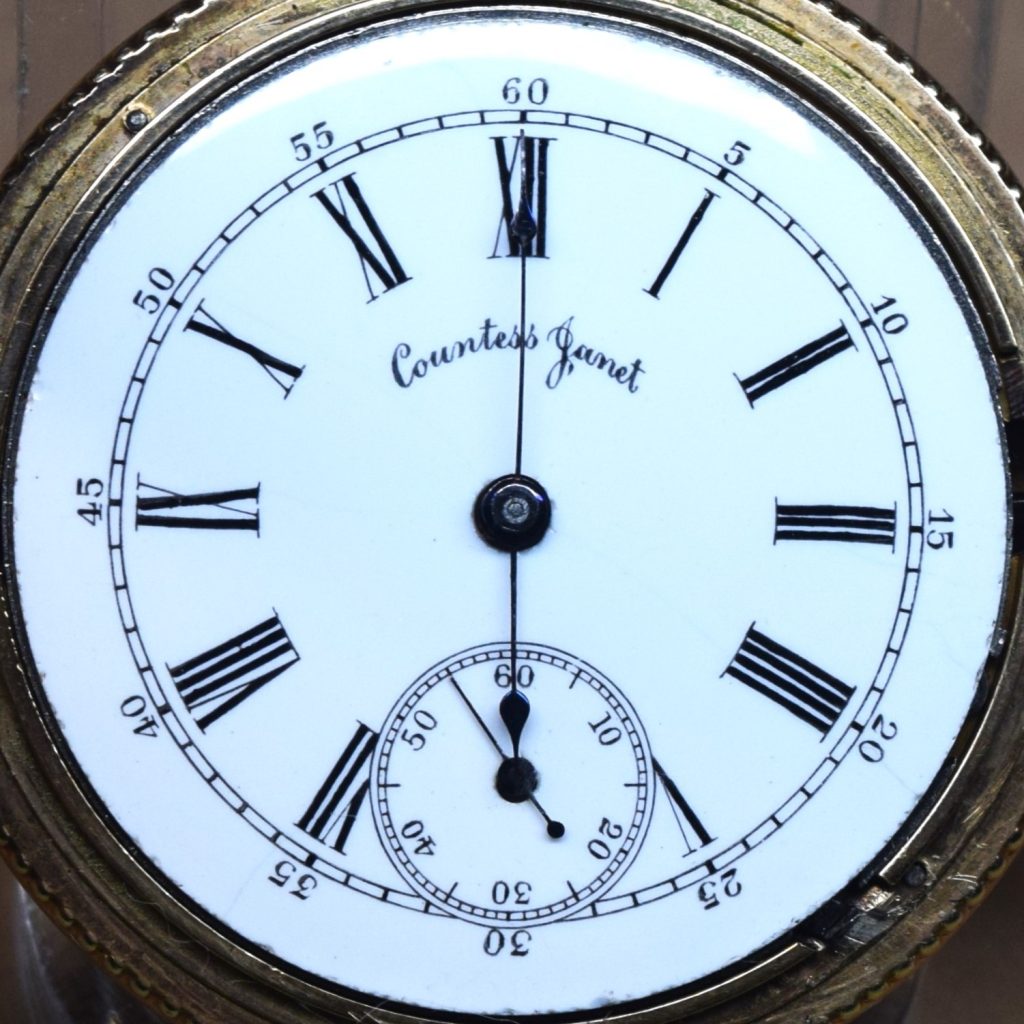
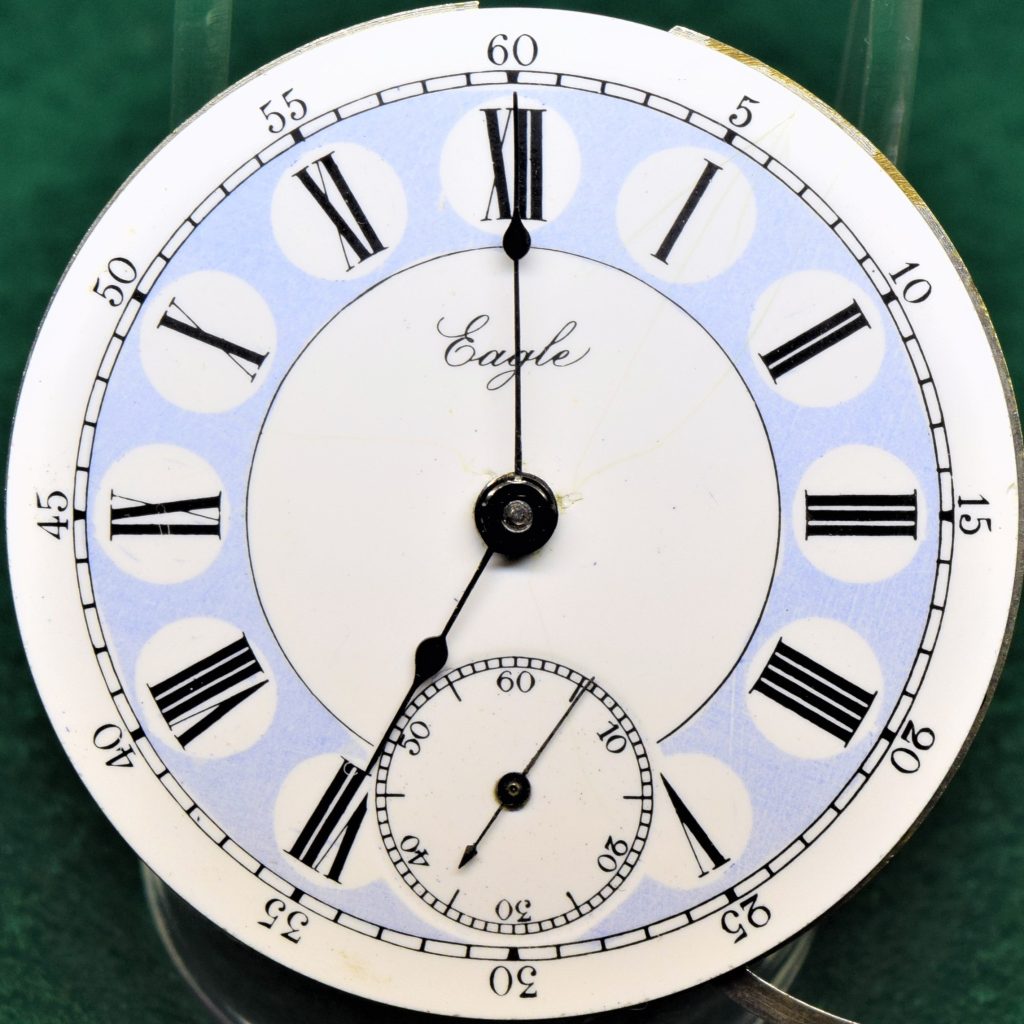

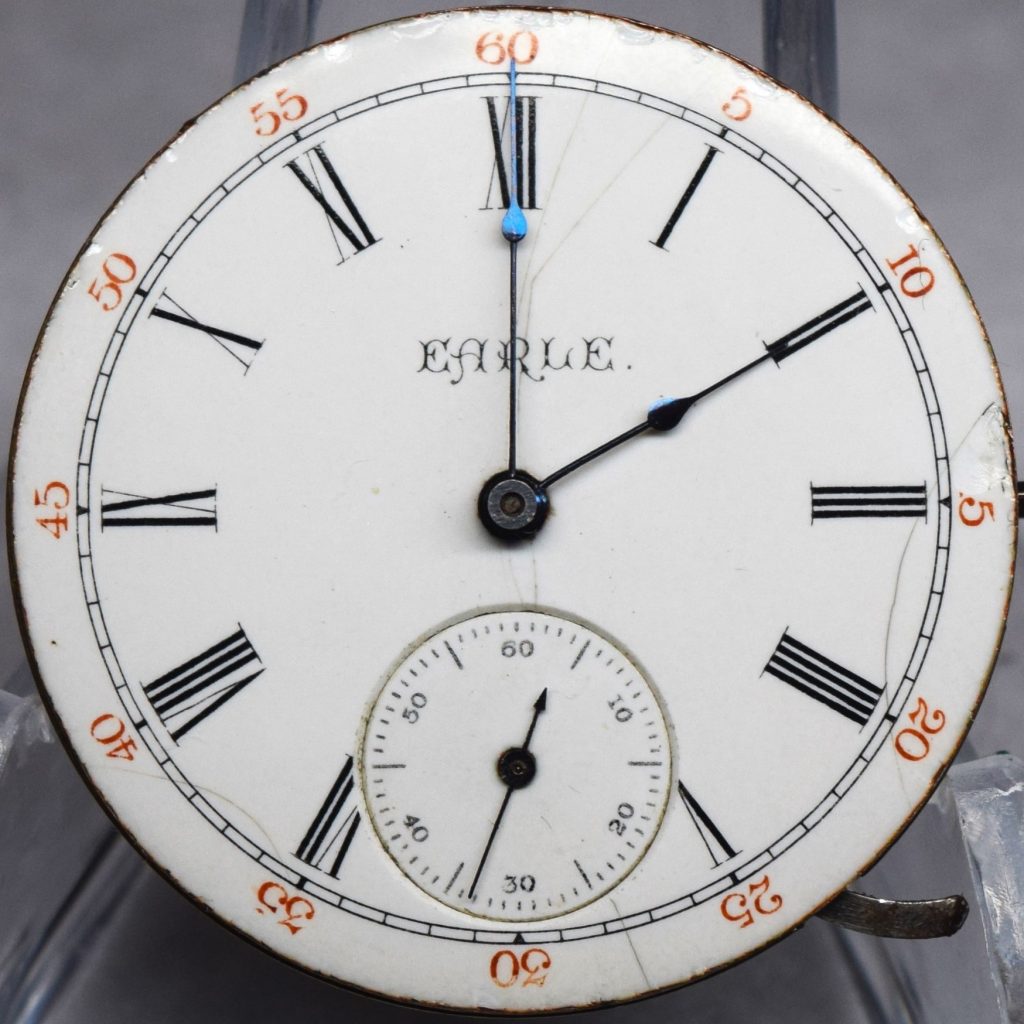
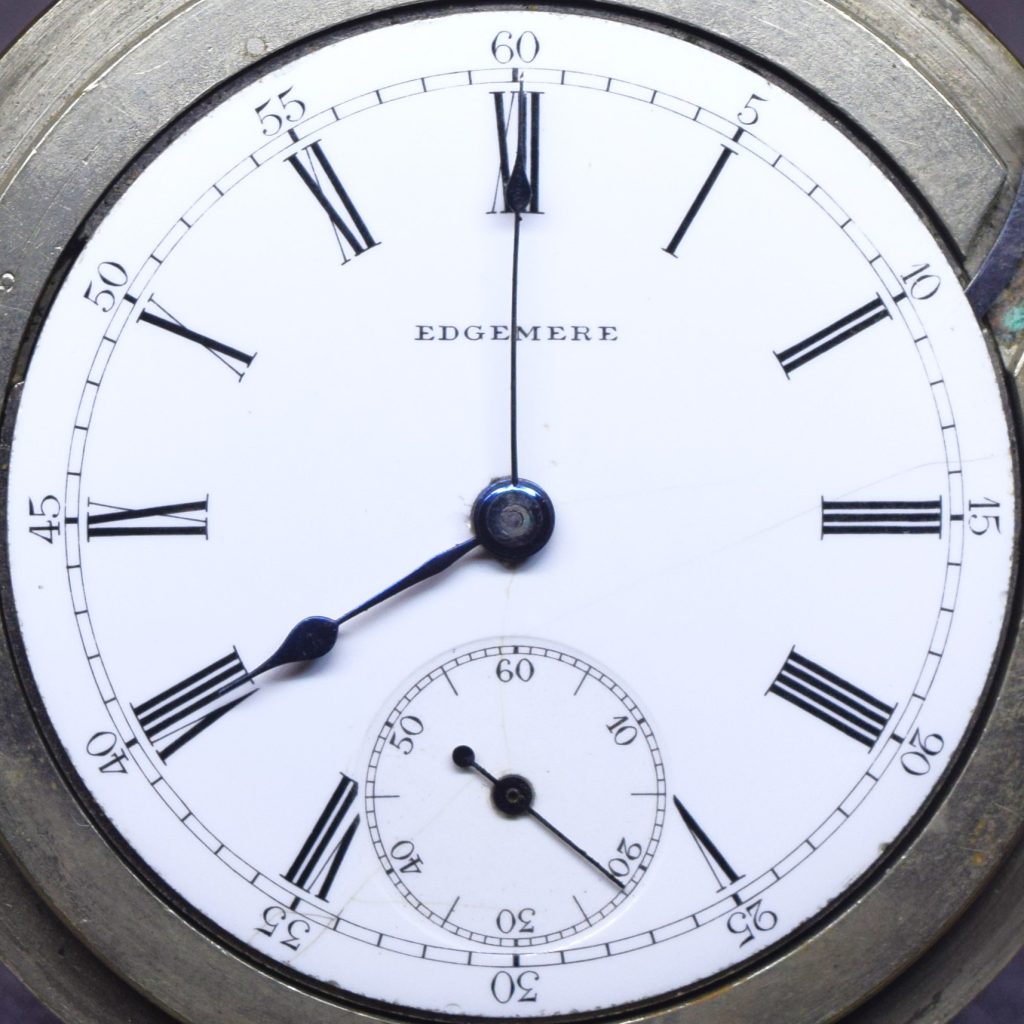
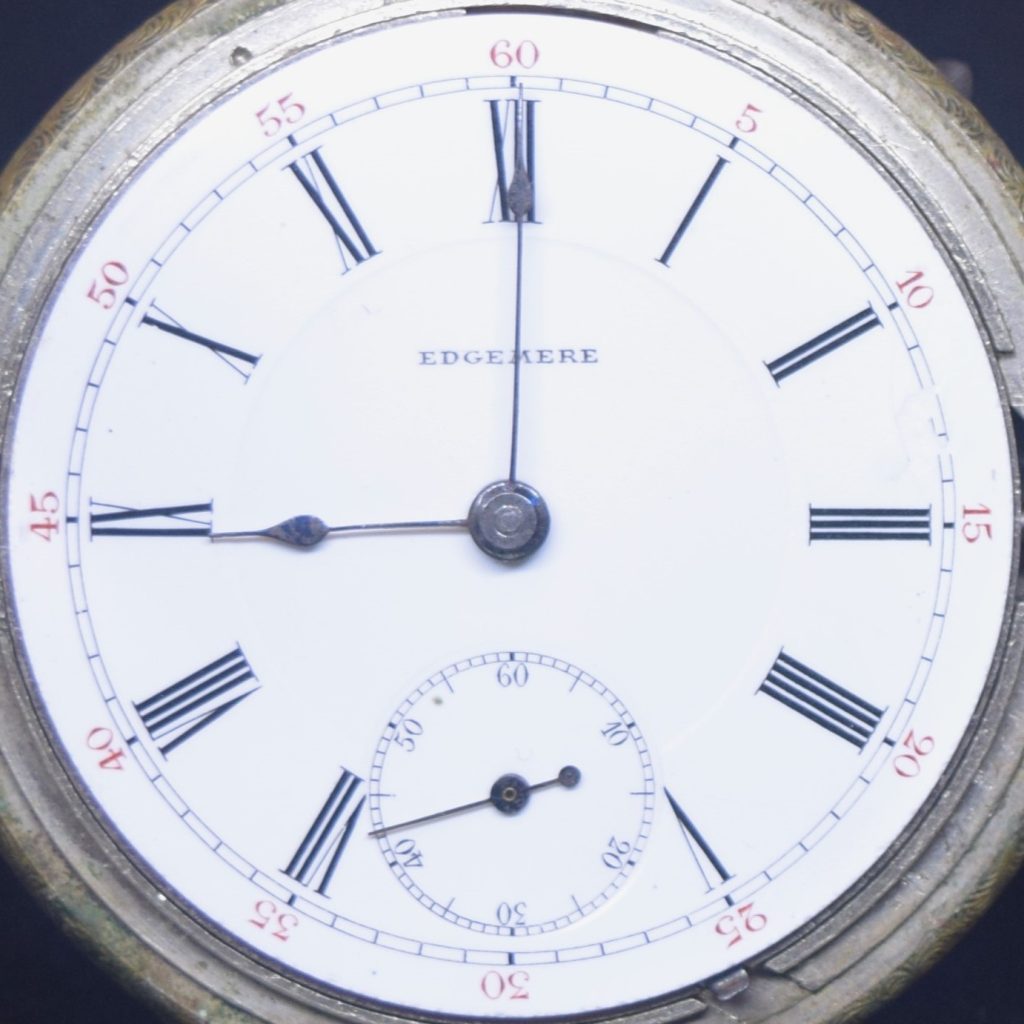
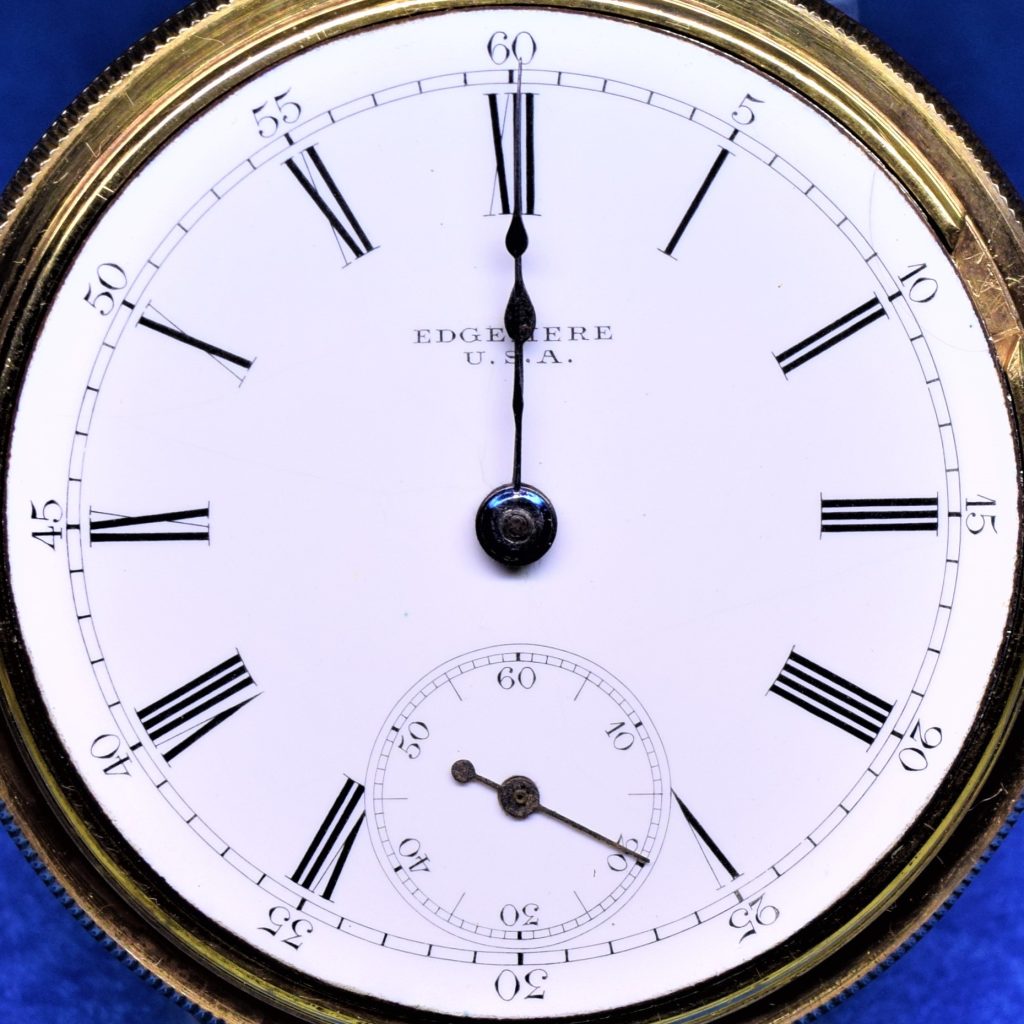
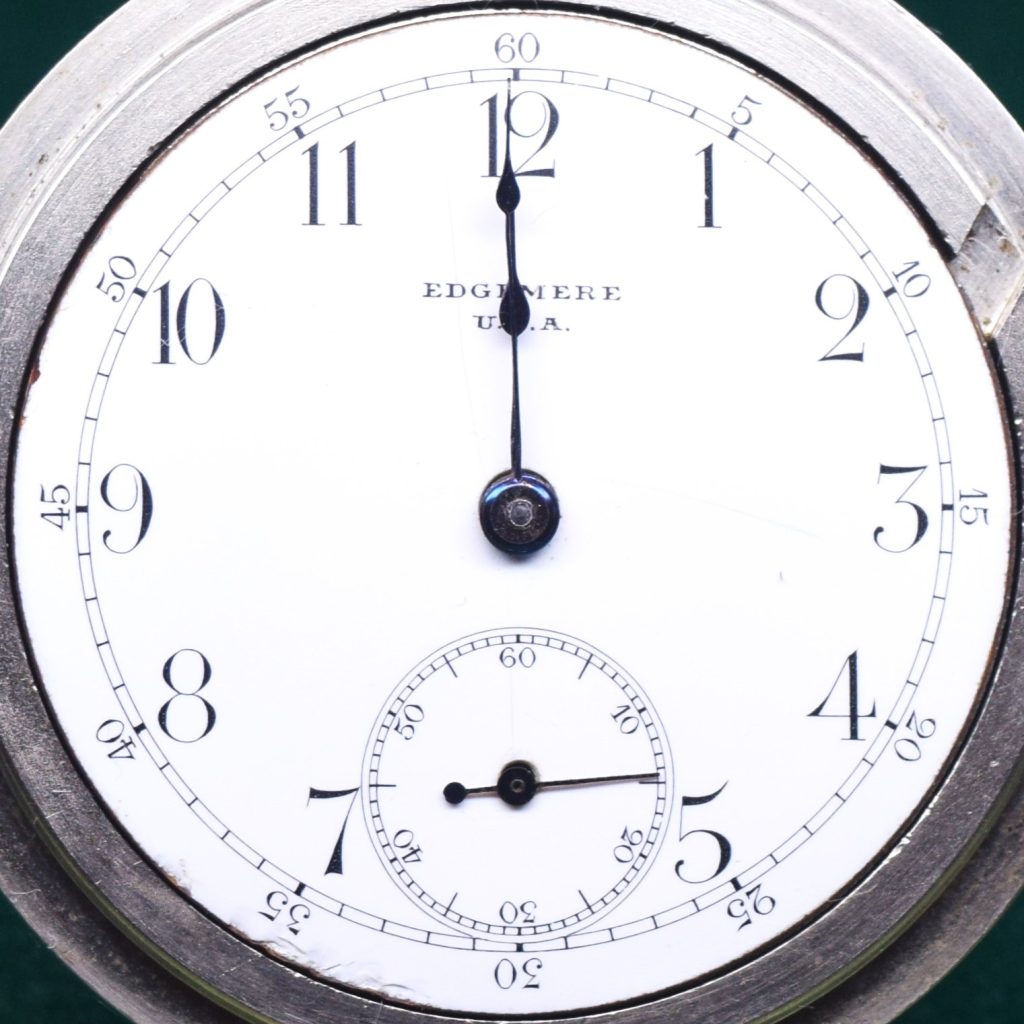
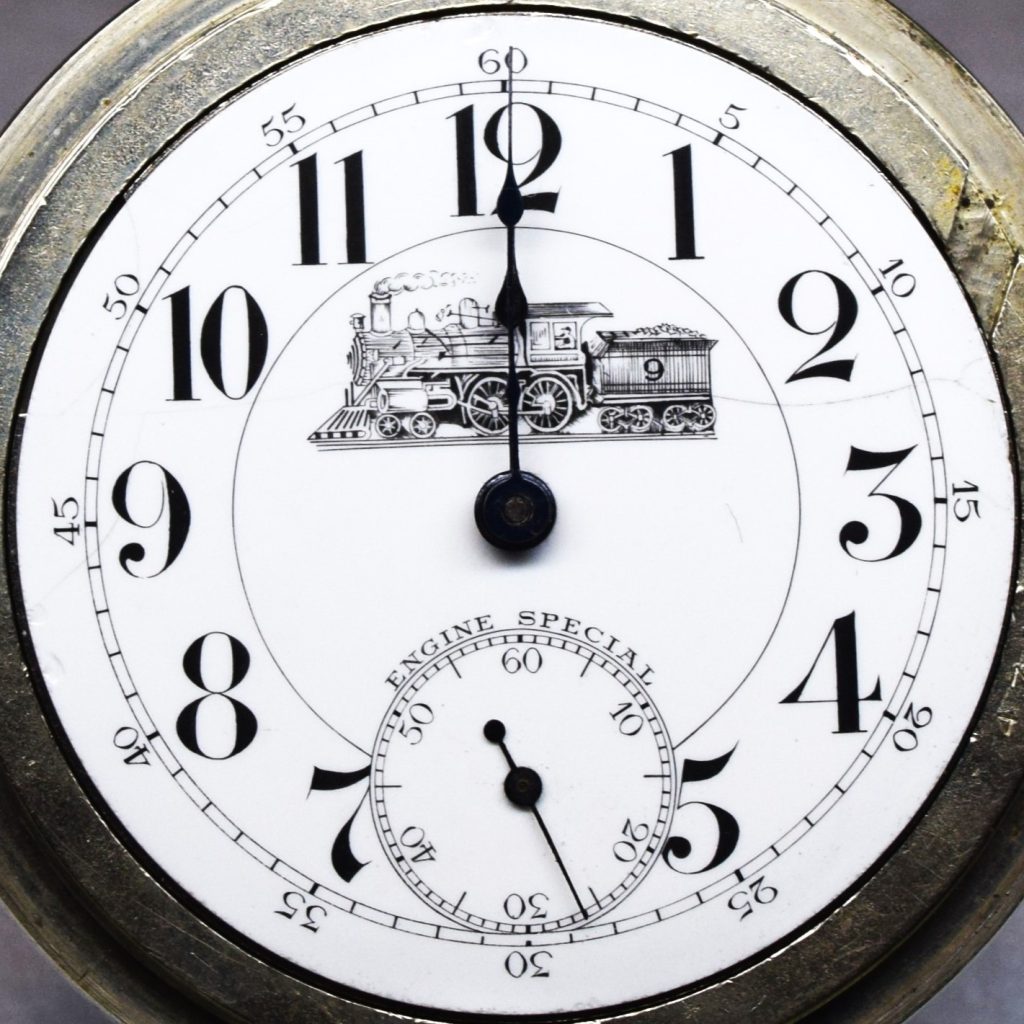
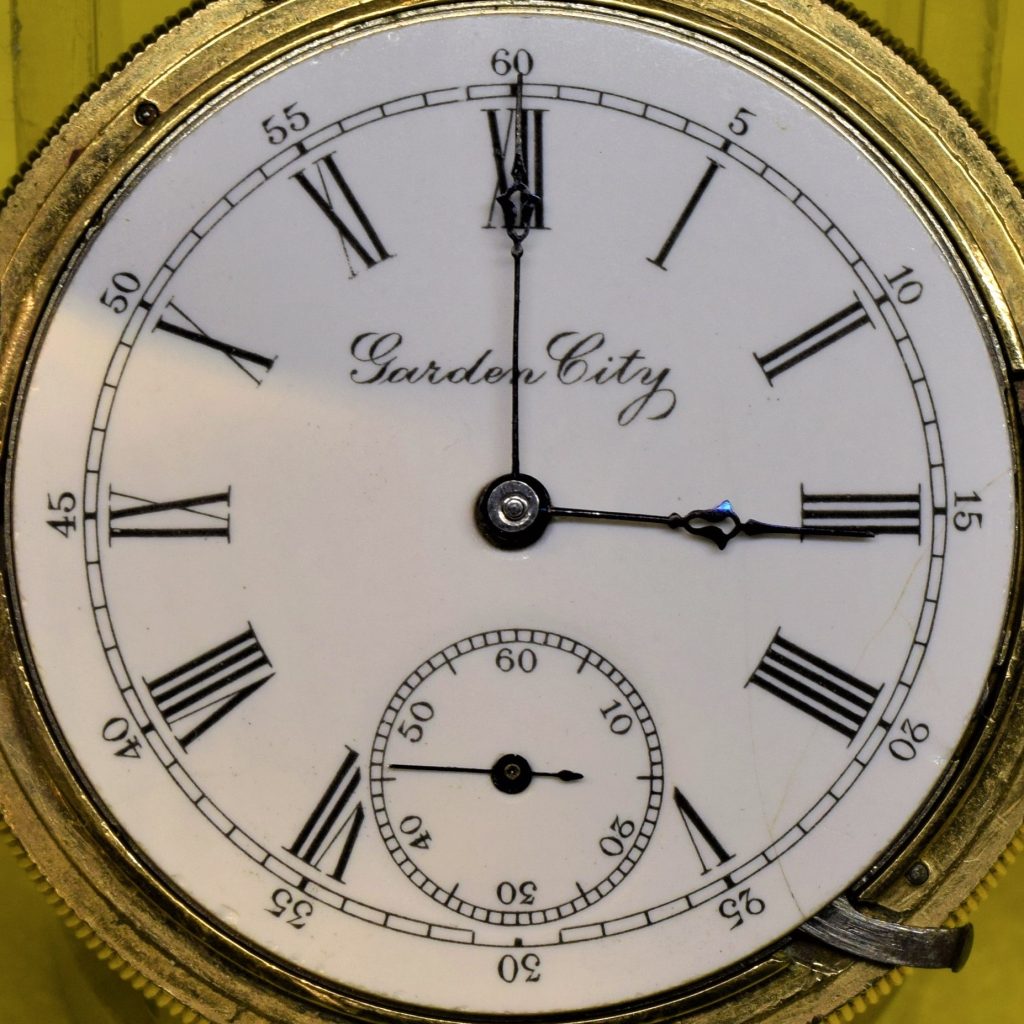

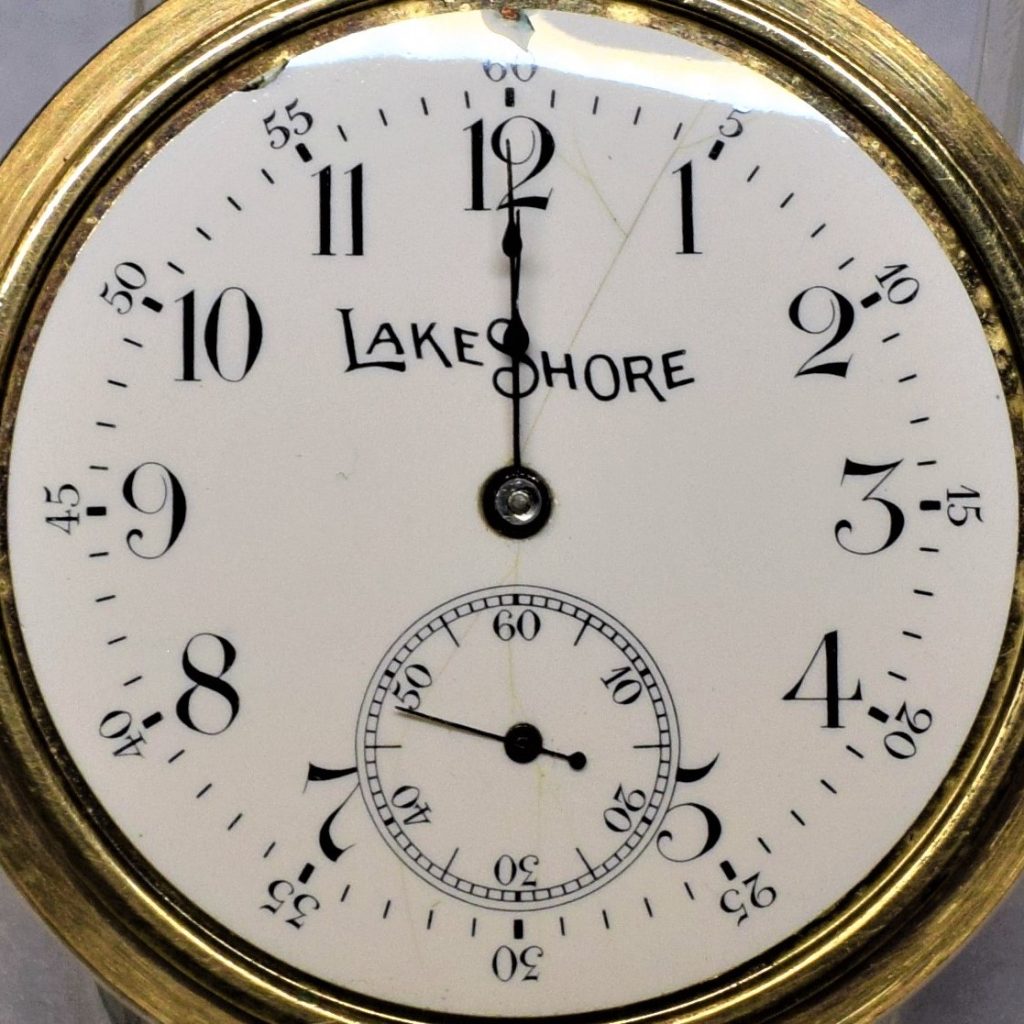
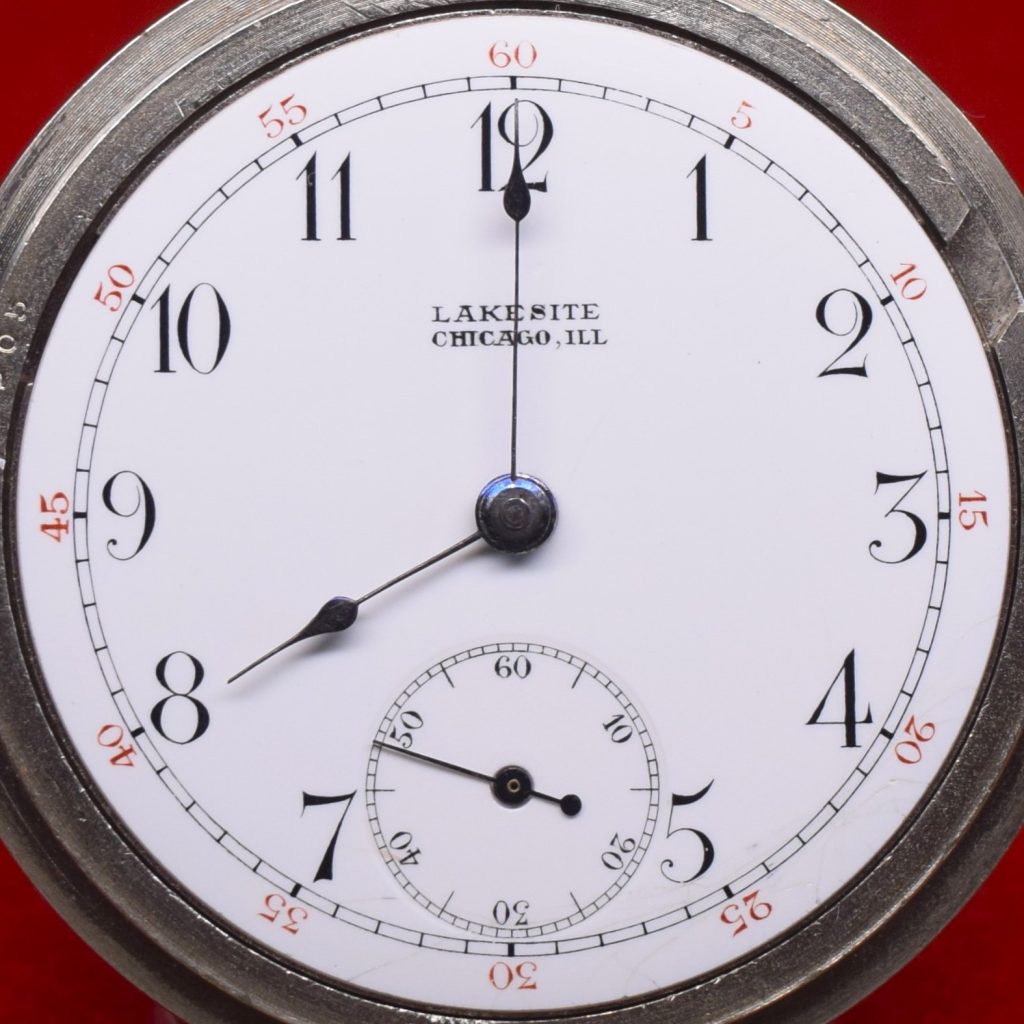
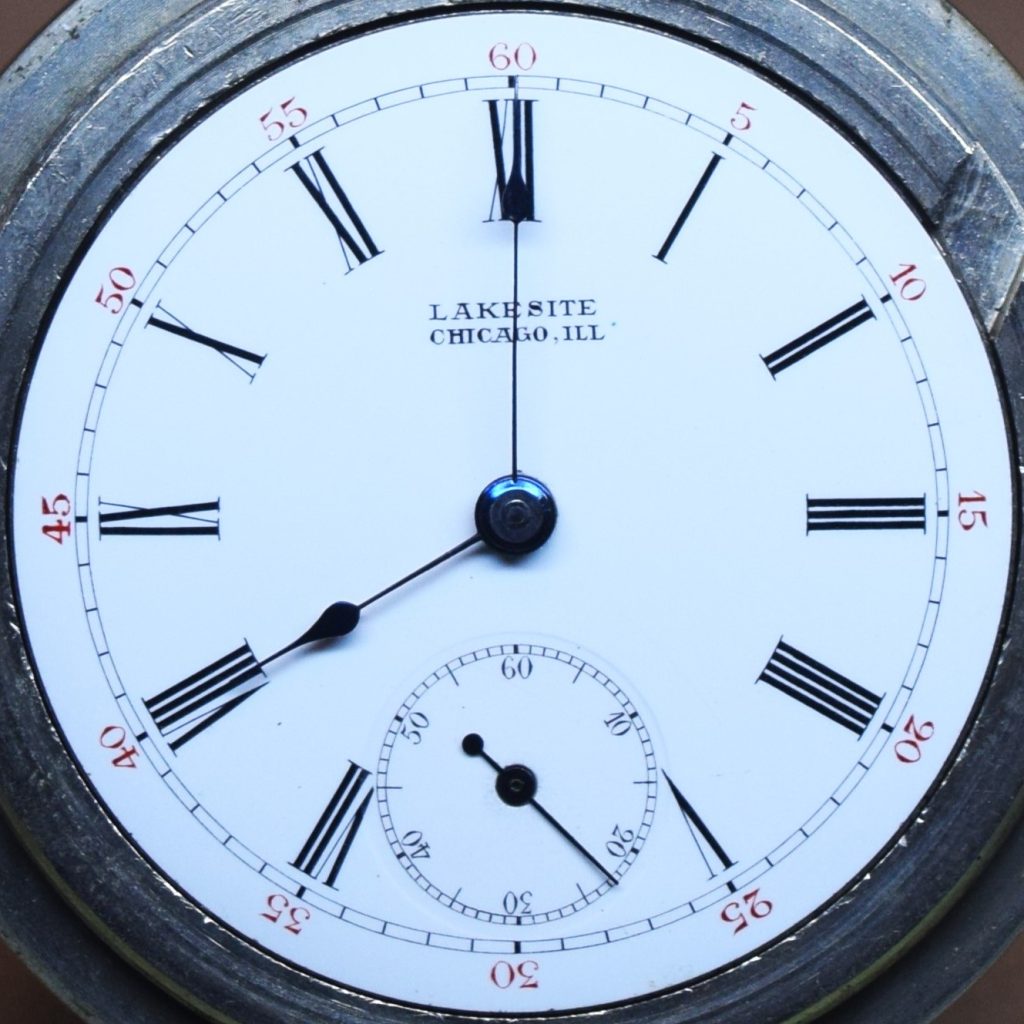
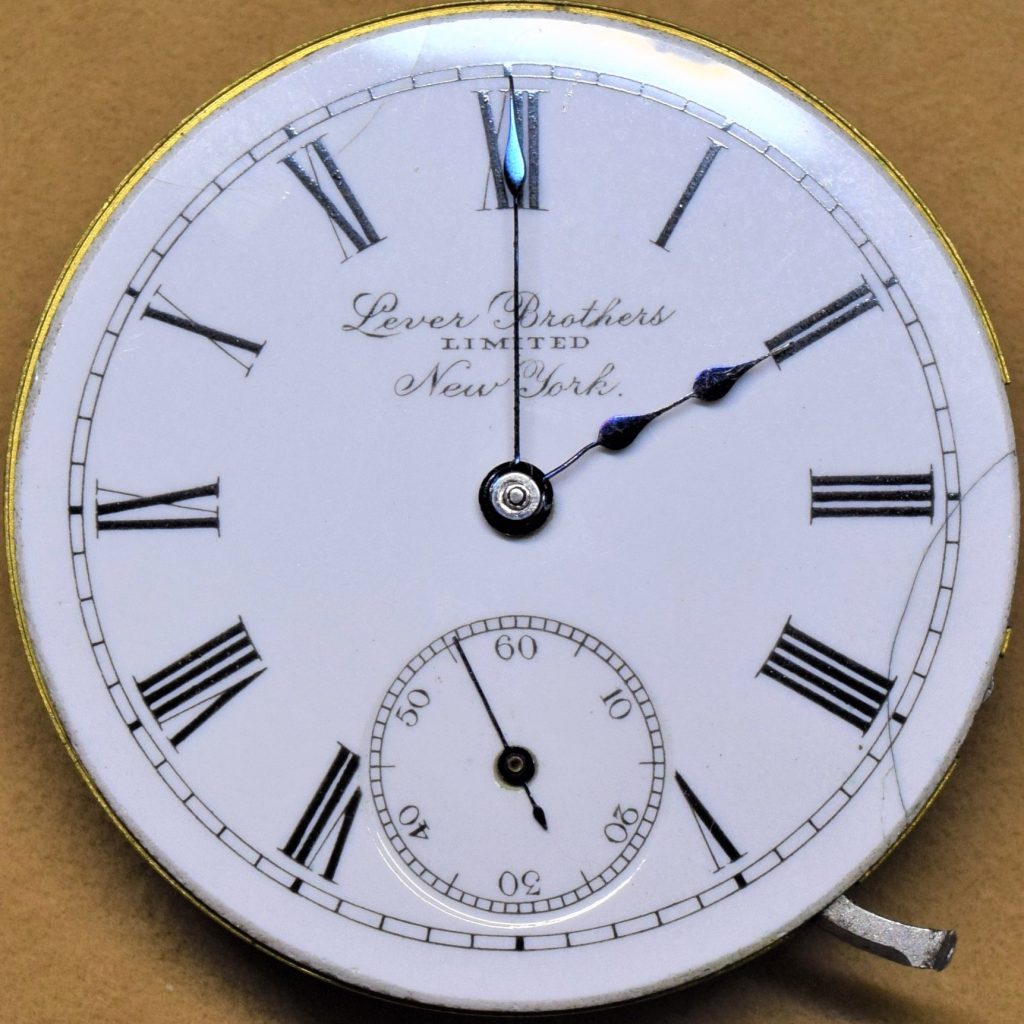
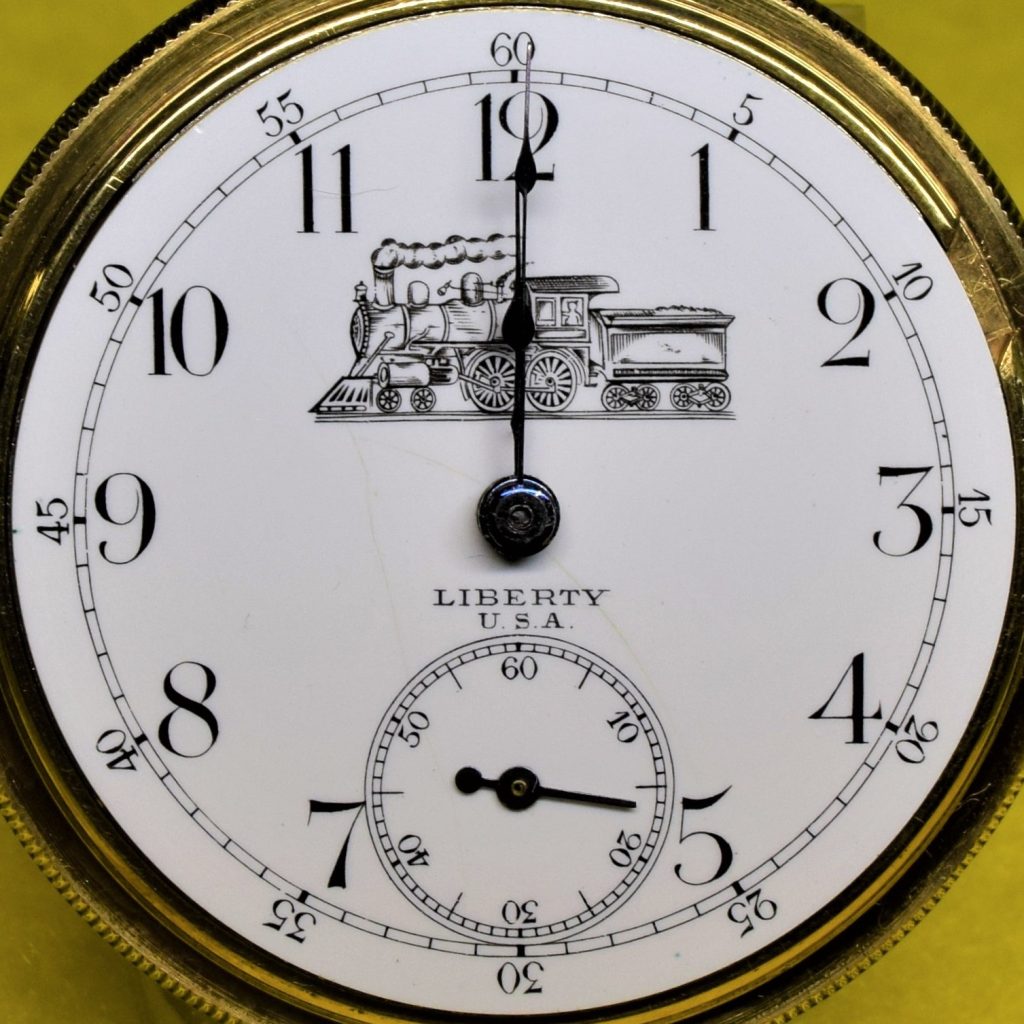

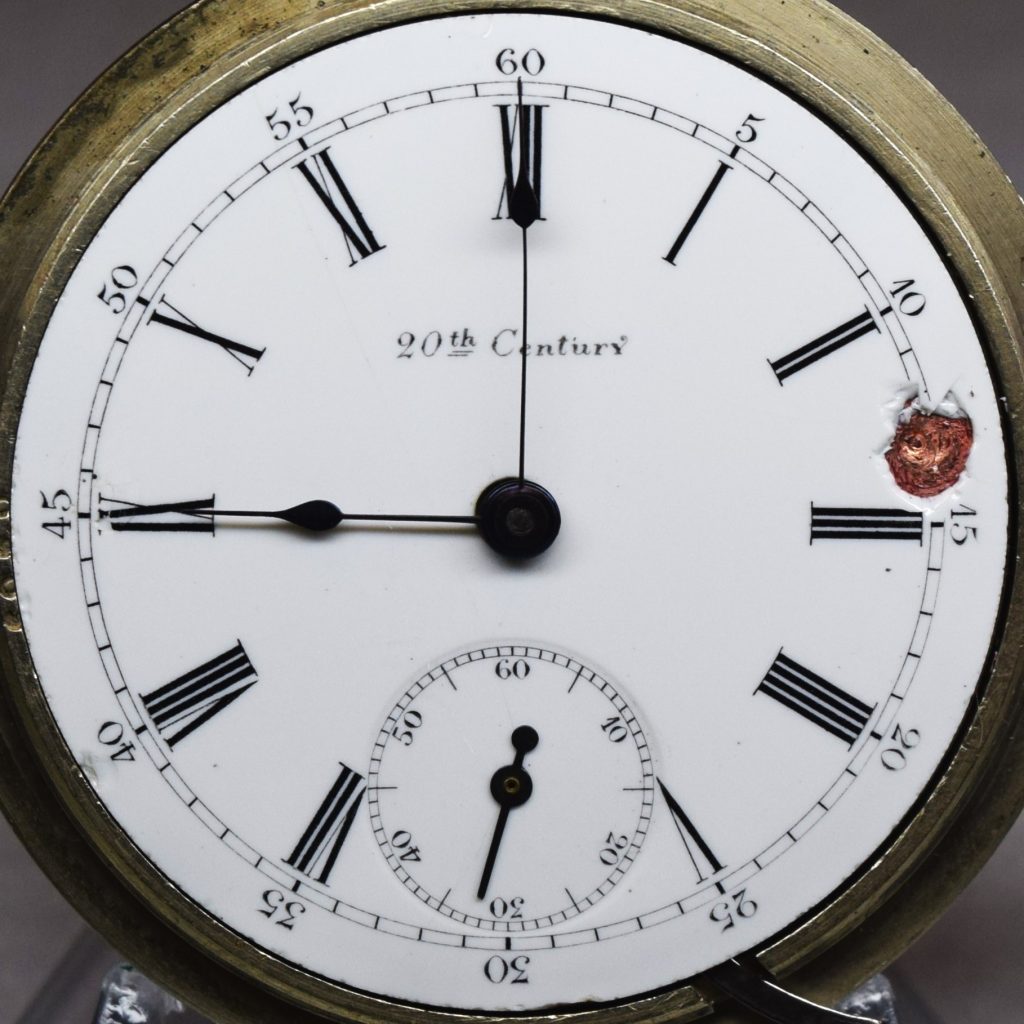
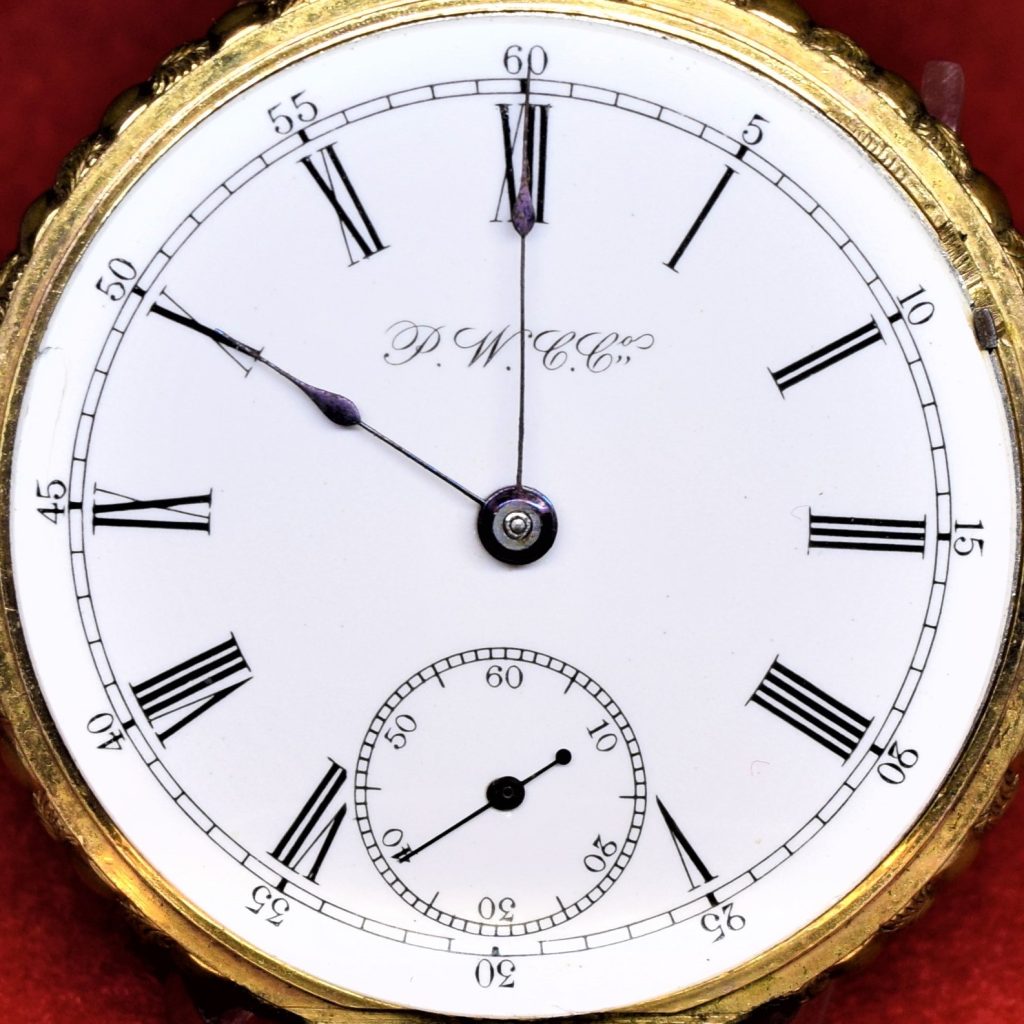
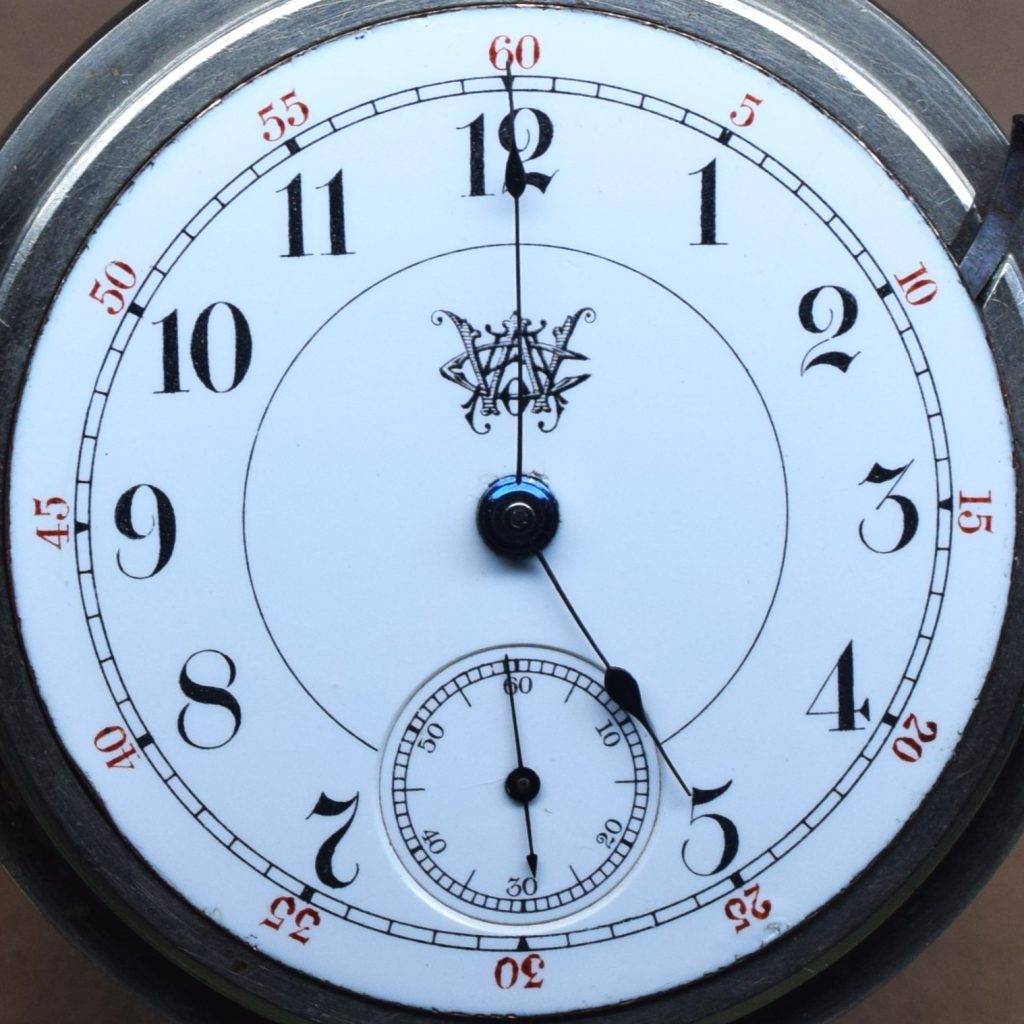
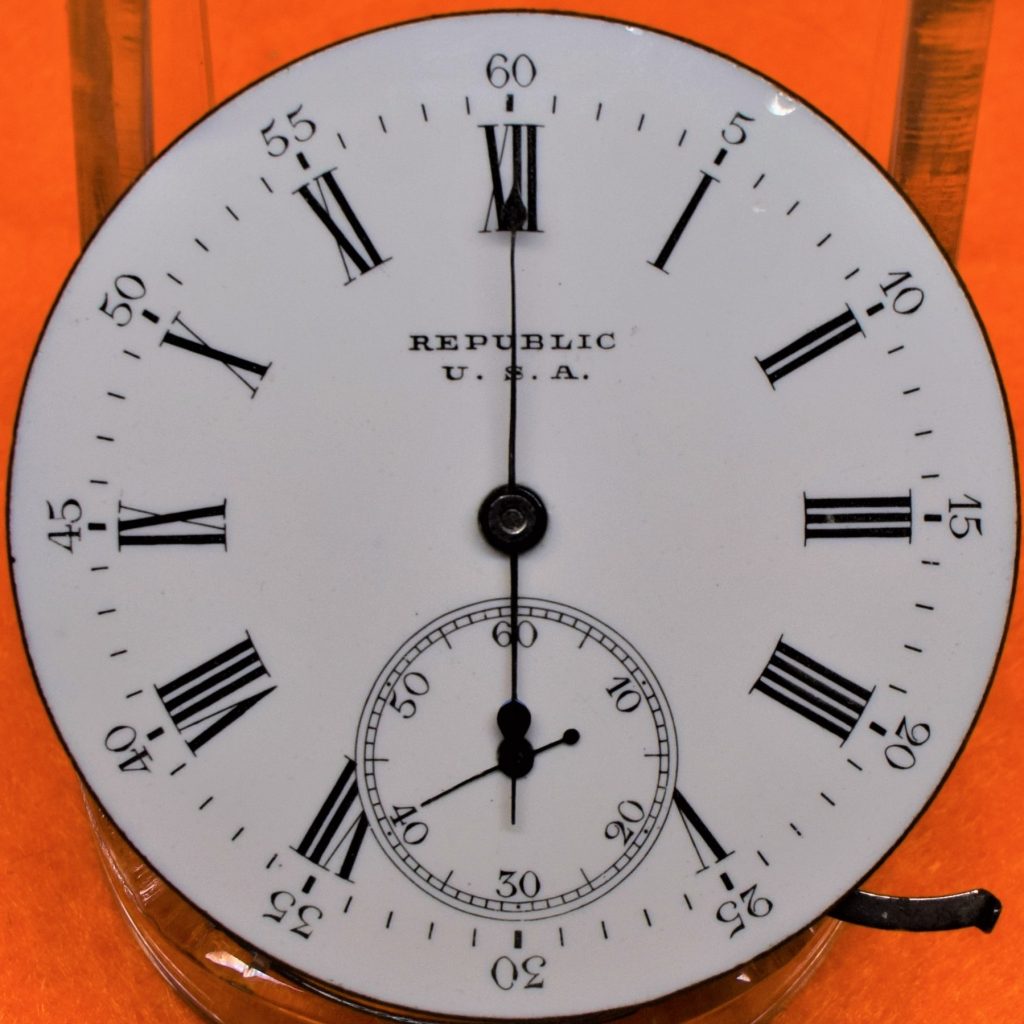
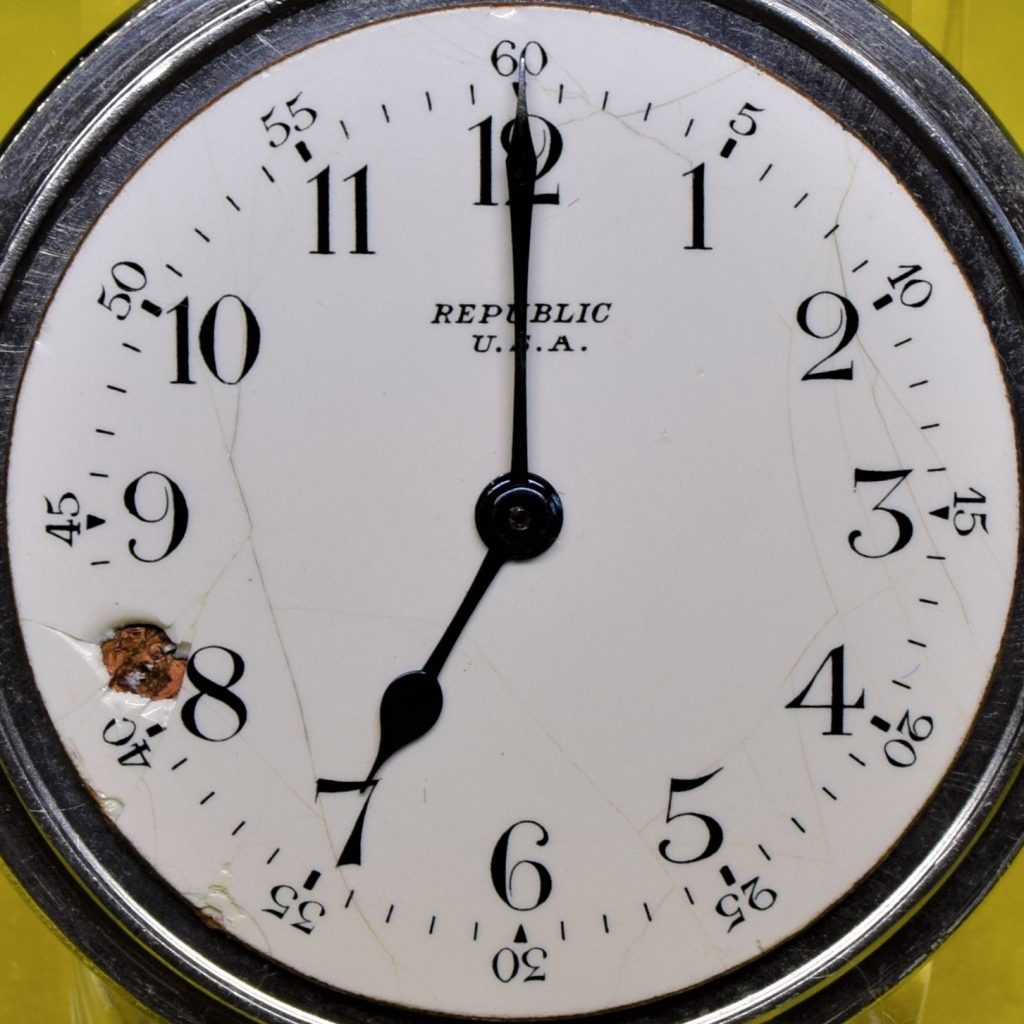
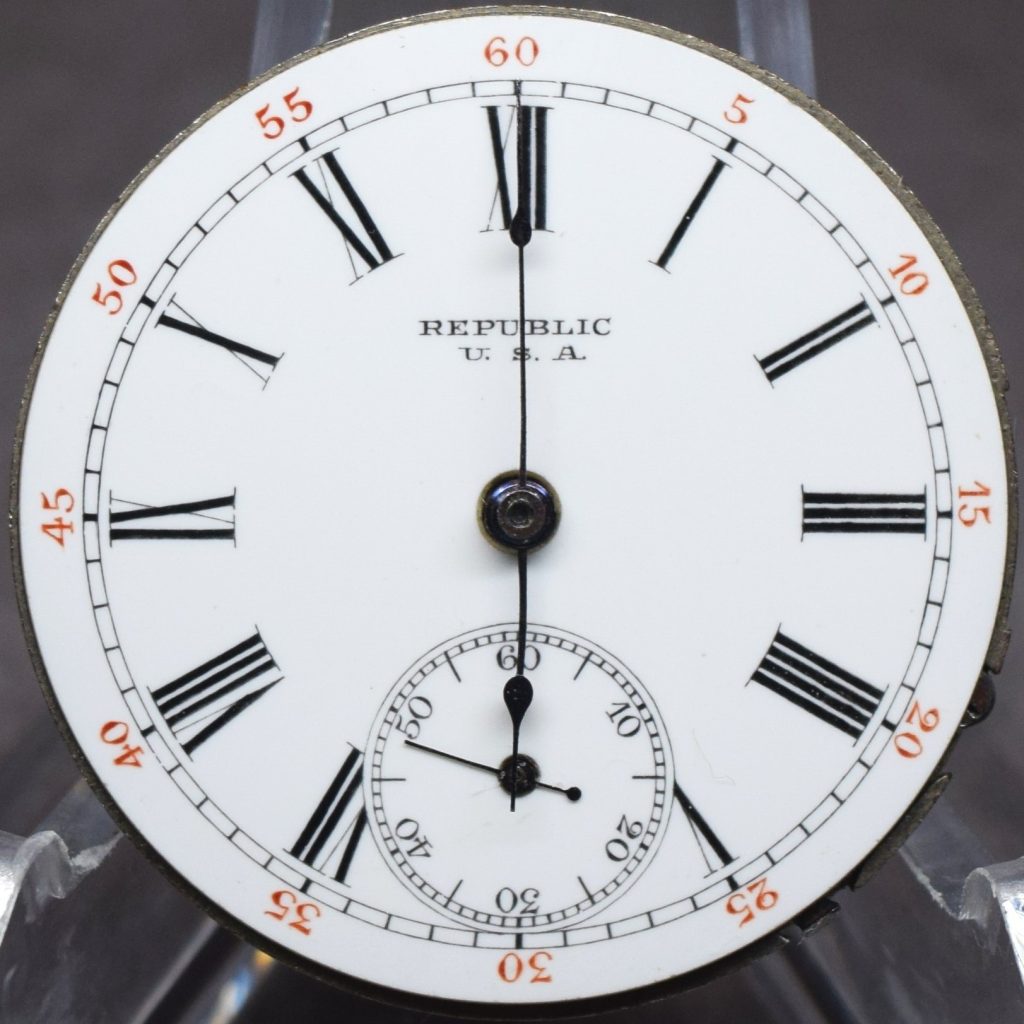
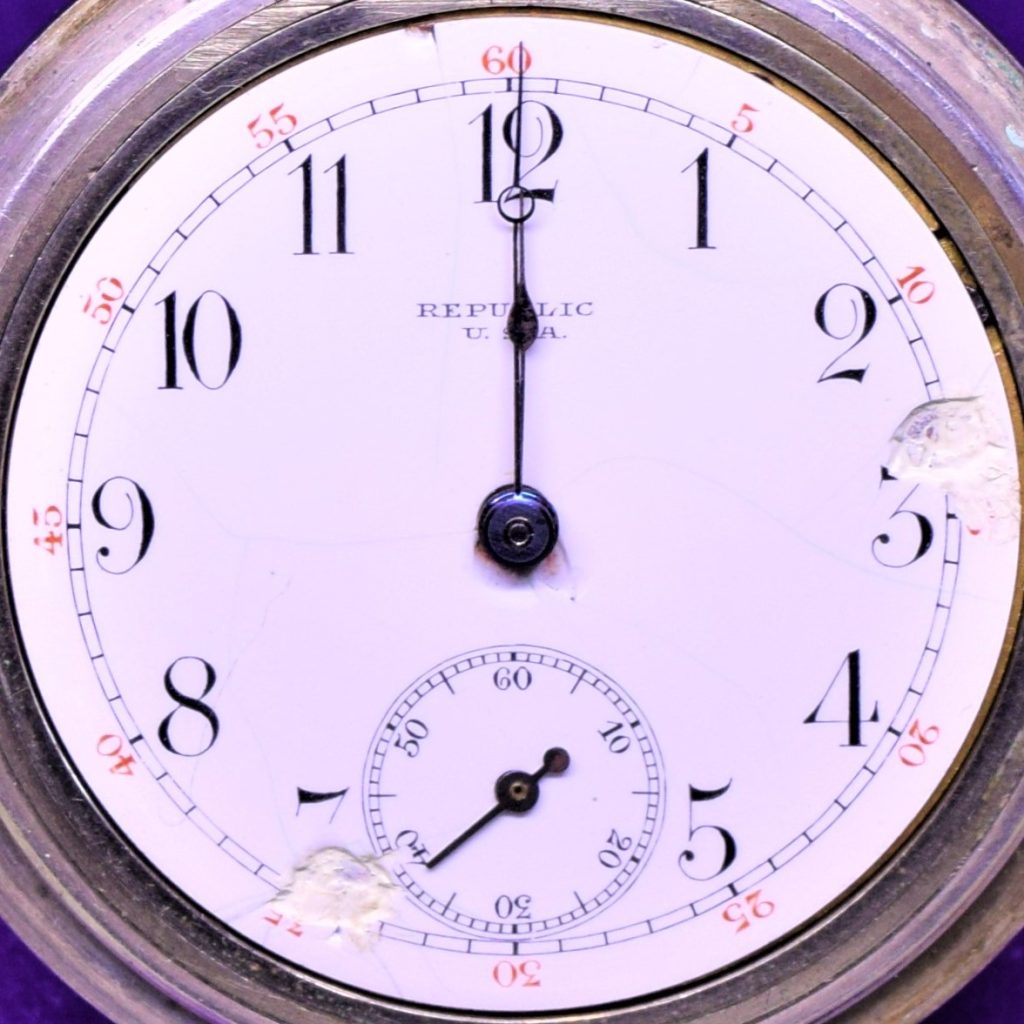
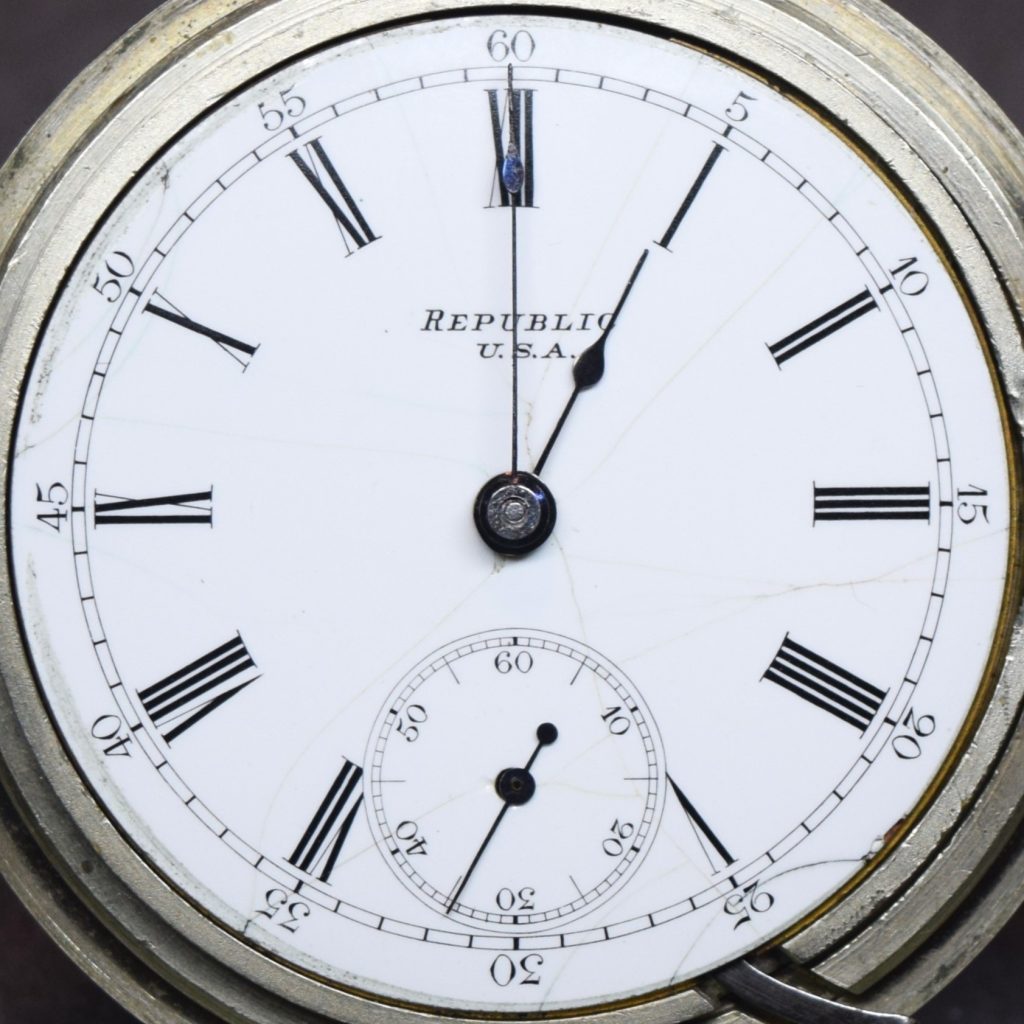
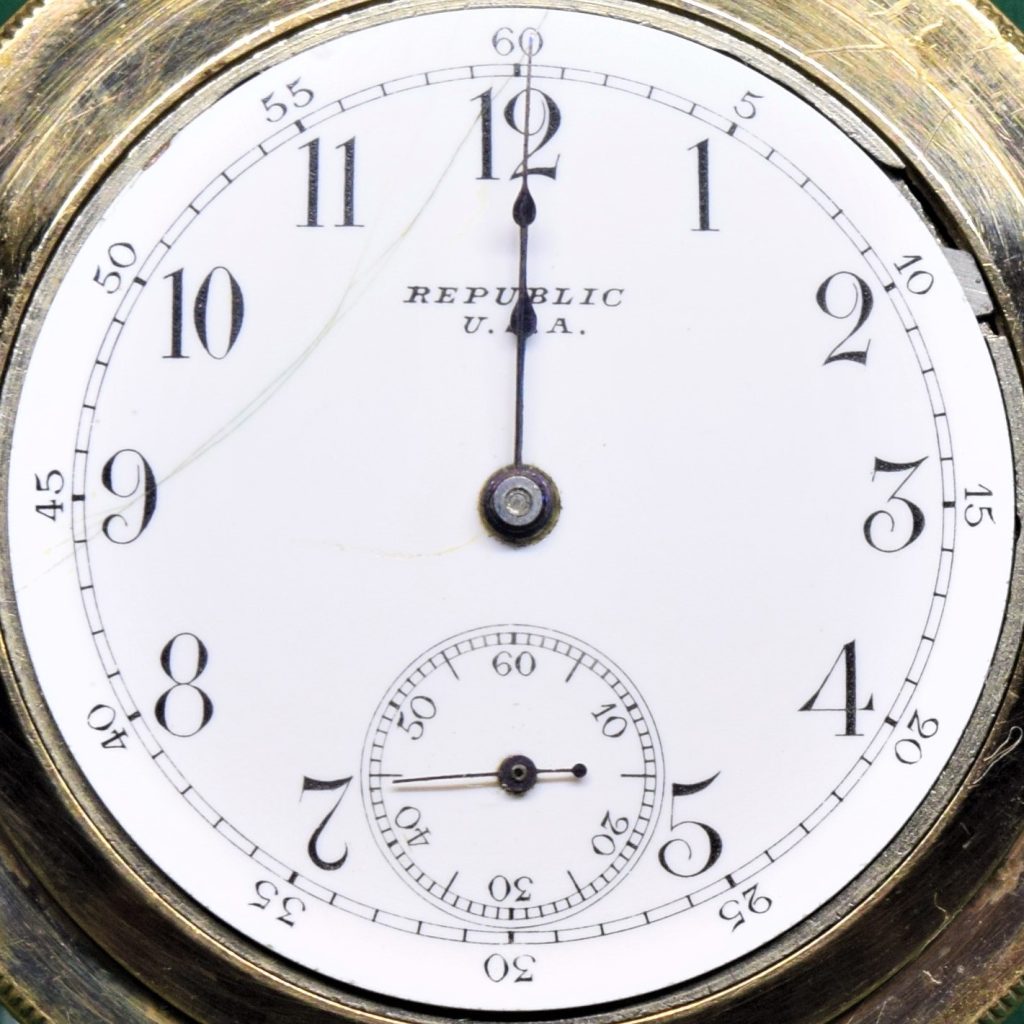
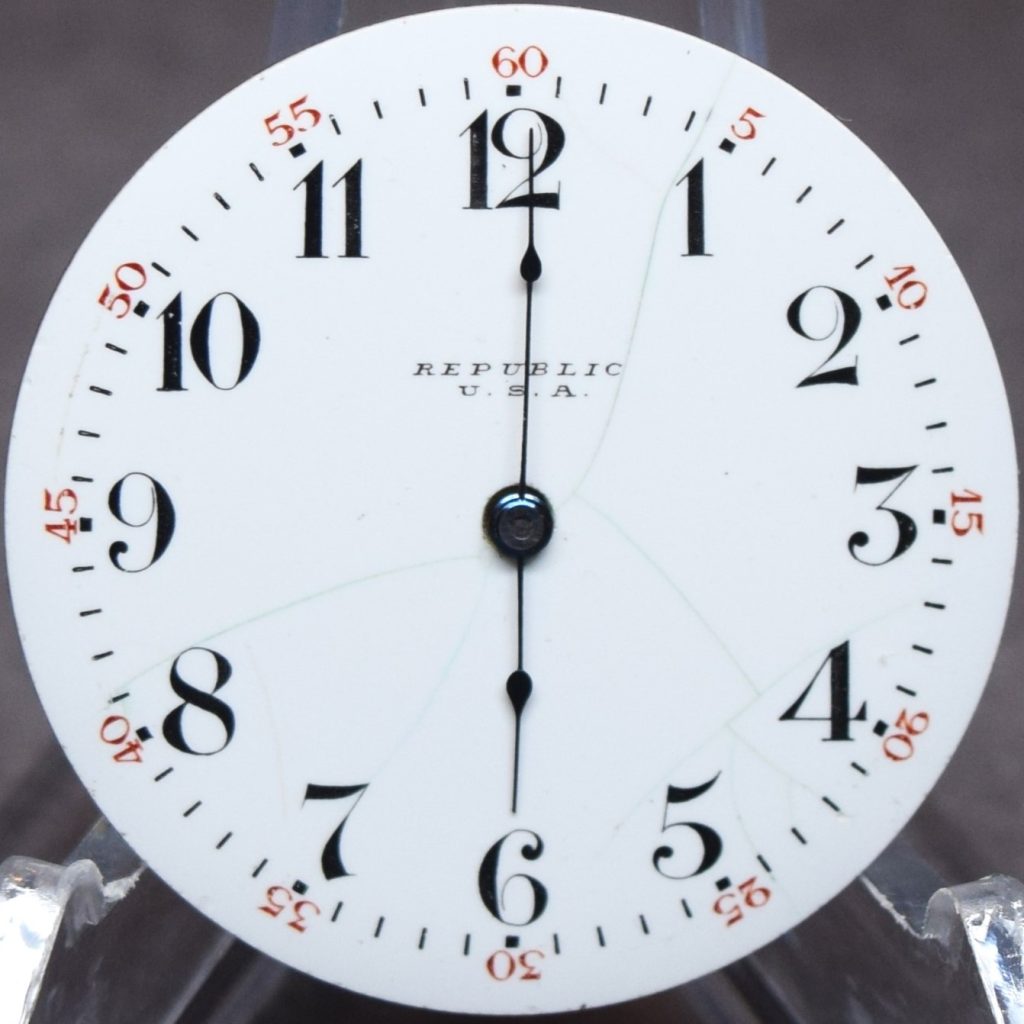
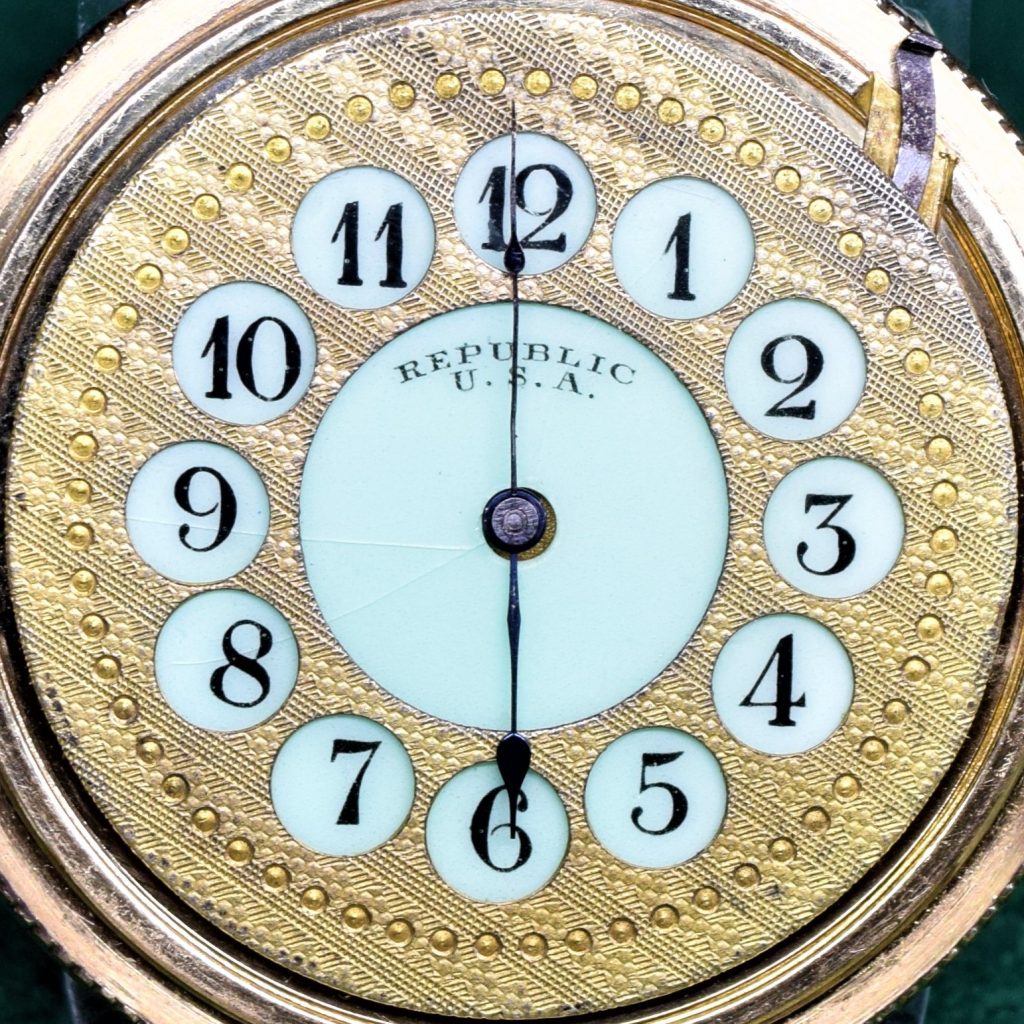
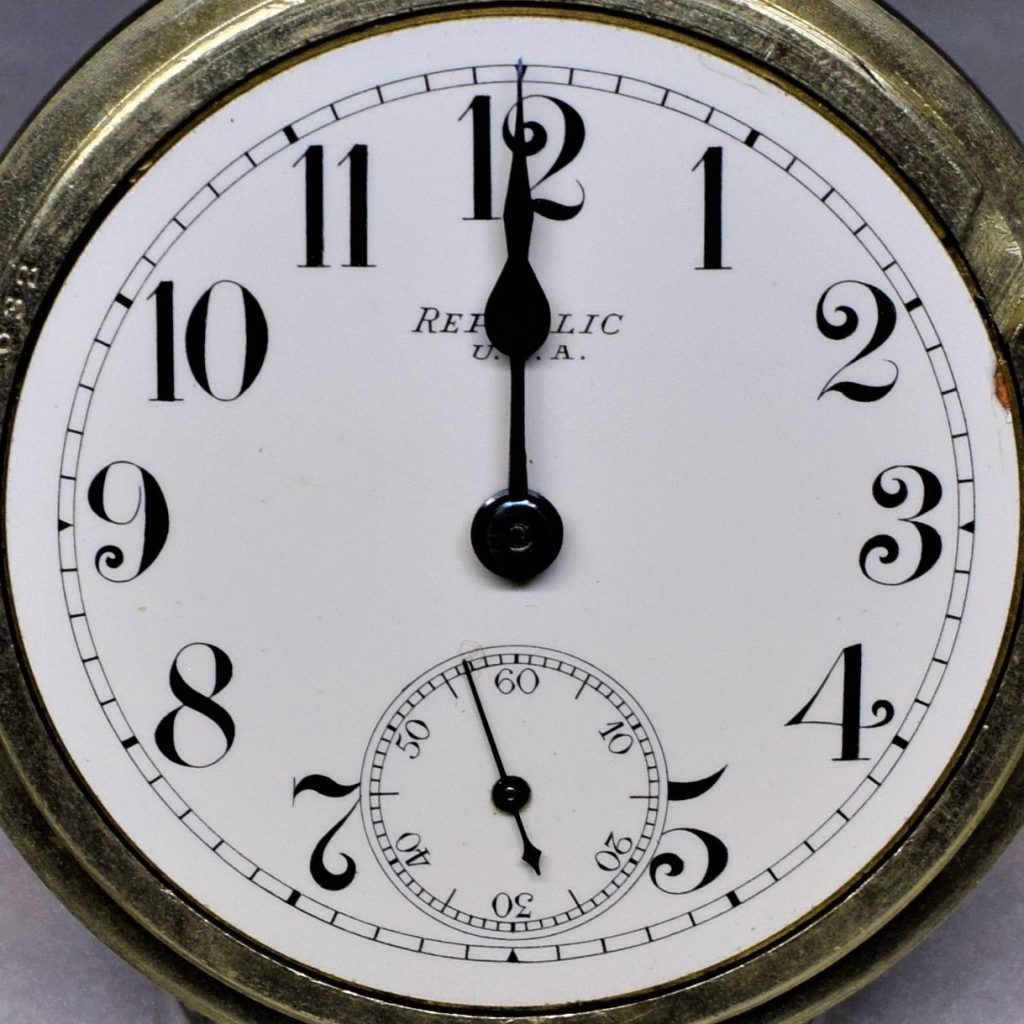
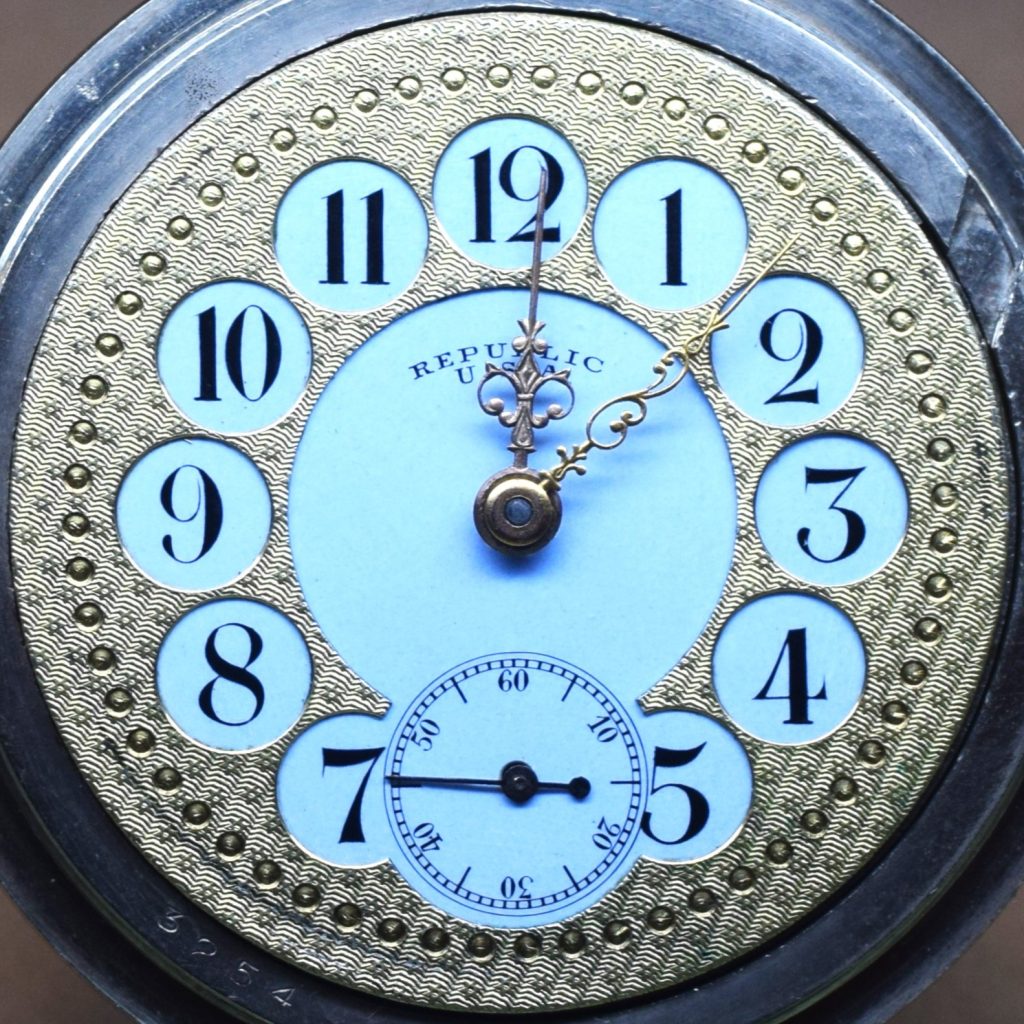
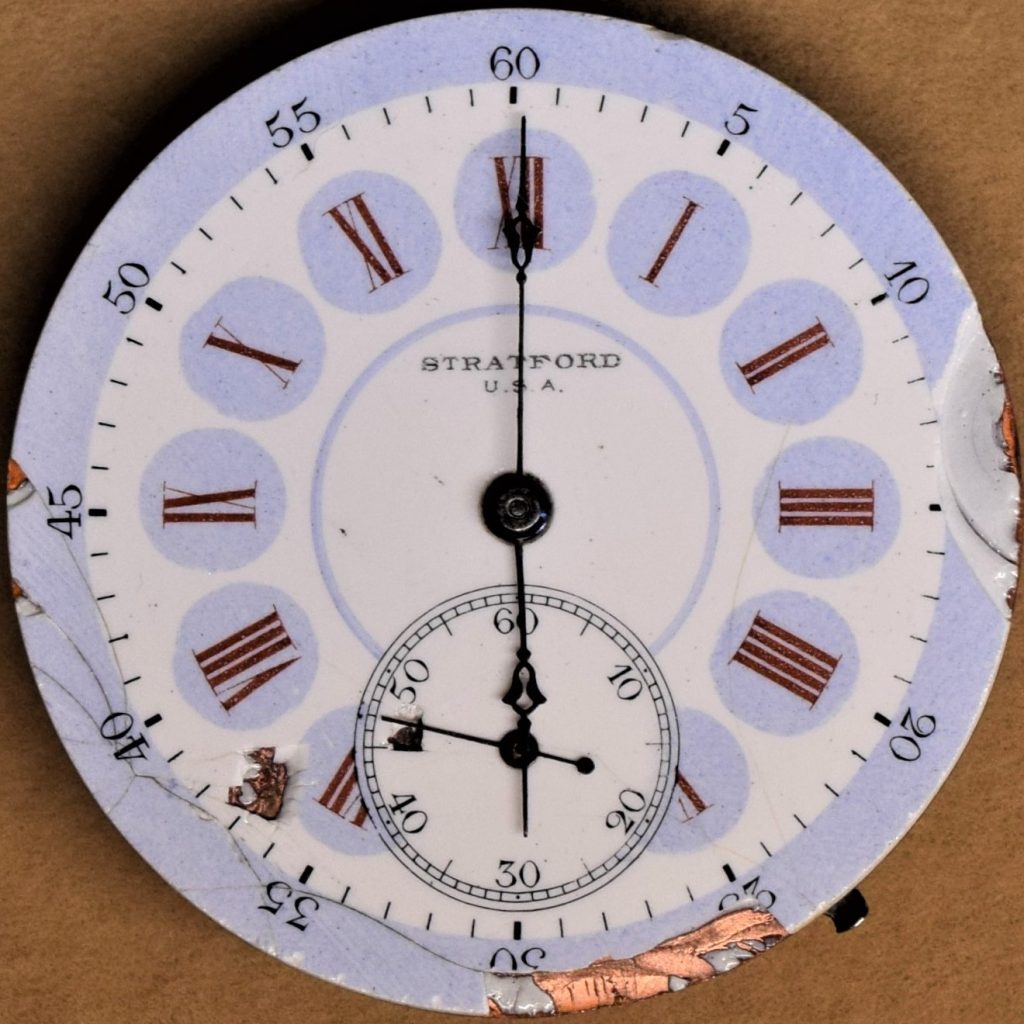
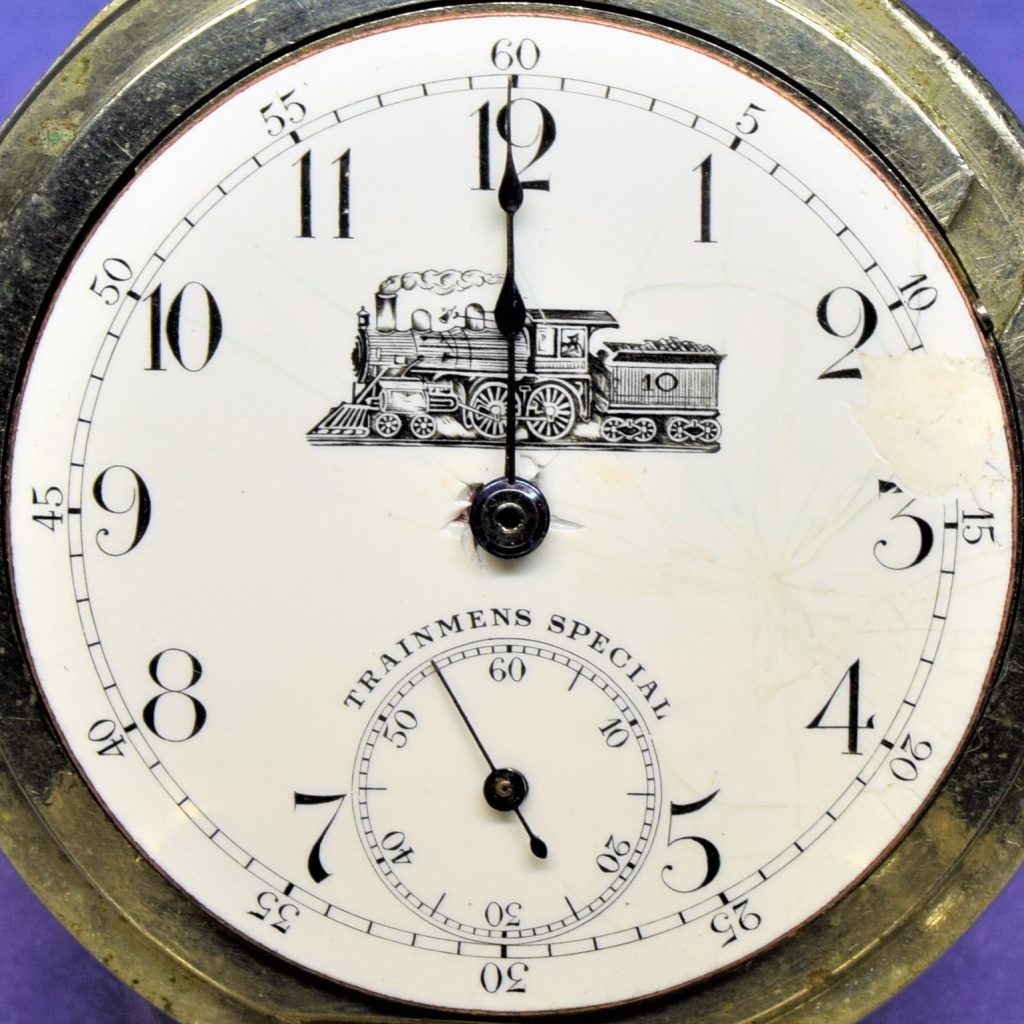

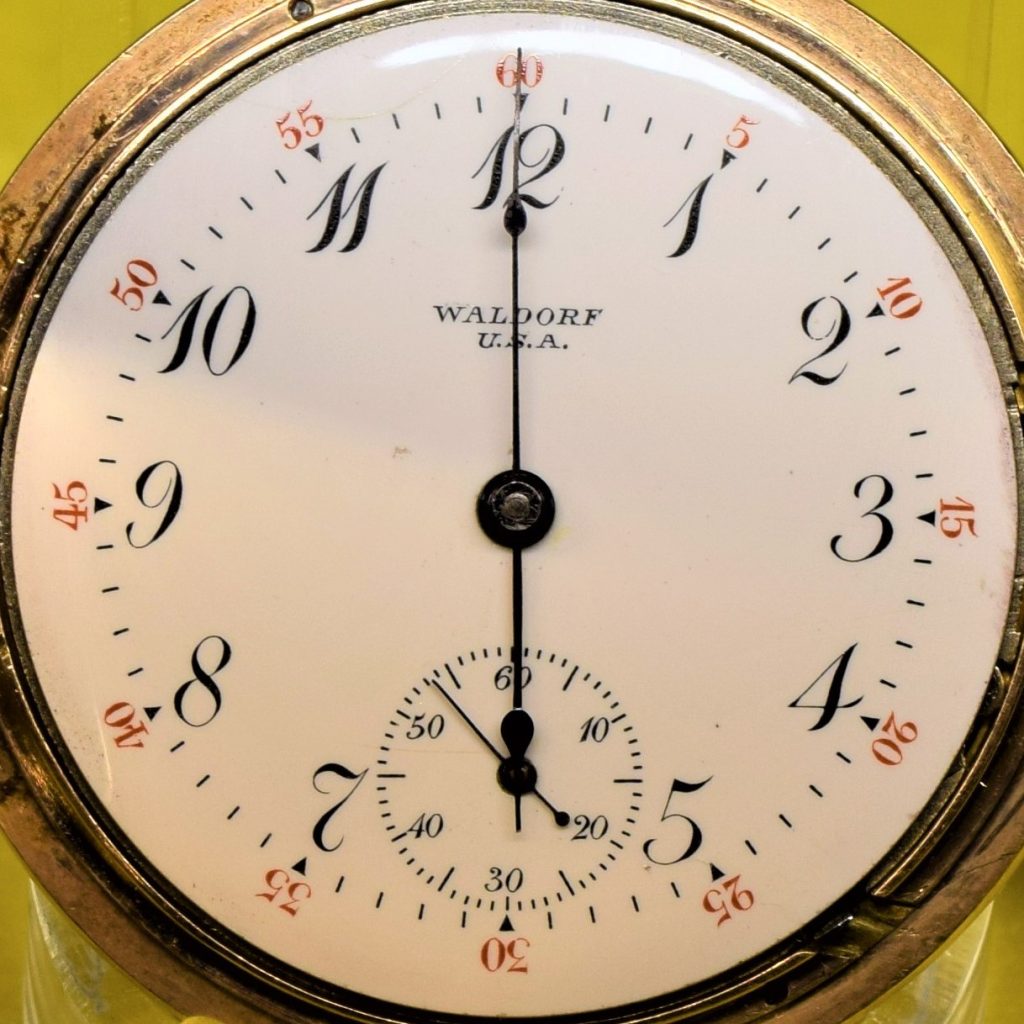

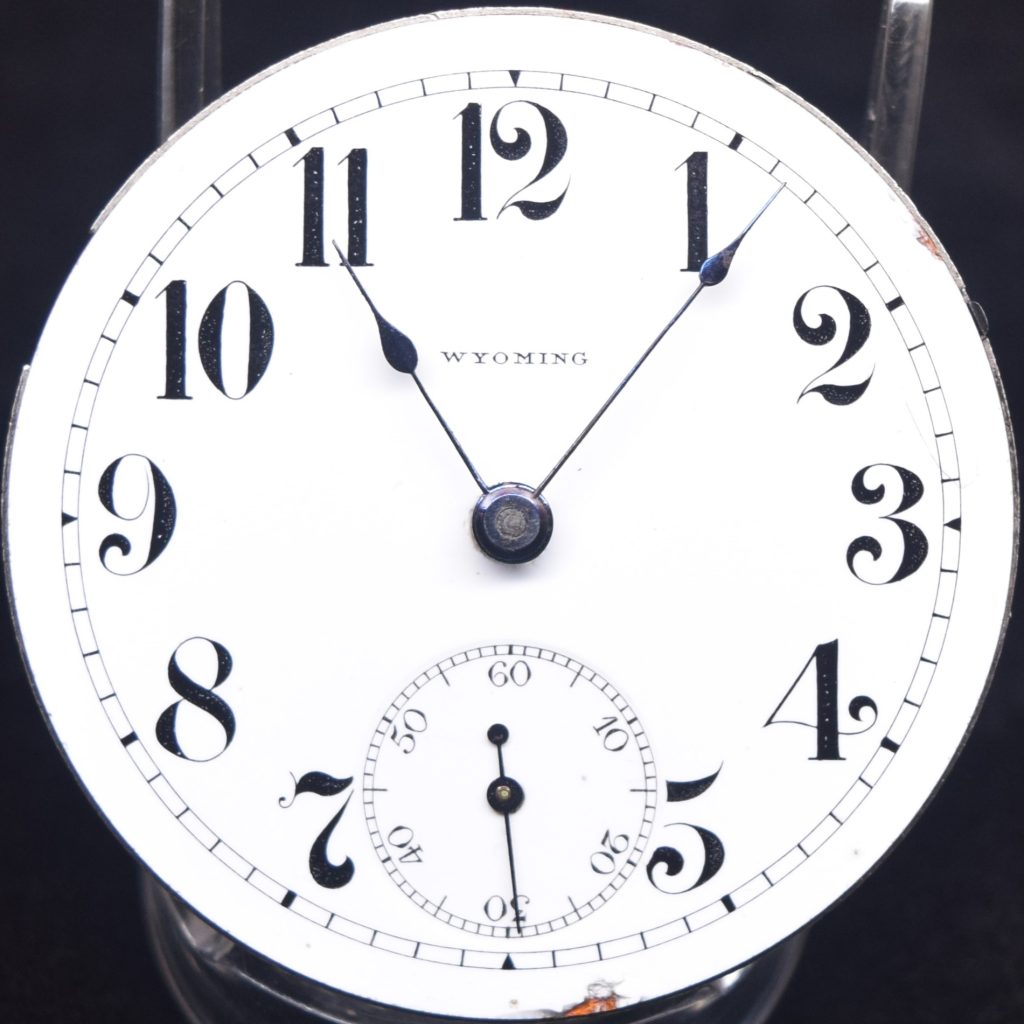
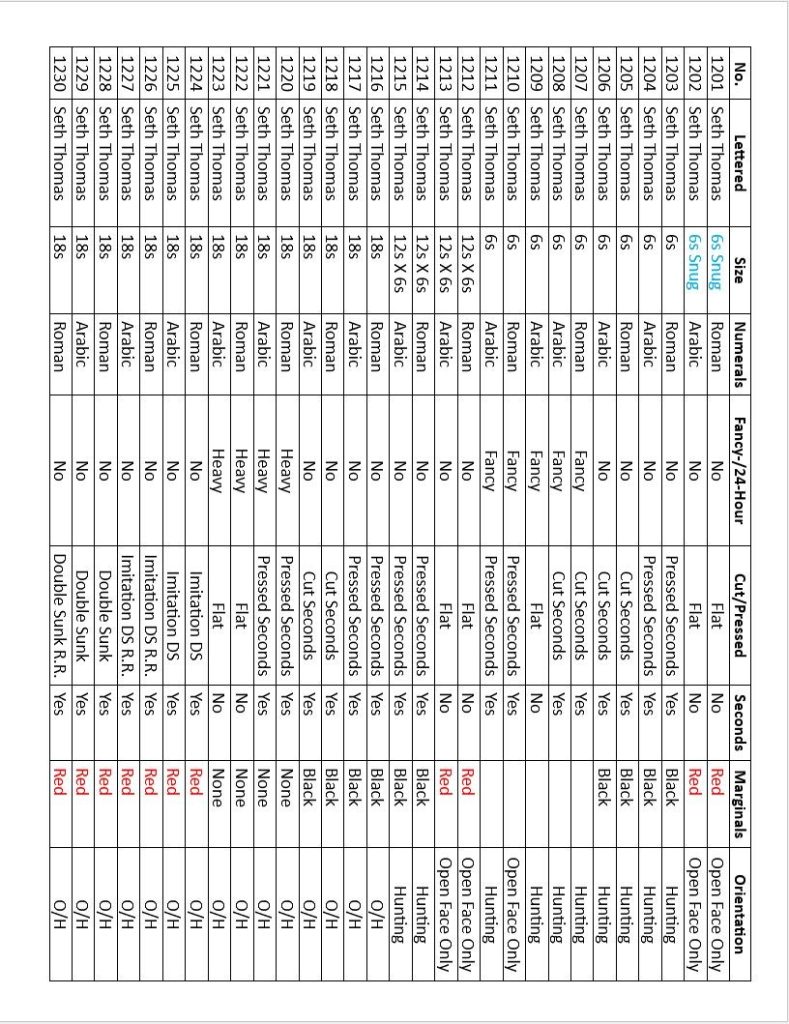


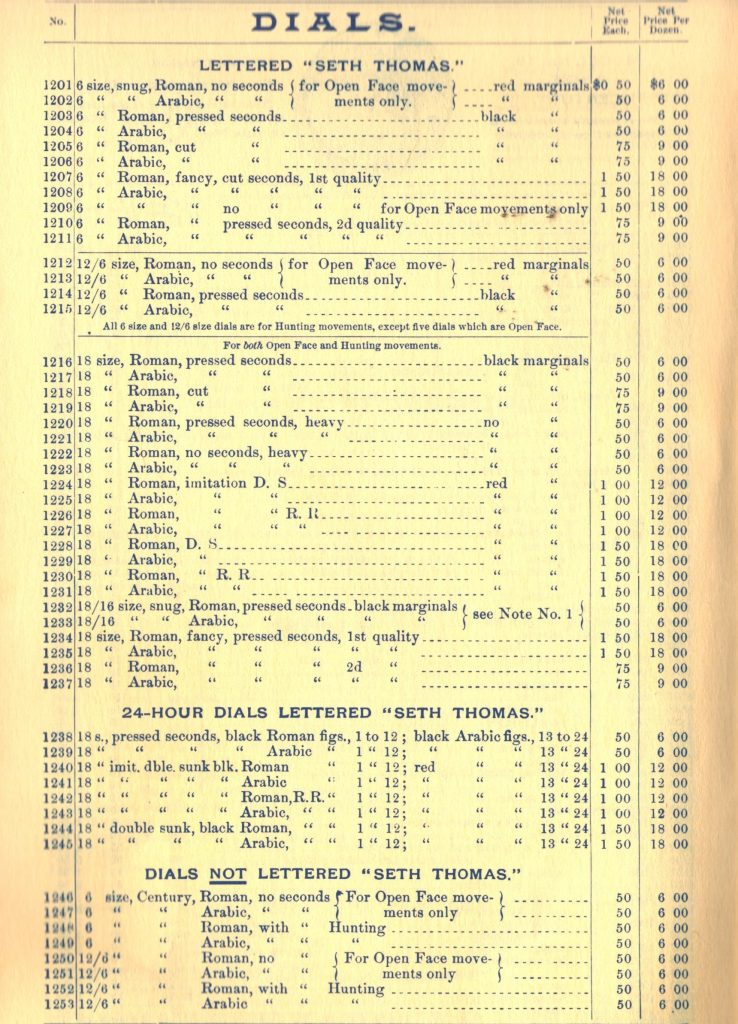

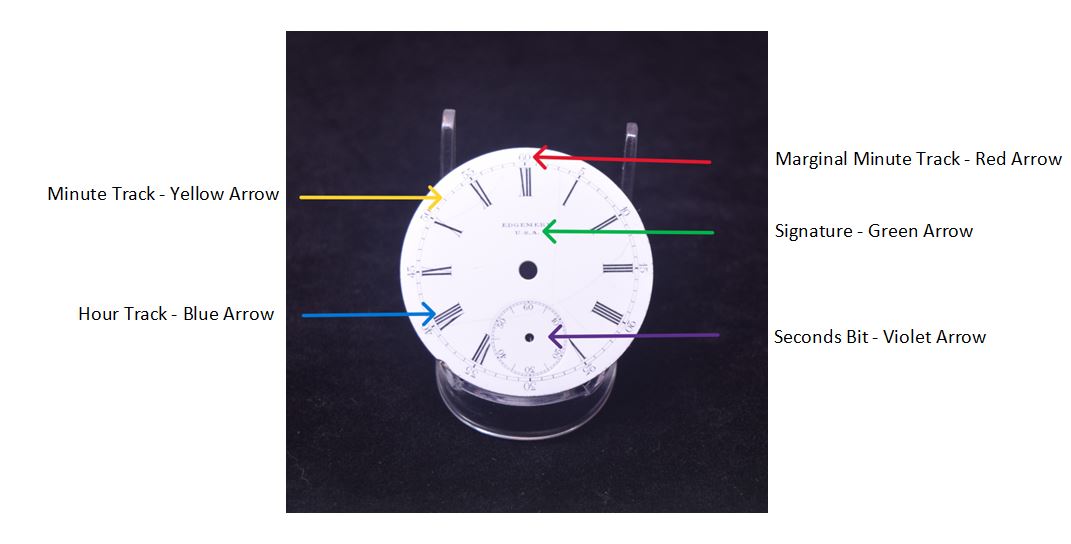
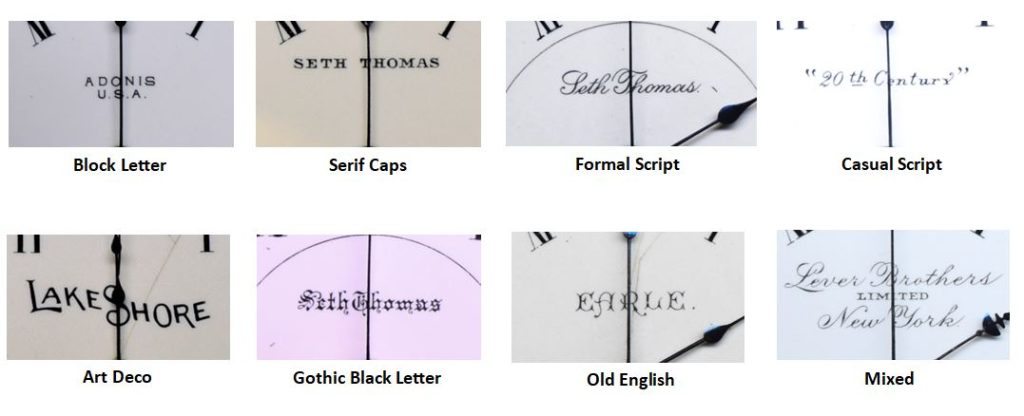

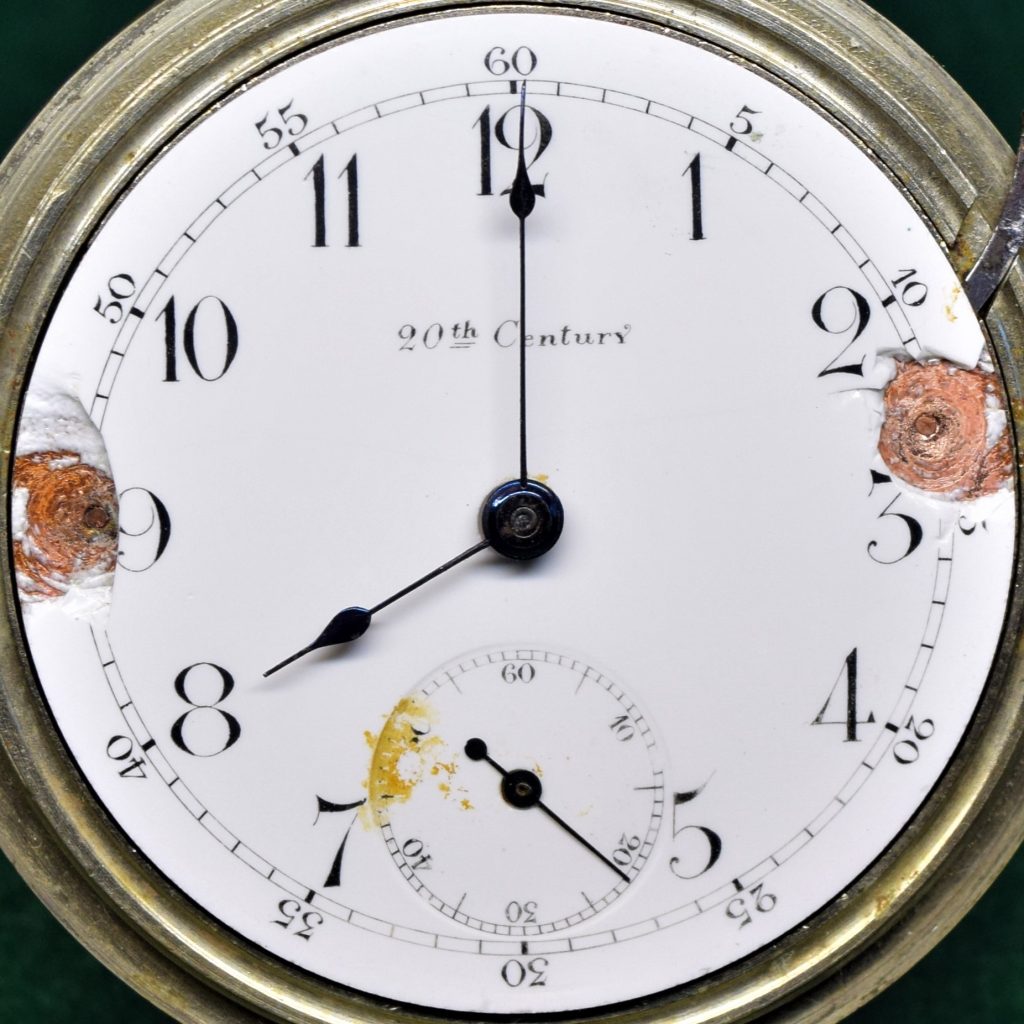
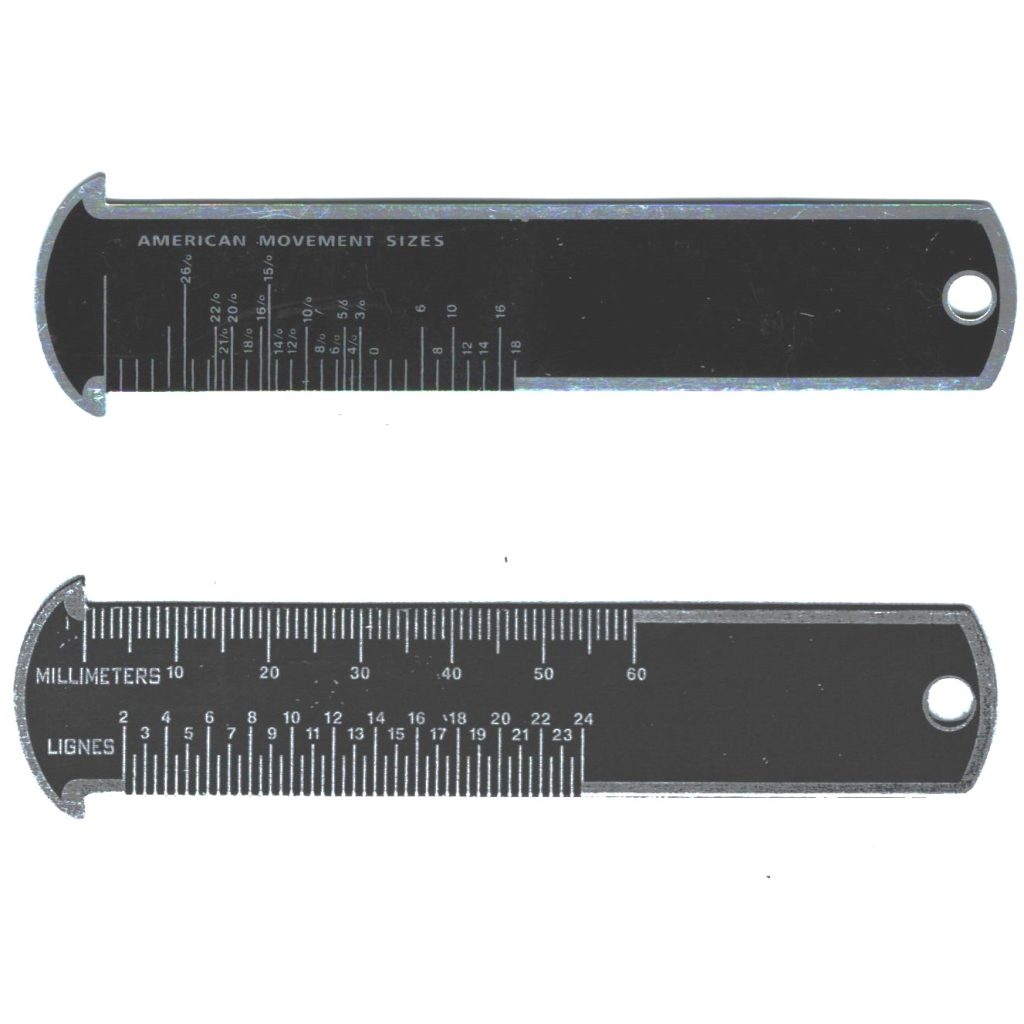


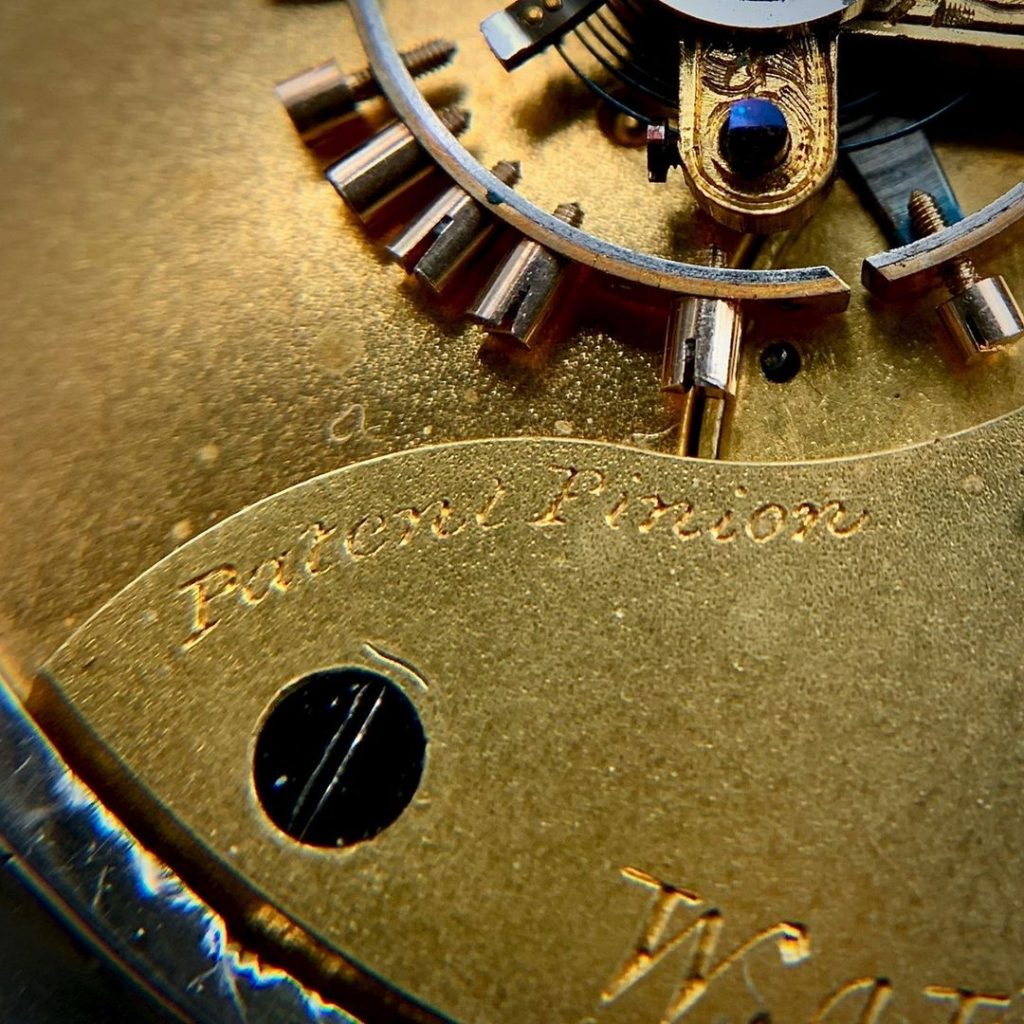

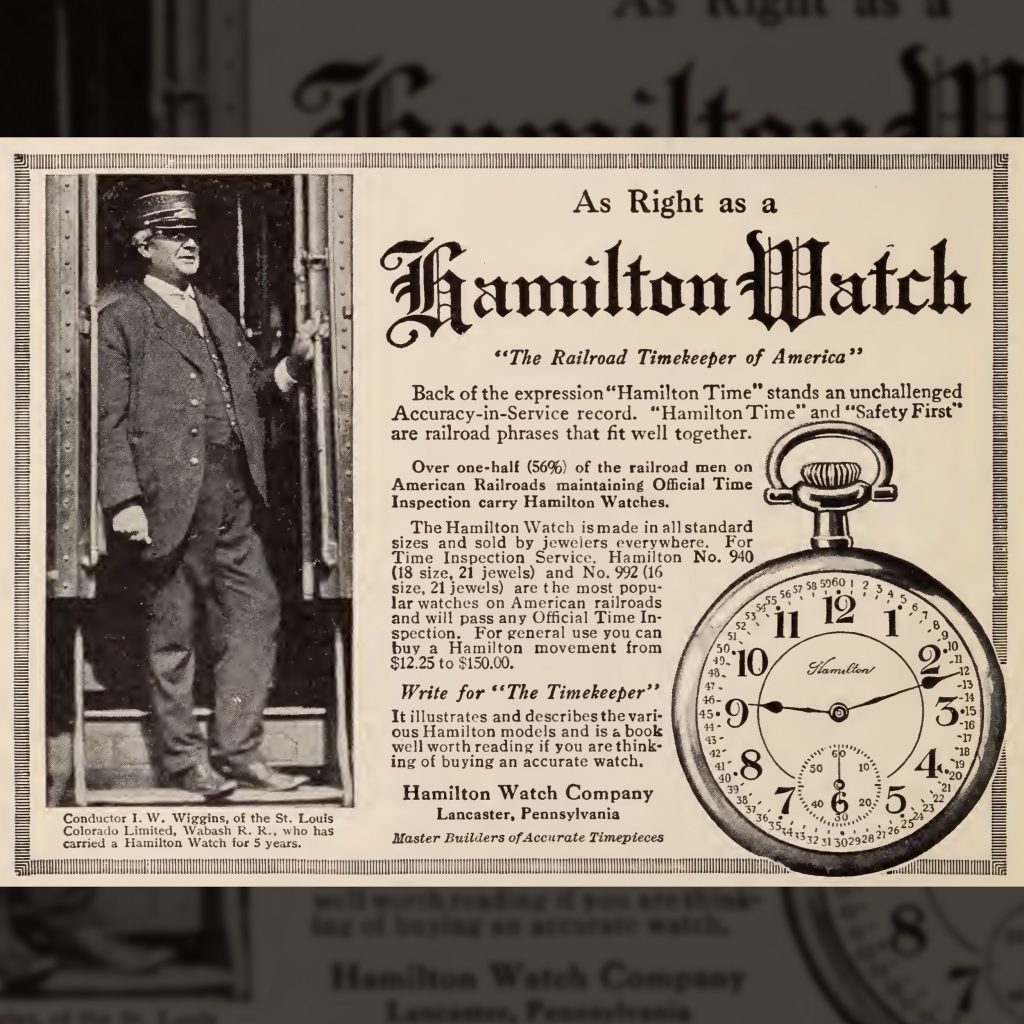
The Illustrated Guide to Seth Thomas Pocket Watch Dials is very interesting and most informative.
As a novice pocket watch collector this is something I will definitely keep near to hand as a reference.
Thanks
I hope that it can help.